






“The
police called writing on two pieces of plywood ‘destruction of property’ and used that as a reason to viciously attack protestors.”
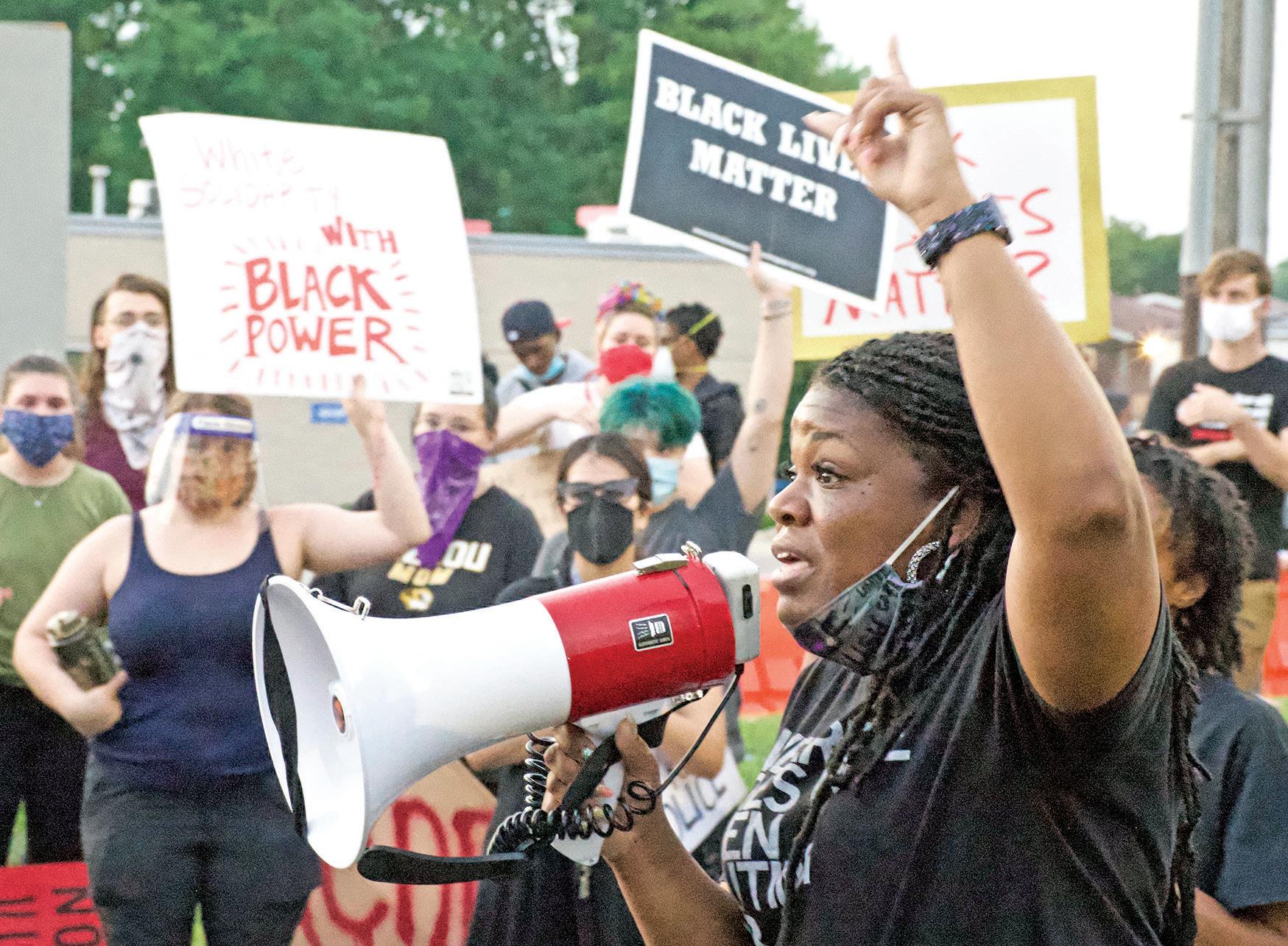
Expect Us organizer Cori Bush addressed protesters on Sunday, July 5 before a protest at
Department.
Youth says police taunted him by name in ‘sneak attack’ at
By Sophie Hurwitz
Elijah Foggy, 19, was injured by Florissant Police officers on Sunday, July 5 during a protest action organized by Expect Us. He sustained lacerations to his face, arm and leg from the police officers who arrested him. That was after he was doused with mace. Foggy said the police officers came for him by name after he had retreated from Florissant Police Department property as ordered.
n “There can be no real police reform as long as police officers continue to conduct themselves as thugs.”
– Rev. Darryl Gray
“One officer came up and was like, ‘Come on, Elijah; come on, Elijah,’” Foggy said.
“He was taunting me, trying to get me riled up. I didn’t know there were officers who were sneaking up behind me to do a sneak attack.”
Foggy has been photographed and identified by name while leading recent protest actions. Foggy said that four officers pushed him to the ground and pinned him there. “They dragged my head into the concrete – literally,” he said. “That’s why I have that big gash on my forehead. Another person had his knee on my back. When they were trying to turn me over, I was complying.”
Florissant Police said that Foggy had to be restrained because he resisted arrest after
McCloskeys claim alleged directions to nanny are ‘a hit job’
If the McCloskeys have, in fact, embraced the Black Lives Matter movement, this was a dramatic shift from their position in the mid1990s, when they advertised for a live-in nanny for their child, according to someone who applied for the position. The McCloskeys’ former nanny candidate, who did not want to be identified for fear of retaliation, shared with The American four
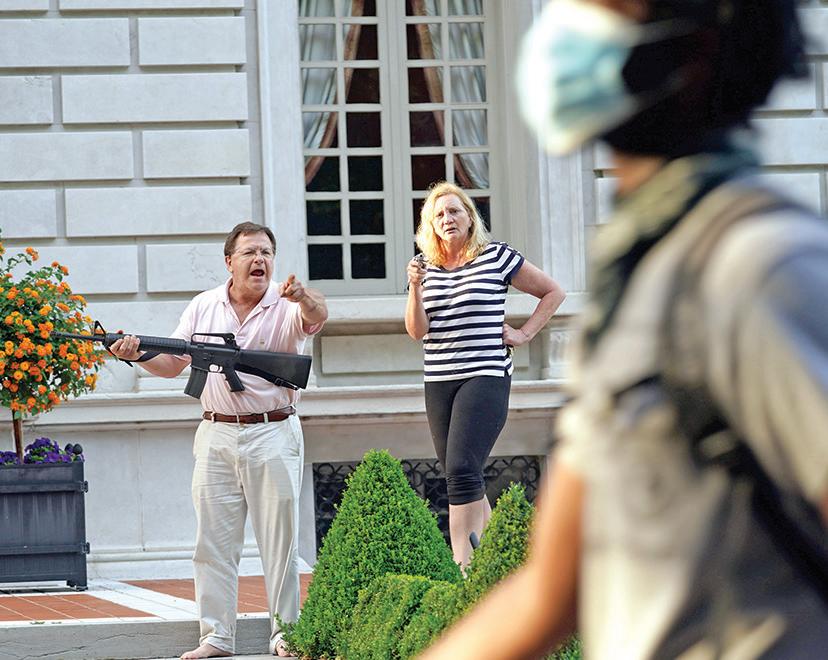
Pandemic continues to hit Blacks harder as numbers rise again
By Rebecca Rivas Of The St. Louis American
If you’re Black, you’re almost four times more likely to test positive for COVID-19 in the St. Louis metro area, hospital experts say. You’re 2.5 times more likely to be hospitalized and 1.5 times more likely to be admitted to the intensive care unit (ICU).
n On Monday, July 6, the task force reached a new milestone of discharging a total of 3,002 COVID-19 patients to date.
“This tells a story that we’ve said before — that COVID disproportionately affects the Black community,” Dr. Alex Garza, incident commander of the St. Louis Metropolitan Pandemic Task Force, said during a June 15 press briefing. “We’ve finally been able to generate some numbers to show that discrepancy.”
These statistics from the task force are based on hospitalized patients at the region’s four largest healthcare systems: SSM Health, BJC HealthCare, Mercy and St. Luke’s Hospital. They represent 2.8 million people for an area that includes surrounding counties in Missouri and Illinois.
At the task force’s hospitals, about 25% of patients tested for COVID-19 were Black — yet they made up 50% of the positive results. African Americans only make up about 19 percent of the region’s population.
“The white population is much larger than the Black community, so you can see the discrep-
‘Now they’re moving us again’
By Sophie Hurwitz
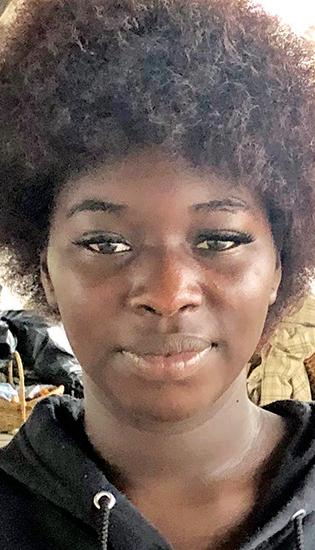
Asia Morgan
and decorations like string lights and flowers. Buckets were left out the morning of June 30 to catch the pouring rain and keep it from seeping into tents. That morning, however, the mood in the settlement was tense: the city had warned it would evict

Rickey Smiley’s daughter shot multiple times during road rage incident
Comedian and top-rated radio personality Rickey Smiley shared that his daughter was one of three people shot during an alleged road rage incident on Houston’s south side on Sunday, July 5.
Smiley, who hosts “The Rickey Smiley Morning Show,” said in a video he shared to his social media pages that his daughter, Aaryn Smiley, was shot three times in a road rage incident in Houston while making a trip a fast food restaurant.
my daughter lifted in prayer,” Smiley said via Instagram. “And to everyone who has sent well wishes her way.”
Is Kanye’s presidential run a tactic to help Trump?
Kanye West took to Twitter on the Fourth of July to officially announce he is running for president.

“‘The fact that she’s laying up in the hospital and probably going to have to go into surgery ... She’s just crying, she’s scared, and I just hate it,” Smiley said. “I’m just so thankful to God for covering my daughter. She’s in the hospital, but I could have been over at the funeral home today.”
Smiley later updated fans on Monday with the news that his daughter was out of surgery.
“Thank you to everyone who is keeping
“We must now realize the promise of America by trusting God, unifying our vision and building our future,” West tweeted. “I am running for president of the United States!” He then added the hashtag #2020VISION.
In an interview with Forbes, West said he is running for president as part of the “Birthday Party.” He also said he plans to model after the fictitious Wakanda – of “Black Panther” fame – and that he has never voted in an election.
When asked if he was running for president as a rouse to split the Black vote to give Donald Trump a competitive edge in his bid for reelection, West had an interesting response.
“I’m not denying it, I just told you,” West said, according to Forbes.com. “To say that the Black vote is Democratic is a form of racism and white supremacy.”
The interviewer also noted that Kanye signed off on several of their email conversations with “Trump 2020.”
West said during his acceptance speech for the Michael Jackson Video Vanguard Award during the 2015 MTV Video Music Awards that he was planning to run for president in 2020. He has since hinted at running for the nation’s highest office – but most of his statements referred to a 2024 bid.


worked with “African creatives” on the new album, which is slated to be released on July 31. In an Instagram post, Lawson insisted that her daughter “dedicates her art to boldly show the royalty and beauty of our heritage and journey.”
“It’s really sad that the women who shout, ‘protect the black woman’ are the ones that are trying to tear her down,” Lawson said. “Sisters wake up. Beyoncé was taught from a little girl to lift other women up not to tear them down. She minds her own business, does not criticize anyone and gives of her time and money.”
Lawson said that the upcoming project was created to “change the narrative” surrounding Black History.
Mama Tina claps back to shut down criticism of Beyoncé’s ‘Black Is King’
Tina Lawson had some words for critics of her daughter Beyoncé’s “Black Is King” after Beyoncé was accused of “appropriating” African culture for the upcoming visual album.
The project is based on the soundtrack she produced for the 2019 remake of “The Lion King.” Lawson Tina insisted that Beyoncé is of “African descent” and has
“[It’s] to show that we did not start off as slaves – but that we were kings and queens before we were forced into slavery. Don’t you want to see something that shows that?” Lawson said. “Aren’t you sick and tired of seeing us as slaves? She employs African and African American people, fights for many ‘firsts’ in the fashion and film world. Take an inventory of yourself and your hate. Where is it coming from?”
Sources: Instagram, YouTube.com, Forbes.com, Twitter.com
Have you, or someone you know, experienced loss of a job or home due to COVID-19, and are looking for quality child care?
Enroll your child ages 6 weeks to 5 years into the YWCA St. Louis Early Education Program. Go to www.ywcastl.org to begin the enrollment process today!


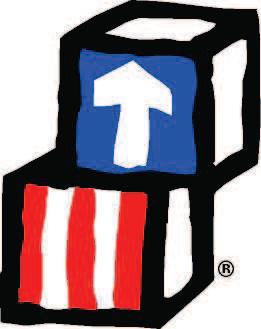
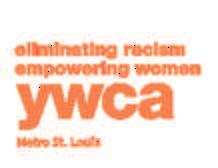
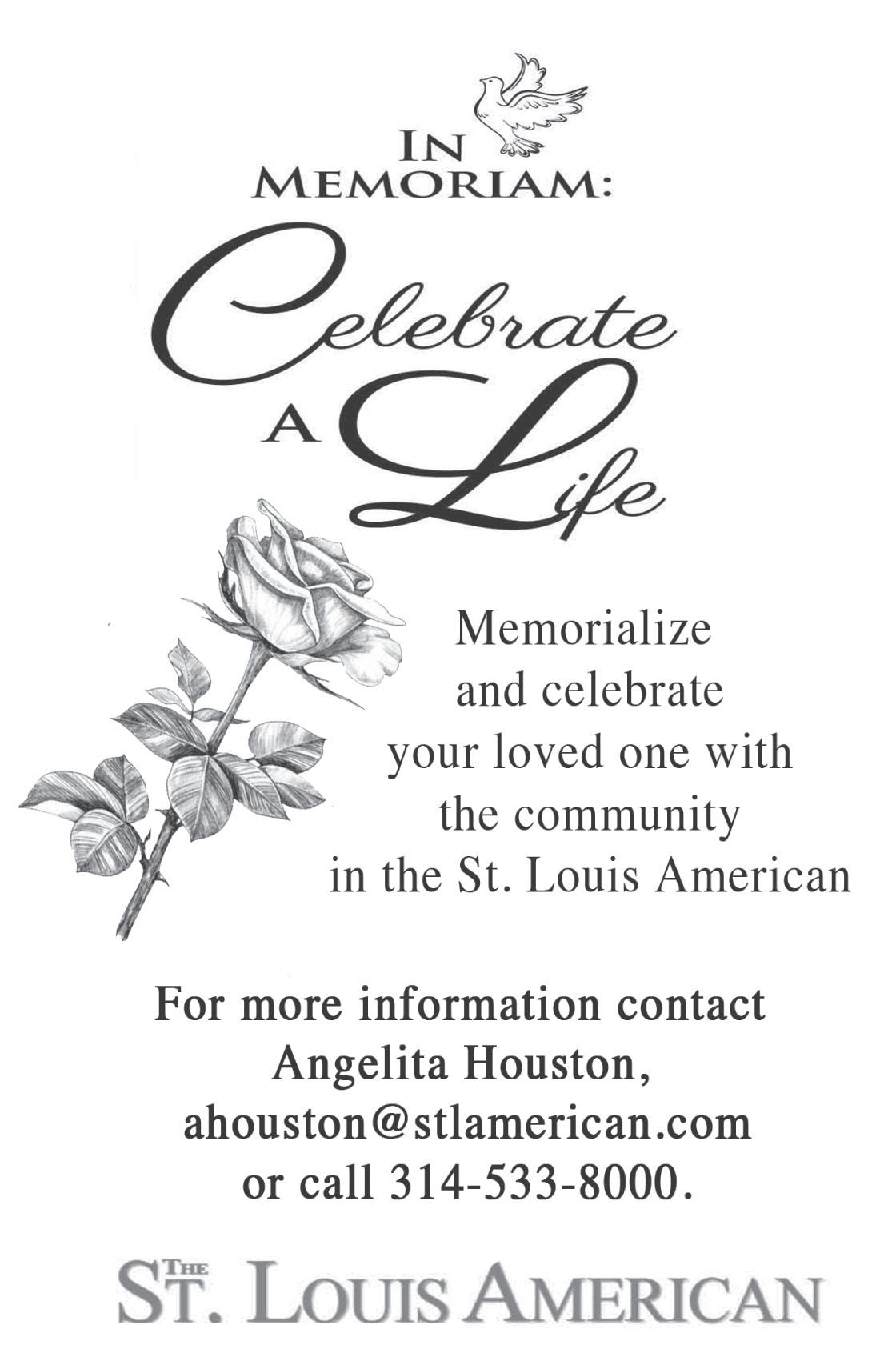
‘I’m hoping to meet other families who’ve been through what I’ve been through’
By Ramona Curtis Of The St. Louis American
When George Floyd cried out for his mother, mothers who have lost children at the hands of police cried out too.
The first National Mothers March, to be held July 11-12 in Minneapolis, hopes to answer those cries through solidarity and collection action.
“Last month when (George) Floyd was taken from his family, his sister talked about when he cried out for his mother, that he really was crying out for all mothers to come together and stand in solidarity,” said Toni Taylor.
port football quarterback Colin Kaepernick. The protest included many mothers who have lost their children to police violence including Michael Brown and Tamir Rice.
n The first National Mothers March, to be held July 1112 in Minneapolis, hopes to answer the cries of mothers who have lost children at the hands of police through solidarity and action.
Taylor’s son, Cary Ball Jr., was shot by St. Louis police 21 times when he was killed in 2013. Taylor was joined on June 30 by Gina Torres, the mother of Isaiah Hammett, who was killed by St. Louis Metropolitan Police SWAT in a no-knock raid on his home in 2017. The two are part of a local group called Mothers of Children Murdered by Police.
The march is organized by Take A Knee Nation, which was formed to fight police violence. In 2018, the group held a conference and protest during the Super Bowl to sup-
In addition to demanding the end to police violence, march organizers are asking that all cases involving police violence be reopened and that “killer cops involved be prosecuted to the fullest extent of the law,” according to the Take A Knee Nation website. The two-day event will include Saturday workshops on topics like ways to seek justice and selfcare through journaling. On Sunday, the group will march to the state capitol building. Taylor said that she also hopes to network with others who have been working to get the police responsible for killing their loved ones prosecuted. No one was charged in the death of her son.
“My case was moved to the feds,” she said. “But what I’m finding out seven years later is that basically it was a political trick to bury the case.”
No charges were brought against the officers who killed Torres’ son either, although she currently has a lawsuit pending against the city. She said she hopes the march will unite fam-
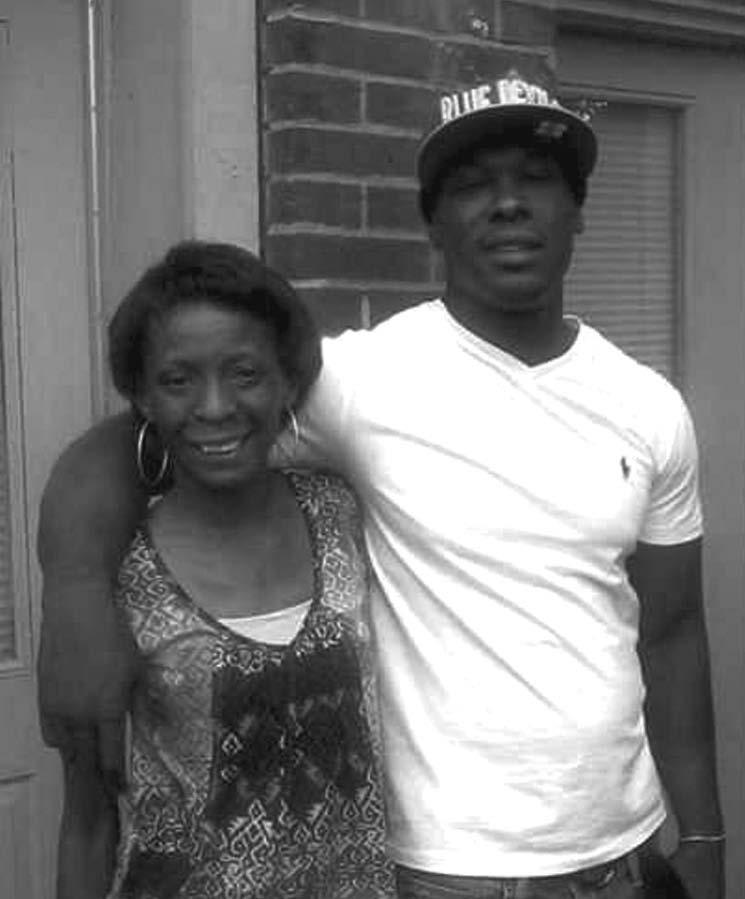
ilies seeking justice and give them a collective voice.
“I’m hoping to meet other families who’ve been through what I’ve been through,” she said. “We’re about justice for all, not just our sons. We’re in this fight together. I’m hoping to meet other families to join us together because if we don’t stick together, nothing is going to happen, they won’t take us seriously.”
Taylor said that while they hope to see “mother, fathers, brothers, sisters, aunts and

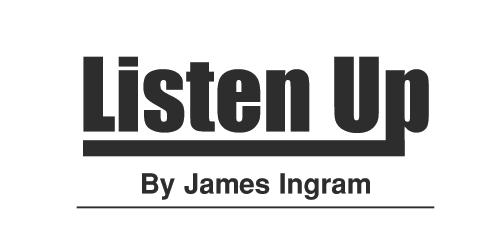
By James T. Ingram For The St. Louis American
“Something’s happening in
America,
something some of us did not see coming,” said Congressman John Lewis, when the civil rights icon switched his presidential endorsement from Hillary Clinton to Barack Obama in 2008.
The events of the past four months have me feeling those same sentiments: a global pandemic and concurrent economic meltdown, international protests in the streets over police brutality and killings of unarmed AfricanAmericans – George Floyd, Breonna Taylor, Rayshard Brooks and God knows how many more by the time this column makes press.
majority-Black groups, which were routinely repelled by batons, tear gas, pepper spray and dogs as recently as the Stockley verdict protests in 2017-18.
Recently, I’ve be startled at stop lights by smiling young white guys, waving from their cars, with a “power to the people” fist, windows rolled down, yelling “Black Lives Matter!” I’ve even been invited by young whites, with protest signs in tow, to attend various local events.
The optimist in me wants to believe that this is a pivotal historical movement, as I’m sure the hippies and Black Power activists of the 1960s and 1970s also believed.
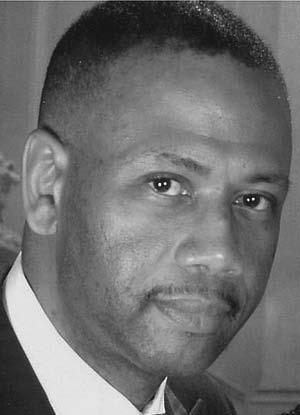
uncles,” the march taps into the power of grieving and unified mothers and their call for action.
“Mothers are the ones who birth our children,” Taylor said. “We actually feel their pain. Even though they weren’t there that night when they got killed, we felt that. And it’s just time for mothers to take this fight back into our own hands.”
For more information about the National Mothers March, go to www.takeakneenation. org.
It took all of this for the world to hit “pause” during a forced period of quarantine and reflection imposed by the new coronavirus, as America’s original virus of racism ran rampant on our TV screens and devices, without the distractions of work, sports, entertainment, restaurants and vacations.
Columnist James Ingram
Suddenly, America’s racism, injustices, and health disparities for the poor (especially for poor Blacks) were exposed to a captive audience, leading to mass global protests.
But this time chants of “Black Lives Matter” are coming from, oftentimes, majority-white and diverse protesters versus the traditional
Dr. Martin Luther King Jr. famously said that a “riot is the language of the heard.” However, being heard and allowed to vent is meaningless without substantive change.
The powerful in America are chess players and are gambling on the history of protesters being more proficient at checkers and lacking endurance. Black lives do matter. Whether they are understood to matter in the corridors of power one year or 10 years from now will be contingent upon whether this movement does not devolve into simply another moment or, simply, a mirage.
Email: jtingram_1960@ yahoo.com; Twitter@ JamesTIngram.
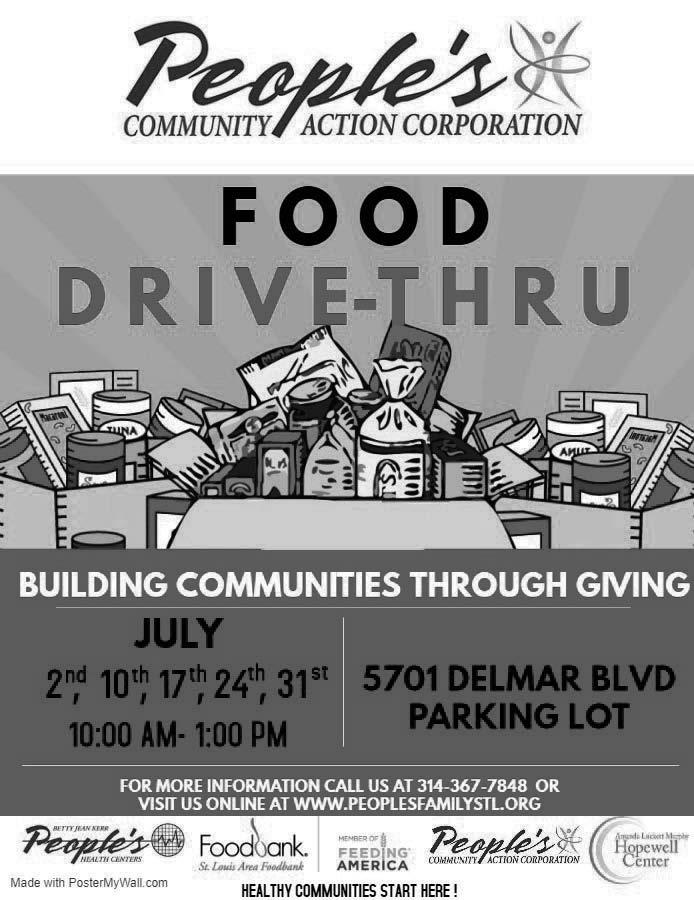
We have another full month of endorsements before the Tuesday, August 4 primary election. This will be an important election, and we hope people are checking to see that their voter information is current with the local election authority and with the State of Missouri. Last week we endorsed Yinka Faleti for Missouri secretary of state, wanting an upgrade in our state’s highest election authority. We also endorsed Nicole Galloway for Missouri governor. Galloway has distinguished herself from the incumbent Republican governor in supporting Medicaid expansion, which Parson opposes. If we vote to pass Medicaid expansion — as Amendment 2 on the August 4 ballot — we will need Galloway in power to implement this crucial measure rather than stifle it, as Republicans are trying to do with other progressive ballot initiatives that have passed statewide. Voting yes on Amendment 2 for Medicaid expansion in Missouri may be the single most important reason to go to the polls on August 4. We have posted and printed more than a dozen pieces arguing for Medicaid expansion, which the Republican-dominated Missouri Legislature refuses to do and which voters may now do themselves by passing Amendment 2. Advocates for Medicaid expansion argue that adding health coverage for more people through this mechanism is both ethical — health care should be a human right — and economical. Not only does the federal government absorb 90% of the cost through the Affordable Care Act, but expanding coverage also adds health care jobs, which would stimulate other job growth. Also, we are already paying for this in other ways. Federal taxes we pay are going to states that have expanded Medicaid but not to Missouri, and low-income people who can’t afford health coverage still, eventually, incur health care expenses that they can’t afford in the expensive emergency phase of treatable conditions.
Truly, the only argument against Medicaid expansion (Amendment 2 on the August 4 ballot) is the Republicans’ failed argument that health care is a private matter: You get what you pay for and let the market sort it out. Governor Parson, when he was still on the verge of being a COVID-19 denier, said there is not much that government can do about a virus. Now anyone except a pandemic denier should recognize that government must address public health as part of its core functions. Health is a public, not merely private, concern and health care is a critical
public investment. We the people can lead the way toward making this essential change in the philosophy of government by voting yES on amEndmEnt 2 to EXPand mEdiCaid in miSSoUri
In doubling up endorsements, we paired Amendment 2 with the St. Louis treasurer race since they are both no-brainer decisions where the thinking in our brain will surprise no one. Incumbent Treasurer Tishaura O. Jones has done remarkable things with an office that could be nothing more than a patronage job farm. Thanks to her leadership, thousands of St. Louis children now think of themselves as investors in their future education through the College Kids savings program. She started an Office of Financial Empowerment knowing that solidifying finances is crucial to bettering our community. She banned the felon box on job applications and raised the minimum wage in her office. She moved to protect her staff (and the public impacted by her staff) from the pandemic a week earlier than any other public official in the region or state. And she continues to be a progressive thought leader with the unapologetic courage of a smart Black woman and mother, calling on the city to Close the Workhouse, restrain and reform the police, and protect and develop our international airport as a public asset. Her opponent, Jeffrey Boyd, currently an alderman, has two things going for him. He is not Tishaura Jones — and, make no mistake, there is a political faction (with its own advocacy daily newspaper) committed to stopping her rise. And he says he would end the practice established by the City Charter of administering the city’s hefty parking revenues within the Treasurer’s Office. To these two points, we say yes, Jeffrey Boyd is not Tishaura Jones. And it remains to be seen whether a different treasurer would actually disempower his or her office by divesting in millions of dollars in annual revenue. Surely there are better ways for the City of St. Louis to organize its revenues (and almost any aspect of city government). But we know who we want in a position of authority to make the many needed changes in our city. We face myriad, unmet challenges in a city that continues to experience population loss and lack of economic and social successes. Fresh, innovative leadership should be welcomed and encouraged. We strongly endorse tiSHaUra o. JonES For St. loUiS trEaSUrEr
As I See It - A Forum for Community Issues
Jefferson,
By Mike Jones
Of The St. Louis American
“This time feels different” might be the most repeated phase in America at this moment, and that’s because it’s true. This time does feel different. But that doesn’t necessarily mean this time is different. In order for what we’re currently experiencing to be different, it will have to be the beginning of a movement and not just a moment. What transforms a moment in history into a historical movement is an accurate historical understanding by actors in the moment of the history that produced the moment.
The 4th of July is a uniquely appropriate time to have a discussion about what’s produced this moment in American history. What has been euphemistically called “the American Project” has its foundation in two crimes against humanity, whose epic scale and duration have not been seen before or since in human history: the chattel enslavement of Africans and their descendants and the genocide of the Native people. Out of necessity we (the descendants of the African Diaspora in the United States) have focused on our sufferings, particularly this year. At this moment everyone is wishing each other Happy Fredrick Douglass Day and reading “What to the Slave Is the Fourth of July?” But at this time and in this moment, it’s important that Black people pause to recognize and remember the Native people, not as a matter of empathy for the suffering of other human beings, but as an act of solidarity. The source of their oppression is the same ours. Everyone is familiar with Jefferson’s declaration “We
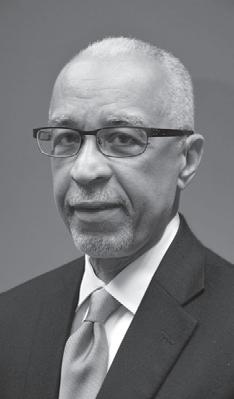
hold these truths to be selfevident,” but those words are not the historical reason for the importance of the Declaration of Independence. “A decent respect for the opinion of mankind requires that they should declare the causes which compel them to the separation” is this statement in the opening paragraph the makes the Declaration of Independence a proschemata, an ancient Greek term that means a publicly stated rationale for war and was required protocol in the 18th century. The Declaration of Independence lists 27 specific grievances against King George III, but it’s the 27th that should be the focus of our attention. Because it’s the 27th that will join the fate of enslaved Black people with the fate of Native people. It reads: “He has excited domestic insurrections amongst us, and has endeavored to bring on the inhabitants of our frontiers, the merciless Indian savages whose known rule of warfare, is an undistinguished destruction of all ages, sexes, and conditions.”
What did it mean? It meant that the British Crown was not as aggressive in suppressing rebellions of enslaved Black people as America’s colonial plantation class desired and they would not support the geographic expansionists’ ambitions of that planter class by engaging in armed conflict with Native people in order purloin their land. There were 26 other reasons for the colonial rebellion but the American Revolution was as much about
By state Rep. Tommie Pierson Jr. For The St. Louis American
On July 30, 1965, Medicaid was born with the passage of Title XIX of the Social Security Act but the struggle began in 1935, with President Franklin Roosevelt’s social security program. Conservative white southerners vehemently opposed this helping hand, fearing that the tax dollars provided to African/American workers would change their economic dependence and plight. This opposition ensured that the 1935 Social Security Act excluded domestic workers and agricultural laborers, the majority of whom were African-American.
In 1964, Democratic President Lyndon Johnson fought for new federal assistance including Medicaid and Medicare. While the president faced significant conservative Congressional opposition, the recent Democratic electoral victories gave public health advocates an opportunity to establish a federal health care program.
Forty-six years later, President Barack Obama sought to fix this unequal, unjust system and signed into law the Patient Protection and Affordable Care Act. For the first time, low-income American adults would be guaranteed access to health care coverage under the law no matter where they lived in America. Once again, however, conservative Southern states fought back, challenged the Affordable Care Act’s Medicaid expansion in court
— and won. The conservative Supreme Court upheld Medicaid expansion in 2012 but made it voluntary by state, thus restoring the inequality engrained into Medicaid’s establishment.
African Americans live with chronic conditions such as diabetes, heart disease, and HIV/AIDS at far greater rates than other racial groups.

African Americans have higher uninsured rates than whites (7.5%) and Asian Americans (6.3%) according to the National Center for Health Statistics. More than one-quarter of uninsured adults who would be eligible for Medicaid if all states expanded are people of color. The Kaiser Family Foundation found that the coverage gap in states not expanding Medicaid disproportionately impacts poor, uninsured AfricanAmerican adults.
A decade after the Affordable Care Act’s passage, a disproportionate majority of African Americans are without coverage, in large part because of conservative states, like Missouri, that refuse to expand Medicaid. Missouri is one of 14 states that has yet to expand Medicaid.
Various studies suggest that states with expanded Medicaid coverage have a 6% lower rate of opioid overdose deaths,
Make Juneteenth a national holiday
the expansion of slavery and the necessary genocide it required as taxation without representation.
If you want to understand why Derek Chauvin felt empowered to kneel on George Floyd’s neck for 8 minutes and 46 seconds and Donald Trump felt entitled to defile the sacred lands of the Lakota people with his clownish, but dark, performance at his cartoonish July 4th rally, know that there is a through-line between their behavior and Thomas Jefferson’s quill.
In order to turn this moment into a movement, young activists of every ethnicity need to understand the symbiotic relationship between systems and culture. Systems will produce or change culture over time, and cultures produce the systems that support and maintain them. Real and sustainable change requires new systems and cultural transformation –it’s not either/or, it’s both. In order to do that you need to understand that this moment does exist by happenstance or accident. It is the historical consequence of conscious decisions made by people with power to advance and maintain their interests. You may not have fully known or understood what Jefferson wrote in the Declaration of Independence, but trust that he did. The removal of Confederate statues and the renaming of military bases is an instinctively correct necessary first step, but it’s insufficient to what’s required. We need a complete rewriting of the American historical narrative to one that tells the whole truth and nothing but the truth – the good, the bad and the ugly. Then, every generation will be a position to make their own moral judgments about their historical inheritance.
It is time for America to truly grapple with this legacy of slavery. Juneteenth represents how freedom and Justice in the U.S. have been delayed for many decades. There are many barriers that still remain in America. Juneteenth should be celebrated because it represents freedom and equal justice. Making Juneteenth a national holiday would serve as the ultimate reflection my ancestors’ sacrifice. They sacrificed for the democracy of this country. Racial injustice in America still exists today now more than ever. It is time for real change!
Clint Potts, chair Neighbors of Fountain Park Juneteenth Committee
Missourians still face discrimination
The United States Supreme Court’ ruling that Title VII protects LGBTQ+ Americans from workplace discrimination based on sexual orientation and gender identity is an enormous win for equality and fairness for LGBTQ+ Missourians. This is about more than just a legal precedent. It’s about their right to live, work, and take care of their loved ones with dignity.
In Missouri, we must now seize this moment and move forward. That starts with Governor Parson and other officials in Jefferson City affirming and implementing this ruling immediately. There can be no delay.
We have so much further to go in this fight. Our legislature has failed to pass the Missouri Non-Discrimination Act, meaning LGBTQ+ Missourians can still face discrimination in their everyday lives like housing and in public places like restaurants, stores, schools, nursing homes, and even public transportation. LGBTQ+ youth can still be subjected to abusive and discredited practices like conversion therapy. And LGBTQ+
along with infant mortality rates that are lower than nonexpansion states. Unfortunately, states that haven’t expanded Medicaid have failed to realize the full potential of expanded coverage which goes beyond health benefits. Additionally, the Missouri Foundation for Health suggests economic impacts of an increase of 16,000 jobs as well as a $1.6 billion jolt to our state’s Gross Domestic Product.
As voters, we have an opportunity to change the future of our healthcare, and I am running for state Senate to bring healthcare solutions to Missouri and specifically North St. Louis County. When so many people lack access to affordable healthcare, and those with health insurance can’t afford their premiums, it’s time for change.
Join me in voting for Missouri Amendment 2, the Medicaid Expansion Initiative, on Tuesday, August 4. A yes vote on Amendment 2 will bring billions of Missouri tax dollars back into our state, closing a huge coverage gap so that 300,000 of our low-income neighbors, most of whom are working, will finally get health care that has long be denied. Let us fix this unequal and unjust system by passing Medicaid expansion in Missouri.
Tommie Pierson Jr. represents the 66th District in the Missouri House of Representatives and is a candidate for Missouri Senate in the 13th District as a Democrat on the August 4 ballot.
All letters are edited for length and style.
Missourians continue to face unacceptable and disproportionate levels of violence.
No Missourian should be left to fight alone for their rights or dignity. As governor, I will do everything in my power to protect and support our LGBTQ+ family, friends, and neighbors.
Missouri Auditor Nicole Galloway Jefferson City
We need a Missouri Nondiscrimination Act
Discrimination against the LGBT community has always been wrong. With this ruling, the U.S. Supreme Court acknowledges that it also violates federal law. For everyone who cherishes fairness, equality and treating people with dignity, this is a cause for great celebration.
We are hopeful Missouri
courts will follow this precedent and rule that existing state laws prohibiting sex discrimination also protect LGBT Missourians from being denied employment or housing based solely on who they are. However, since the Republican majority in Jefferson City filed the most anti- LGBT bills in the country this past session, Missouri must get on the right side of history. We will continue the two-decadeplus push for passage of the Missouri Nondiscrimination Act to ensure that our statute aligns with today’s decision and provides everyone with equal protection under the law while combating the extreme Republican agenda against our loved ones.
House Minority Leader Crystal Quade D-Springfield




Because of the COVID-19 pandemic, the Greater St. Louis Association of Black Journalists (GSLABJ) canceled its 2020 Minority Journalism Workshop. It is offering an alternate program, GSLABJ Insight into a Pandemic, so students can share their experiences related to the pandemic and vie for a scholarship.
All 2020 high school graduates to submit content on one of the following subject areas: What was the biggest impact of the pandemic on your senior year? What has the pandemic revealed about you or your family? How will the pandemic experience change your life or perspective?
“We urge you to be descriptive in your language when discussing your impact area and consider using a creative background in your video,” the association notes. “Most of all, we require that you remain safe and not put yourself in harm’s way for the project.”
If a written story, it should be no more than 500 words and submitted as a double-spaced Word document. If
a video clip, no longer than three minutes, published to YouTube by the student with the link submitted to GSLABJ. If audio, a 3-minute audio clip or podcast published to SoundCloud with the link sent to GSLABJ.
Submit a Word document as an attachment or links by email to gslabj@gmail.com by July 17. Include name, age, city, school, phone number and the college you plan to attend this fall. A winner will be selected in each of the three submission categories. Each winner will be awarded $750, which will be submitted to the college of choice.
Content may be edited for length and clarity. Any submission may be posted on a public-facing page with the student’s personal information and promoted on www.gslabj. org and the association’s Facebook page.
For more information, contact Bonita Tillman at (314) 210-1430.

By Kenya Brumfield-Young For The St. Louis American
On Sunday, June 28, Mark and Patricia McCloskey stood on the lawn of their St. Louis, Missouri mansion, pointing their guns at protesters as they passed down their street. After this incident, the couple released a statement through their attorney indicating that the message “Black Lives Matter” is relevant, that they agreed with it, and it was overdue.
They further stated that they advised the protesters that they were trespassing on a private street. According to various reports, they leveled their weapons because they felt threatened and feared for their lives. They agreed with the message, aimed their guns, and “feared for their lives.”
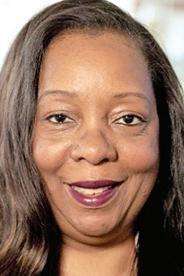
The phrase “I feared for my life” conjures considerable skepticism in many communities and immediately calls to recollection police shootings and attempts to absolve officers of legal responsibility in post-shooting incidents. Its use, by design, also reinforces existing stereotypes about groups of people and garners sympathy for the speaker.
Saying “Black Lives Matter” and “I feared for my life” in conjunction is oxymoronic. As many of the conversations about this incident have been surrounding the Castle Doctrine and one’s right to protect private property, it’s exemplary of the critical work that is started.
The critical conversations are about the manifestations of conscious and unconscious biases towards the protesters and the expectations that they would engage in activities beyond those known to go along with protesting. The continued criminalization of Black and Brown people working for social change, and those who find themselves equally targeted by being allies and assisting in those efforts, continue to be problematic.
According to a 2019 Pew Research Study on race, 56% of white Americans have negative views about racial progress in the United States compared to 71% of African Americans. There are even further gaps in perceptions about how far we still must go. The same study indicates that 78% of African Americans reported that the country has not come far enough in securing equal or equitable rights on par with their white American counterparts, while 37% of whites felt the same.
Protesting and civil disobedience have a long history in the United States and have included African Americans sitting in at lunch counters, standing in line to register to vote, eating in white-only establishments, or protesting down a private street. Some of these encounters ended violently, and sadly, that was the expectation of the time. In 2020, we should expect a different outcome. Actions are not without reactions, but the caveat is the reactions are supposed to be “equal and opposite.” Protests are not designed to make people comfortable. Protests are uncomfortable; systemic racism is uncomfortable; the manifestation of implicit bias or unconscious bias is uncomfortable; having a gun pointed at you while you protest down a private street is uncomfortable, where “Black Lives Matter,” just not in here.
“Black Lives Matter” should not simply be a marketing slogan, and it should not lose its meaning when the garage, gate, door, or anything closes. Kenya Brumfield-Young, MLS, MSCJ, is a professor of Criminology and Criminal Justice at Saint Louis University.
ignoring an order to disperse, but that his head was not dragged on the pavement.
Foggy “was not wearing a shirt, so more of his skin than normal made contact with the pavement,” a police spokesman said. He was provided medical attention after his arrest, the police claimed.
The police spokesman explained the use of Foggy’s name by saying officers “have frequently heard him called his name over the past month as they have been in close contact with each other along the protest line.”
Florissant police arrested 17 people on Sunday night and maced the majority of the group. Many protestors were bruised by batons, and several of those arrested were shoved face-first onto the ground.
“I was drenched in pepper spray and hit with a baton when police rushed non-violent protesters,” said Rev. Darryl Gray, an Expect Us organizer. “Medics trying to assist injured protestors were tear gassed.”
In a social media post, the Florissant Police Department stated that several protestors committed property damage and threw various objects at the police.
“At no time were police threatened nor did they come under attack in any way,” Gray said. “The police called writing on two pieces of plywood ‘destruction of property’ and used that as a reason to viciously attack protestors.”
During the action, protestors scribbled messages like “ACAB” and “BLACK LIVES MATTER” on particle board covering the Florissant Police Department’s windows. Within a few minutes, police
Continued from A1
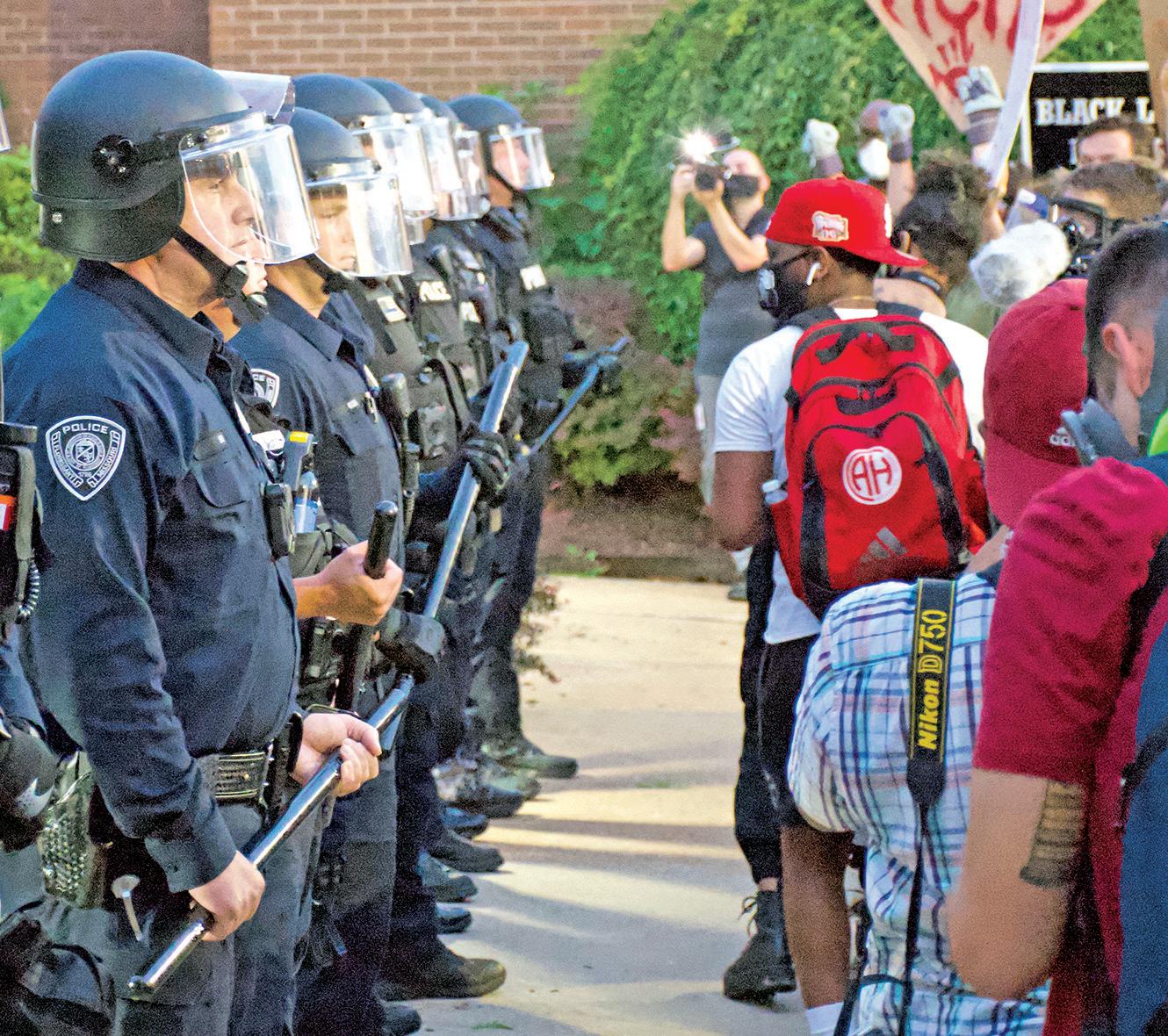
in riot gear emerged from the building and pushed protestors back. An order to disperse was issued at approximately 8:45 p.m., and then officers began to arrest protestors, pushing the group back out onto Lindbergh Boulevard with batons and mace.
Expect Us organizers had warned the diverse group of protestors that this would be a “code red” action – meaning that the risk of arrest would be high. Organizers Gray, state
pages of typed instructions she said the McCloskeys gave her at the time of her interview. (She said she kept it as a memento because she thought it was so outrageous.) The four-page job description, which is posted with redactions at www.stlamerican.
Rep. Rasheen Aldridge (D-St. Louis), Ohun Ashe, and Cori Bush told people that they were welcome to leave at any point if they felt unsafe. Instructed by Aldridge, everyone wrote a jail support number on their arms or in their phone contacts.
“We all know folks that have been arrested by Hazelwood, by Florissant, and been mistreated,” Bush said.
“Think about what you’re willing to lose. Being a part of this particular action, or any action,
com, is full of details about the McCloskeys and their home that they have not disputed. However, they denied that the document is authentic and described it as “a hit job.” If black lives mattered to
what are you willing to put on the line? Are you willing to have your name smeared, your reputation questioned, lose your job? What is a Black life really worth to you?”
This action came after nearly a month of protests of the Florissant Police after then-detective Joshua Smith drove his unmarked police SUV into a Black man and then exited the vehicle to kick and beat him. Protesters with a different organization, Respect Us, have
the McCloskeys then, they certainly did not want black lives or culture to matter to their daughter, if the document is authentic.
According to the document, their daughter was allowed no
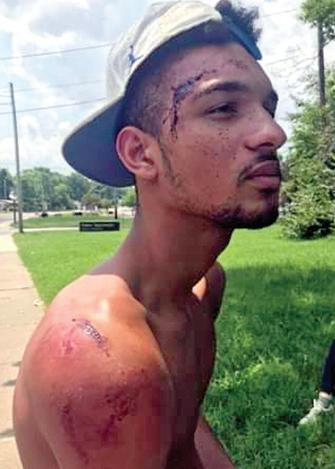
organized the majority of these actions.
Smith has been fired and charged with first-degree assault, assault in the fourth degree, and armed criminal action, while the two other officers who were with him in the SUV have been allowed to remain at their posts.
The marchers on Sunday night repeated calls to defund the police heard across the nation, along with a demand for every police shooting to be
more than one hour of monitored TV time per day – and it was explicitly to include no “black culture,” which appears in a revealing list of forbidden television experiences: “no violence, sex, drugs, rap music,

independently reviewed. The police responded with behavior that now demands its own independent review for misconduct and unnecessary use of force, organizers said.
“There can be no real police reform,” Gray said, “as long as police officers continue to conduct themselves as thugs.” Florissant Police said it will perform a routine use-of-force internal organization investigation, though Foggy had not filed a complaint.
black culture, MTV or talk shows.”
Their daughter also was forbidden to use “modern slang like ‘cool,’ ‘radical,’ ‘awesome’” or to exchange high-fives, according to the document. “She should learn alternative words and learn how to shake hands instead,” the document states.
Given that the McCloskeys’ defense of their mansion in an exclusive private neighborhood in the heart of St. Louis has gone viral as a meme of unhinged defense of white privilege, the instructions to where their daughter is allowed to travel is interesting, according to the document. It’s delivered all in capital letters for emphasis: “REMEMBER DON’T GO NORTH OR EAST OF THE HOUSE AS IT CAN BE DANGEROUS EVEN DURING THE DAY. EUCLID DURING THE DAY IS OKAY, HOWEVER.” Portland Place, where the McCloskeys live, is seven blocks south of Delmar Boulevard, the notorious Delmar Divide between white south and black north St. Louis. It also is just inside the City of St. Louis limits, two miles east of the whiter St. Louis County. The McCloskeys were telling their nanny to keep their daughter away from the blacker areas of the city, according to the document. Euclid Avenue, however, which is one block east, is “okay,” presumably because it is lined with restaurants and shops.
Most telling, though, is the statement of “PERSONAL VALUES” with which the job description ends. “We think it is important that [our daughter] learn the value of traditional western, Christian, white, heterosexual, family oriented lifestyle,” the document states.
“We are opposed to ‘cultural diversity’ or alternative lifestyle propaganda and would like [our daughter] to accept as normal and proper traditional American family values.”
Again, the McCloskeys deny that they are responsible for writing this document. The American also left messages at a number for their daughter, whose name was redacted to respect her privacy, and will report her response when received.
Continued from A1
ancy between testing positive between the two communities,” Garza said.
Among the people who tested positive, about 60% were admitted to the hospital, compared to about 40 percent of the non-black population. About 50 percent of deaths were African Americans.
The death rate among the hospital patient population clearly shows the disparities, he said. For the Black community, it is 47 per 100,000, and it’s 13 per 100,000 for the non-Black community. These death rates will differ from those on the St. Louis city and the St. Louis County public health department websites because the task force is only looking at the hospitalized population, he said.
“We need to dig in more to figure out what is contributing to all this,” he said, including looking at access to quality housing, food, and resources that contribute to overall wellbeing.
However, Garza noted that the governor recently signed a budget that cut funding to some health programs and other needed areas.
“It becomes this repeat-
Continued from A1 them.
Eviction notices had been posted around the underpass campsite on June 26. The notices stated that, as the underpass is Missouri Department of Transportation property, the people camped there were trespassing.
MoDOT had expressed concerns to the city about fires and pedestrian access. The city’s eviction notice warned of “potential exposure and spread of COVID-19.” Residents were told to remove all their belongings by 9 a.m. June 30.
Camp resident Nikki was struck by the city’s concern for COVID spread. “They said we don’t have proper sanitation because we don’t have a handwashing station or port-a-potty or the ability to shower,” Nikki said. “If they were so worried about it, then they should have come and medically screened us. They haven’t offered us masks, they haven’t offered us sanitizer, gloves, nothing.”
Advocate Sharon Morrow said that while housed in the hotel, people like Morgan and Nikki did not receive any assistance in finding more permanent places to live. “They received no services,” she said.
Steve Conway, chief of staff
ing cycle, where you are slashing budgets in the state departments because you’re decreasing revenue,” he said, “but you’re decreasing revenue because it’s a public health emergency.”
Missouri ranks 50th in the nation for the amount of state funds dedicated to public health. The national median is $33.50 per person, but Missouri spends less than a quarter of that: $6. Garza said this is the time to invest in getting the results we want.
“There’s this old saying in process engineering, which is, ‘Every system is exactly built for the results that it gets,’” he said. “If you are going to build a very cheap system that is just barely surviving, then it’s going to give you the results that you built it for — which is poor health outcomes. Again, it’s not just about the health care. It has to be about something broader than that.”
Increase in transmission
All 14 counties that make up the task force’s statistical area are seeing an increase in the spread of COVID-19, said Garza, during his Monday, July 6 press briefing. Up until the middle of June, the region was on the best-case scenario curve, with hospital-
for Mayor Lyda Krewson, said that the city contracted with “a couple of different groups that are providing them with the caseworkers” to assist with a range of social services. A spokesperson for the mayor said these services have been offered to people in the tent encampment.
“The last time we heard from the mayor’s office was five or six days ago,” Cohen said on June 30, “and they said explicitly nobody’s being evicted.”
On June 30, in fact, no one arrived to take the underpass residents to the Buder Recreational Center Shelter as promised. No city employees appeared. Around 12:30 p.m. the next day, several police officers came to the camp.
“The police said that in 10 days they’re going to come mass arrest,” advocate Lisa Winter said on a Facebook live video.
Conway said that rainy weather was a factor in the delay. The 10-day delay does not solve camp residents’ problems finding adequate housing.
“The options they have are jail, live on the street but in a different location, or Buder,” Winter said. “COVID-19 is one of the concerns, but those are communal shelters where you sleep in one room on cots, and if you’ve had any kind of conflict at the shelter, that is not an option.”

ization numbers trending down, he said. However, we took a turn upwards at about June 15 — the day that the region fully “reopened.” Then there was an even sharper turn in the wrong direction at around June 27, according to the task force’s graphs. We are now on the “slow decline” curve, Garza said.
The task force analyzed several different trends in the COVID data to determine this. First, the number of people being admitted to area hospitals continues to climb.
“We know that we won’t be at zero for quite some time, but we become concerned when we see these upticks in admissions consistently over time,” Garza said.
The task force uses a “seven-day moving average” to look at new hospital admissions because it shows the overall trend. On July 6, Garza said the average is 21, which is the highest that it’s been in a month.
The seven-day average for people currently hospitalized for COVID-19 has also increased to 156. That number was 145 on July 3, and 139 on July 1.
Garza also showed the epidemiology curves for all of the counties in the task force’s statistical area, including seven
And the housing options are likely to become slimmer, as more and more people lose their employment and end up on the street due to COVID19; the unemployment rate for the St. Louis region is 11.2%, according to the U.S. Bureau of Labor Statistics.
According to the ACLU of Missouri, the state is one of only nine that has not issued

Missouri counties and seven Illinois counties. All saw upticks in COVID-19 cases in June.
“Again, it’s concerning that we have an increase in transmission,” he said. “We’re seeing an increase in cases, an increase in hospitalizations. So, we need to do everything we can to interrupt that transmission.”
Wearing masks, not gathering in large groups, washing hands, and practicing social distancing are all simple ways people can help slow the spread of the virus, he said.
As of July 3, masks are required in St. Louis County and city when people are
a statewide eviction moratorium during the pandemic.
“Evictions undoubtedly will disproportionately distress communities of color, and particularly, women of color,” the ACLU stated. “Earlier this year, the ACLU Women’s Rights Project and Data Analytics team found that, on average, Black women renters had evictions filed against them
St. Louis County Executive
Dr. Sam Page and St. Louis County Prosecutor Wesley Bell loaded boxes of food and necessities into cars during the Urban League of Metropolitan St. Louis’ food distribution event at St. Louis Community College— Florissant Valley on June 27. To get involved, call 314-6153600 or visit https://tinyurl. com/UL-church-food.
indoors (aside from one’s home) and outside if social distancing is not possible. The requirement applies to everyone over the age of 9 years old.
Garza also spoke about the reproductive number or the rate of transmission. If this number is above one, then a person with COVID-19 is on average transmitting it to another person. “If it’s below one, then they’re not,” he said. “Our best guess is, across our area, the reproductive number is above one.”
St. Louis city and St. Louis County were both at about 1.5, and St. Charles was at about 1.25, according to the graphs Garza shared. For reference, St.
by landlords at double the rate of white renters (or higher) in 17 of 36 states, including Missouri.”
Though the ACLU has filed an amicus brief asking for evictions to be halted, they are still ongoing in Missouri.
Morrow said that the I-64 overpass camp has already seen an influx of new residents due to the uptick in evictions.
Louis city was at 0.9 in May, which was a huge improvement where it was in March — which was 5.0. When the region first started lifting the stay-at-home orders, leaders predicted that this number could rise
On Monday, July 6, the task force reached a new milestone of discharging a total of 3,002 COVID-19 patients to date.
“That’s a testament to all of those healthcare workers who have been working so hard to treat the COVID patients and get them back home to their loved ones,” Garza said. “Thank you, everyone, for that.”
“We’ve seen an increase of new people,” she said. “They all come down here.” But on July 10, any evictees who seek shelter at the underpass will face arrest.
“We were kicked out of the hotel,” Morgan said. “Now they’re moving us again.” Ramona Curtis contributed reporting.

The Urban League of Metropolitan St. Louis Inc., and Sysco Foods recently teamed up to salute the outstanding healthcare workers at Christian Northeast Hospital.
“Our healthcare workers are putting their lives on the line every day to help protect their patients and our community,” said Michael P. McMillan, President & CEO of the Urban League of Metropolitan St. Louis, Inc. “We are honored to partner with Sysco Foods to celebrate them and recognize their tireless efforts during this unprecedented time.”
All 1,700 employees received catered boxed lunches courtesy of Sysco Foods and Marco’s Café, owned by Pam Webb. Staff also received personalized greeting cards from the Urban League Head Start students during the special ceremony held on June 23, 2020. Two front-line employees, Paul Drake and Melissa Vann, were presented with special Man of the Year and Woman of the Year awards that included a special staycation package and $1,000 gift cards from Schnucks.
The Urban League will host its 14th covid-19 relief effort on Saturday July 11, 2020 at the old Jamestown Mall site beginning at noon. To date, the Urban League has distributed over $2 million in food, toiletries, and personal protective equipment to over 38,500 families. This effort would not be possible without the continued support of more than 50 agencies and corporations across the region. For more information on the upcoming distributions or to learn more about the Urban League’s programs, visit our website at www.ulstl.com.

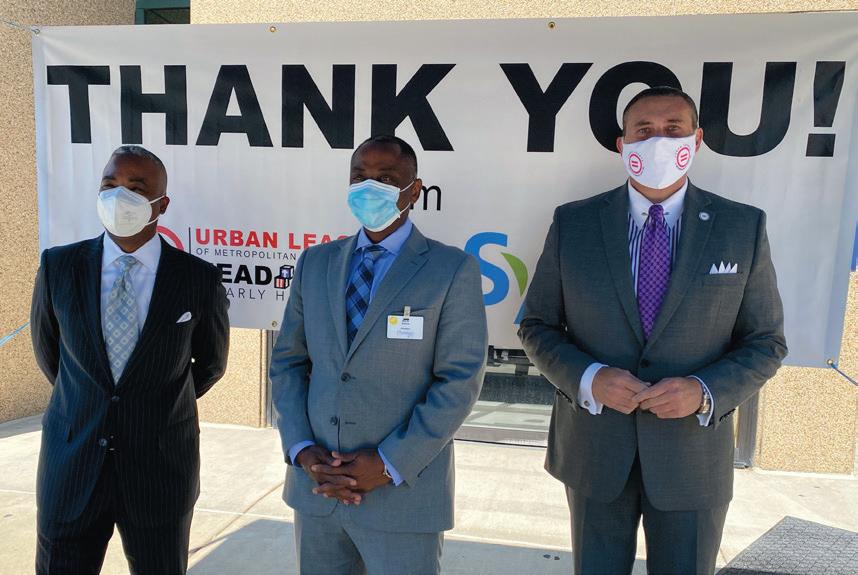
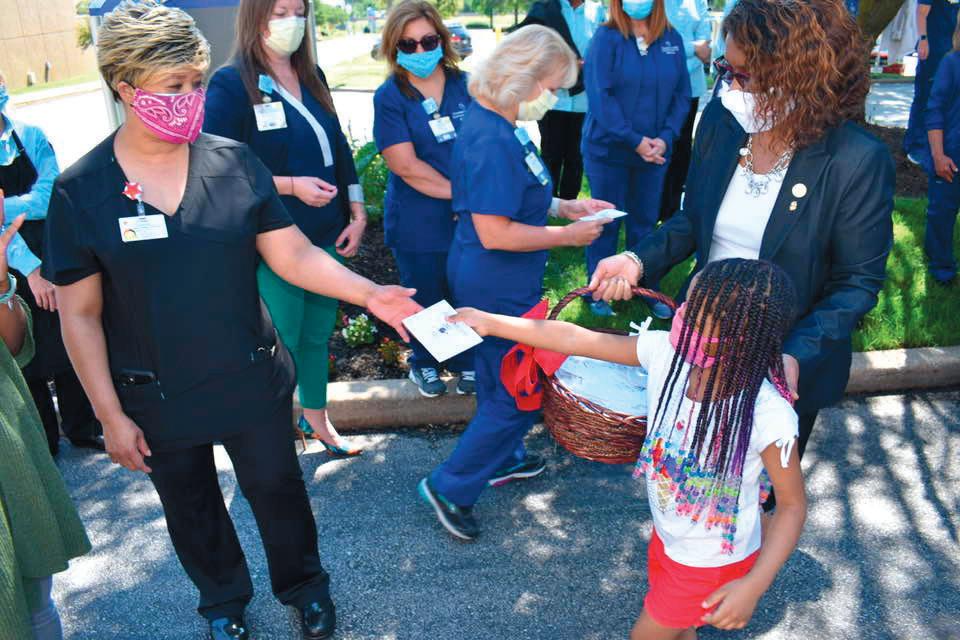

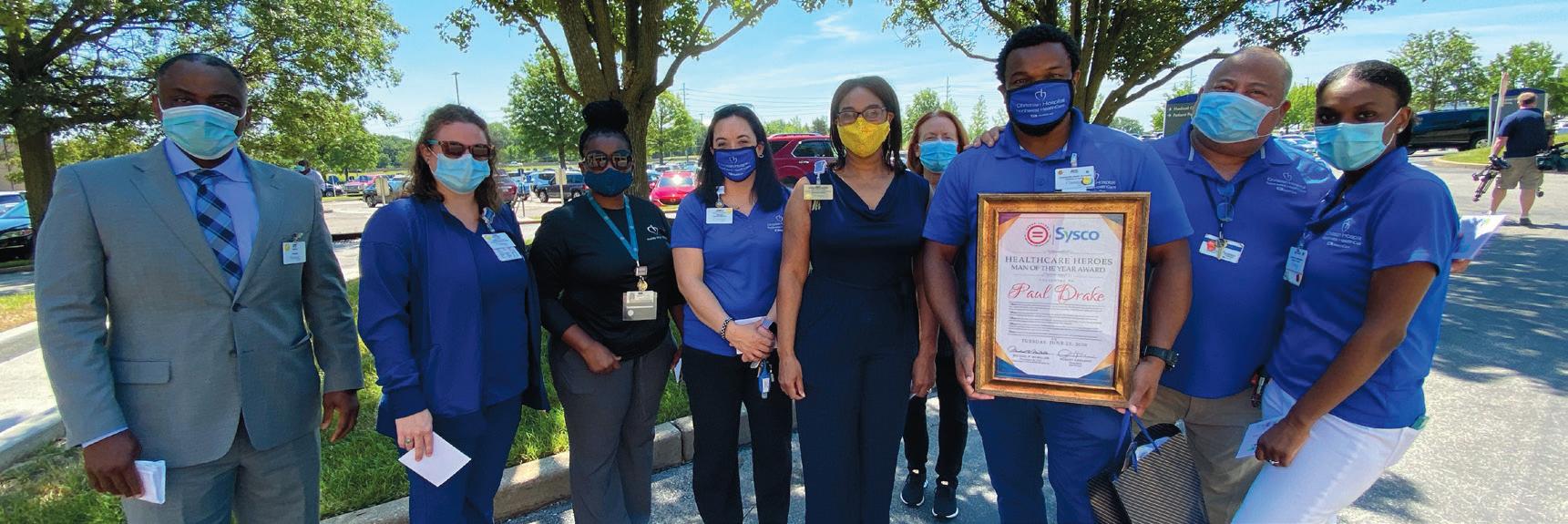
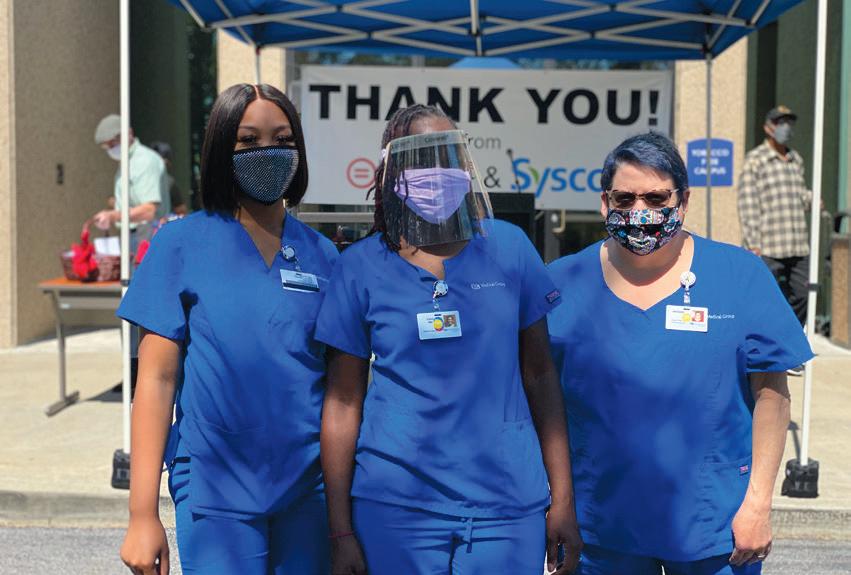
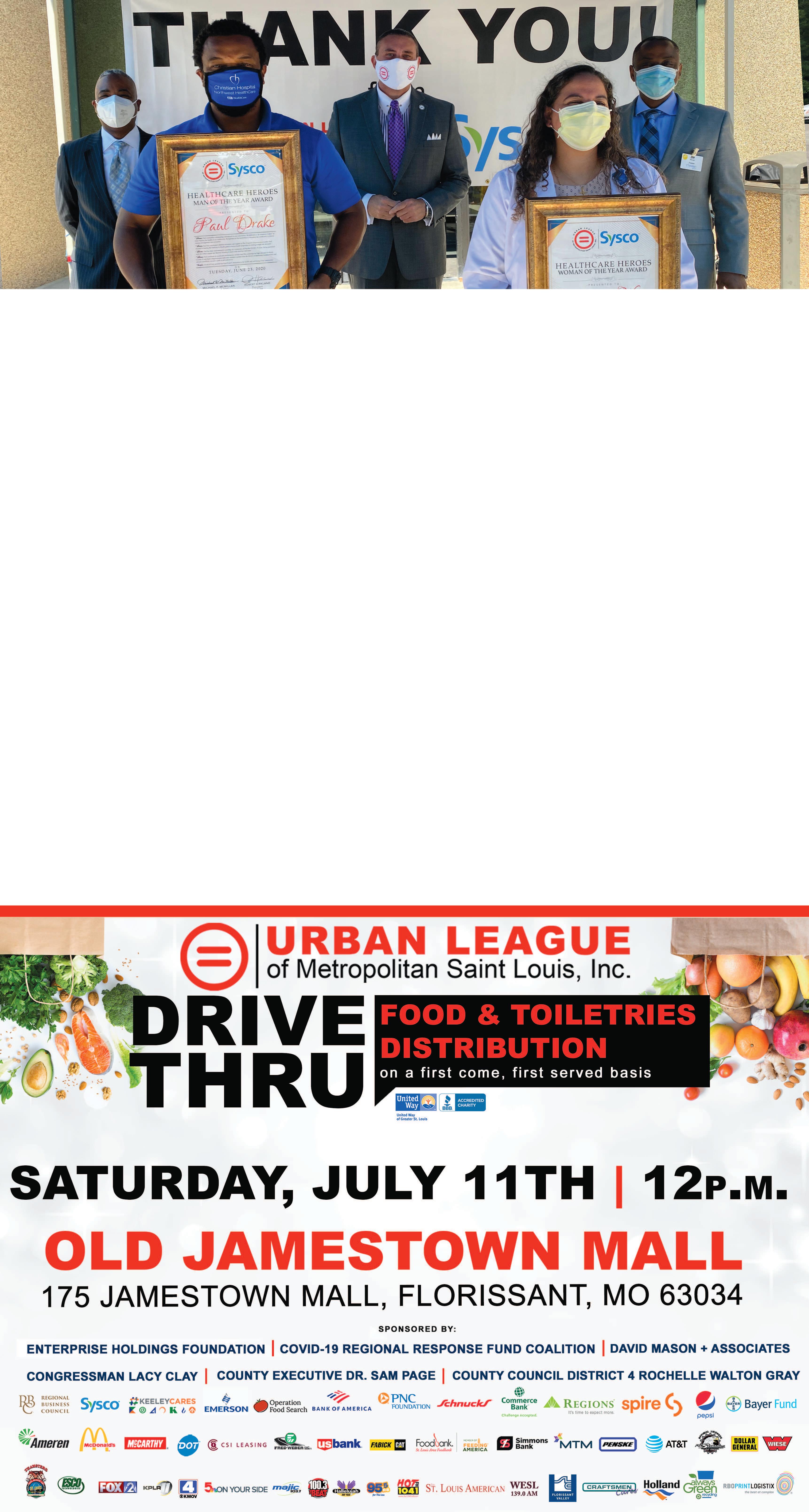
JULY 9 – 15, 2020
‘Evictions disproportionately distress communities of color’
By Sandra Jordan Of The St. Louis American
The American Civil Liberties Union and ACLU of Missouri filed an emergency brief urging the Circuit Court of Jackson County to halt eviction proceedings during the COVID-19 pandemic.
The ACLU is urging the court to immediately halt all stages of eviction proceedings and to act swiftly to address what it describes as “egregious violations of tenants’ constitutional rights arising from eviction proceedings during the COVID-19 pandemic.”
without providing effective mechanisms to ensure tenants’ constitutional and statutory rights are protected.
n “Evictions undoubtedly will disproportionately distress communities of color, and particularly, women of color,” the ACLU says.
“Allowing evictions to proceed in violation of federal law and in the face of significant constitutional concerns will further harm Black women and other tenants of colorworsening the existing racial disparities that have emerged in the impact of the COVID-19 pandemic,” said Sandra Park, senior staff attorney at the ACLU’s Women’s Rights Project.
“All residents should have access to safe and stable housing throughout the course of this ongoing public health crisis.”
The ACLU says Missouri courts have begun hearing eviction cases
The emergency amicus brief argues two legal issues.
“First,” the ACLU argues, “the federal CARES Act’s eviction ban requires a compliance procedure for determining whether a property is covered by the Act’s protections prior to filing an eviction action.”
Although some courts require landlords to submit checkbox forms indicating compliance with the CARES Act, the ACLU says these measures are implemented inconsistently and fail to provide tenants with any notice or opportunity to respond to the landlords’ assertions prior to the filing of an eviction case.
“Second,” the ACLU argues, “the remote and in-person proceedings taking place in Missouri violate tenants’ due process rights – leaving many tenants unable to participate in their defense and at risk of unfairly receiving a default judgment.”
The ongoing COVID-19 pandemic has resulted in widespread and devastating economic consequences nationwide, as the number of unemploy-
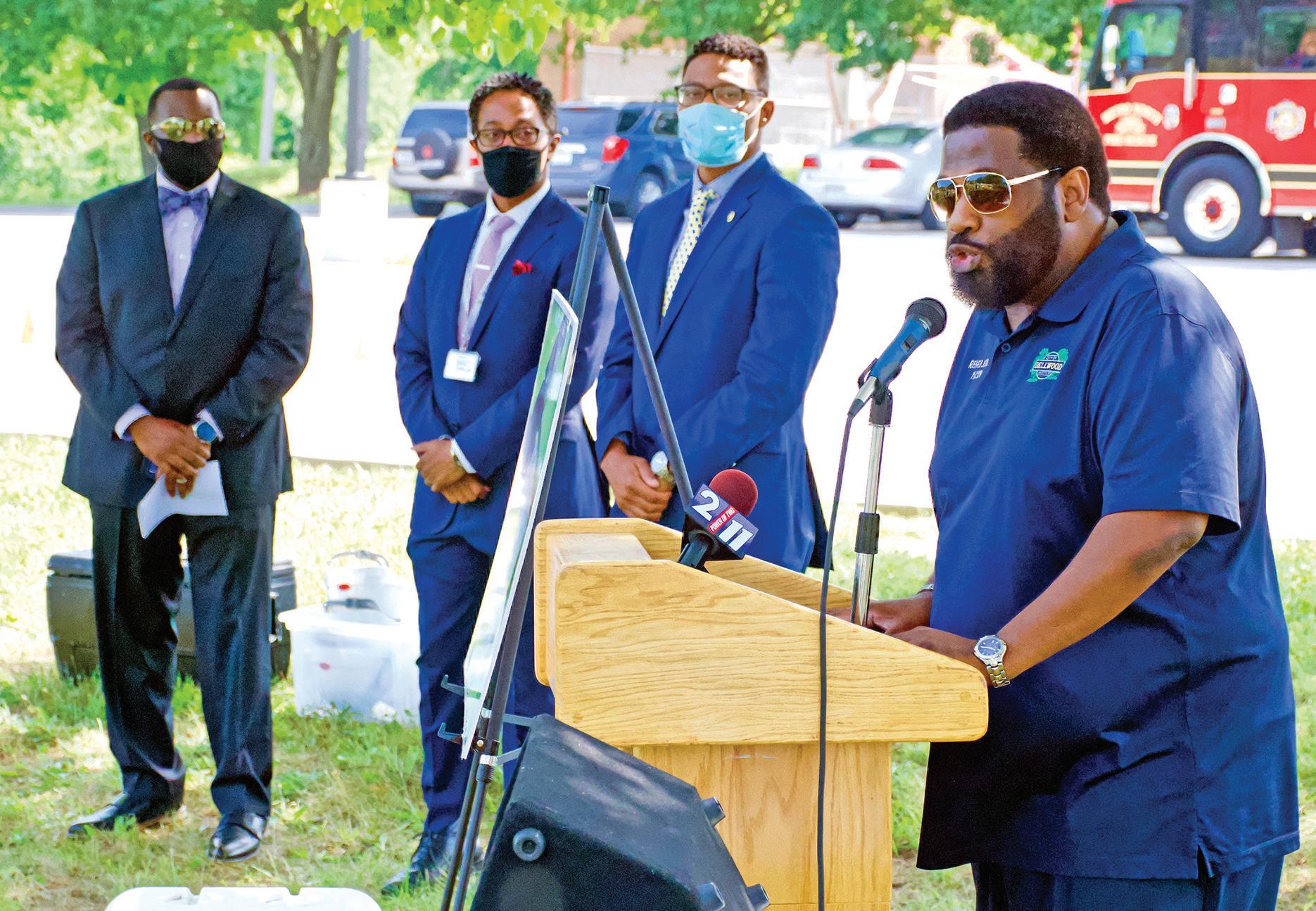
In addition to a skating rink, the facility will feature bleachers, two elevated picnic areas, permanent barbeque pits, an outdoor audio system, and lights for evening activities. “This project is like no other in the region,” Mayor Jones said. “We are hoping that it will serve as a catalyst for other West Florissant development.”
By Karley M. King For The St. Louis American
I have been hearing from leaders in all sectors of American society that they are outraged by the brutal police killing of George Floyd. I have been hearing these leaders talk about their personal convictions and their resolution to change. I have been hearing new statements of anti-racism and new commitments to attack racism and to lead in a way that attacks racism.
I have been in this country for more than 30 years as a Black person. In those 30 years, I have seen many unarmed Black people killed by white police officers. I have myself endured racism in many sectors of society. In those 30 years, I have not seen much change in terms of police violence against Black people or the racism that makes it possible.
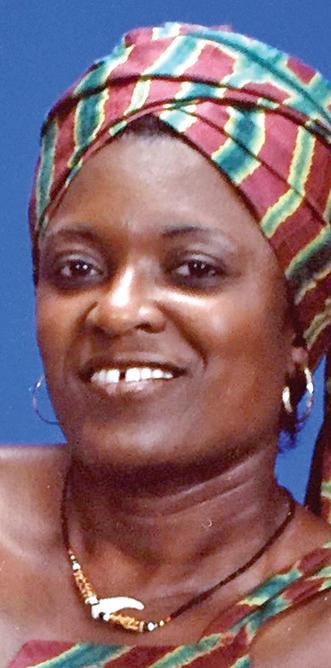
So, I want to ask a question of all the leaders expressing these new or renewed convictions of anti-racism and these new commitments to lead in a way that attacks racism. And – as a Black person who is therefore a reluctant expert on racism – I want to make some concrete suggestions about two things they should do to act on their new or renewed anti-racist feelings and commitments.
My question is this: what did you start doing differently after August 9, 2014 and what progress in the struggle against racism do you have to show for it?
‘You feel like you have ‘felon’ stamped on your forehead’
By Ashley Jones For The St. Louis American
When former state Senator Jeff Smith was sentenced to a year and a day in prison, he found job searching difficult. Even though he had a house to come home to, family support, a prestigious network, a PHD and white skin, he had a rough time finding employment. He now does consulting work for St. Louis University’s Office of Mission and Identity, and that involves helping plan SLU’s Second Chance Job Fair.
n “People coming out of prison end up being some of the employers’ best workers because of that work ethic and because they add something positive to the workplace.”
–
“In every way, I was advantaged coming out of prison compared to almost everybody in this country, and I had a really hard time finding a decent job,” Smith said. St. Louis is responsible for the nation’s largest virtual Second Chance Job Fair hosted by SLU’s Transformative Workforce Academy. On Thursday, July 9, employers will tune into a webinar screening of prerecorded jobseeker videos. Lisa Cohn, the woman at SLU who is running the fair’s operations, came up with an innovative concept.
Lisa Cohn
“It’s been heartbreaking, but also so beautiful to hear their stories in
these videos, and it’s just made me really passionate about wanting to see them get jobs,” Cohn said.
Dozens of employers will watch the short two-minute-videos in addition to receiving more information about the benefits of Second Chance Employment before choosing which applicants they’d like to meet with after the fair.
The fair takes place from 9 a.m. to 1 p.m., and in between videos Cohn and colleagues will answer frequently asked questions about Second Chance employment.
“We’re doing a lot of work to train employers, help them understand the population a little better to help them understand trauma,” Smith said.
This is the third year SLU is hosting the Second Chance Job Fair. The past two years have proven successful with 77 employers and 1,000 job seekers. Due to the coronavirus, the program had to adapt to a virtual arena rather than Chaifetz, similar to a flipped classroom.
“These people coming out of prison end up being some of the employers’ best workers because of that work ethic and because they add some-
n You need to make sure your diversity strategy respects and protects truth-tellers and revise it if it does not.
On August 9, 2014, an unarmed young Black man named Michael Brown was killed by a Ferguson police officer. We do not have video of that killing, as we do with the murder of George Floyd, so the brutality and (at best) indifference to Black life of the Ferguson police officer is more open to question. But, still, whatever their stance on the culpability of the police officer who killed Michael Brown, all of our leaders said the community uprising over his death taught or reminded them that our region is hampered by racism and racial disparities. They all said that things must change and that they would change.
So, what changed? What did you, as a leader, do differently? What change did you make? It is six years later. What did you do to attack racism and empower Black people in those six years?
Now I challenge our leaders to make two changes, and I give them six months – not six years – to start showing evidence of growth and positive change in the struggle against racism.
All institutions should have a grievance process. They don’t work very well, for a reason we all know: people fear retaliation when they speak truth to power, especially within the organization that employs them. But you will never improve your organization if the experts on its dysfunction – the people who work there – do not report their grievances. So, you need to revisit and reformulate your grievance policy and process. You need to make sure that the policy includes explicit statements that racism and racial bias are not acceptable, will not be tolerated and must be reported. You need to make sure your grievance process respects and protects truth-tellers and revise it if it does not. You must then promote your grievance policy and process
Ramona Curtis has joined The St. Louis American as digital editor. Like other editors at The American, she also reports across all coverage areas. “It’s a great time to be covering the St. Louis community,” Curtis said. “I look forward to sharing your stories.” A native of Detroit, Curtis has worked in the Black Press in her home city and in community journalism in St. Louis and Belleville. In July, she will apprentice with outgoing digital editor Kenya Vaughn, who is leaving the paper at the end of the month after 15 years as digital and arts editor. “My hope is that Ramona finds maintaining the mission and brand of The American online and through various social media channels as rewarding as I have over these past 15 years,” Vaughn said. “Everyone who is a part of the organization – which is more like a
Tiffany Anderson was appointed co-chair of the newly established Governor’s Commission on Racial Equity and Justice by Kansas Governor Laura Kelly. Anderson is superintendent of Topeka Public Schools USD 501 and formerly was superintendent of Jennings Public Schools. Shannon Portillo, associate dean for Academic Affairs KU Edwards Campus & School of Professional Studies, is co-chair.

The commission is tasked with studying issues of racial equity and justice in Kansas and will begin its work focusing on law enforcement-community relations in the wake of the uprising sparked by the police killing of George Floyd in Minneapolis. It will hold listening sessions across the state and make recommendations to the governor, the Legislature, and local governments on concrete and immediate steps that can be taken to increase racial equity and justice in Kansas.
“Governor Kelly’s commitment to equity for all Kansans is clear as she empowers a diverse group to bring additional voices and recom-
Continued from A9
In Missouri, the unemployment

Ramona Curtis
mendations to the Legislature, local and state government,” Anderson said.
“The governor’s courageous step to address equity through this commission is a step that further defines Kansas as a leader and turns a moment of national unrest into a movement of progress for us all. I look forward to listening, learning, and working with others to ensure we have more equitable systems in place, serving all Kansas families well.”
The commission will meet virtually or in-person as recommended by public health guidance. It will make its initial report to Governor Kelly by December 1.
“As governor, I am committed to ensuring this latest tragedy does not fade into the next news cycle,” Governor Kelly said.
“Communities of color do not have the luxury of time for leaders to address these issues.”
For more information about members of the commission, visit https://tinyurl.com/ KS-equity.
rate has increased to an alarming 10.1%, with over 667,300 initial claims filed in the 14 weeks since Governor Parsons declared a state of emergency, the ACLU says. Despite the ongoing eco-
nomic fallout of COVID-19, Missouri remains one of only nine states in the nation that has not issued a statewide eviction moratorium to protect tenants from being kicked out of their homes during a global
family – understands the intention of being a valuable resource for the Black community, in St. Louis and beyond. The work is as much a community service as it is a profession.”
“There is no replacing someone
Continued from A9
like Kenya,” said Publisher and Executive Editor Donald M. Suggs, “but once she decided to move on, we were very pleased to find someone with Ramona’s skill, experience and enthusiasm right away simply by advertising for the position on our own platforms.”
Ishmael Sistrunk, IT coordinator and sports columnist, will continue to support and assist the digital editor. Those wanting to pitch stories or add Ramona Curtis to their media list are encouraged to email or add her at rcurtis@stlamerican. com.
throughout the organization. You have one month to accomplish this.
Then, you need to revisit and reformulate your diversity statement and strategy. I know you already have them, but they aren’t working or you wouldn’t be saying the things you are saying now. You need to fix your grievance policy and process first, though, because the new stream of grievances you should start receiving will be your best source of information about how to revise and revive your diversity statement and strategy.
You need to make sure your diversity strategy also respects and protects truth-tellers and revise it if it does not. You must then promote your renewed diversity statement and strategy throughout the organization. You have three months to accomplish this.
In four months, you should have vastly improved your grievance process and diversity strategy. Along the way, you should be learning who in your organization is discriminating against Black people, who is hindering your diversity strategy, who is enabling or committing racism.
Within two months after your vastly improved grievance processes and diversity strategies are in action, you should have a renewed organization with more empowered Black leaders. You should actually have done something to attack racism other than talk about it.
Please, go to work now.
Karley M. King is a program manager in the health care field. A native of Togo, West Africa, she has lived half of her life in the U.S. in New York City and half in St. Louis County.
health pandemic.
“Evictions undoubtedly will disproportionately distress communities of color, and particularly, women of color,” the ACLU says.
Continued from A9 ment claims continues to climb.

Earlier this year, the ACLU Women’s Rights Project and Data Analytics team found that, on average, “Black women renters had evictions filed against them by landlords at double the rate of white renters (or higher) in 17 of 36 states, including Missouri.”
thing positive to the workplace culture,” Cohn said. Each job seeker gets two minutes to talk about their work-related experience, skills and how they’ve overcome adversity. They get to “sell themselves” as jobseeker
Larissa Brady put it.
“Don’t give up,” Brady said. “Keep going and find something out there that suits you. Find a career, not just a job. There’s a difference.”
Brady’s construction experience began two weeks after she was released from prison in September of 2018.
David Brainerd of Brainerd Construction hired her, showing what it looks like to give an ex-felon a second chance.
Brady currently works on rental properties part-time with her uncle. She is still searching for something more consistent and stable.
“People need to stay moti-
“People across the country are taking to the streets to change the racist institutional inequalities and inadequate protections of our current system in housing, medical care, economic, and criminal justice,” said Tony Rothert, legal director, ACLU of Missouri. “These inequities are only exacerbated by the COVID-19 pandemic. Protecting the constitutional rights of Missouri’s most vulnerable during a deadly global pandemic is vital to a fair, just,
n “There’s lots of concrete and intangible community benefits of Second Chance employment for employers.”
– Jeff Smith
vated,” Brady said. “Don’t let their past bring them down. I’ve kind of tried to overcome that hurdle myself. It stopped me a couple times. It broke me down a little bit until David, my old boss, gave me that chance and really put faith and effort into me.” Her federal parole officer told her that there would be some major construction companies a part of the job fair. Brady has aspirations of expanding her knowledge and becoming a master at drywall, and she believes that employers at the job fair can assist her with that.

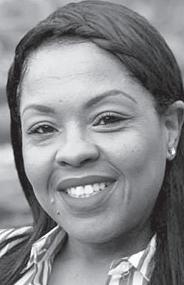
Special School District.
held the title of assistant principal at North Tech for five years. She brings over 20 years of teaching experience with over 10 years of educational leadership to North Technical High School. She is a recipient of The Apple for the Teacher Award and was honored as Teacher of the Year during her tenure with the Houston Independent School District, Houston, Texas.
and thriving state.”
The ALCU says these disparities in evictions have longterm effects that only further perpetuate racial inequities in housing - tenants with prior eviction records are often denied housing opportunities due to tenant-screening policies that reject anyone with a prior eviction.
The case in question is Millenia Housing Management Limited, vs. Gary Dewey, et. al., case No. 2016-CV12874.
“It brings those opportunities to light for us and also gives us motivation because when you have a record, you feel like you have ‘felon’ stamped on the front of your forehead,” Brady said. Cohn and her coworkers were skeptical about having a virtual job fair due to the inequality of access to a virtual space for jobseekers. By having them made pre-recorded, they were able to create them on their phone or any device and send them beforehand.
“We didn’t want our jobseekers to be disadvantaged because of the new format, especially considering that there’s varying levels of digital literacy coming out of prison,” Cohn said. Employment is one of the main factors reducing the likelihood of recidivism. Finding a job with a criminal record can be strenuous and discouraging. The most recent Missouri Department of Corrections recidivism rate is 43.9% for all releases. The Sentencing Project reported that more than 60 percent of formerly incarcerated individuals are unemployed one year after being released.
“I think you see the kind of ingenuity and problem-solving mentality that people who are behind bars bring to the table once they’re free,” Smith said. “And if we just write all those folks off it is not going to end well for the city. We got to find ways to include them, bring them into the mainstream economy.”
More employers are welcome.
“There’s lots of concrete and intangible community benefits of Second Chance employment for employers, and we’re working to try and help them understand that and chip in and be part of the solution,” Smith said.
If you are an employer or job seeker, you can sign up for the job fair at https://tinyurl. com/SLU-2ndChance.
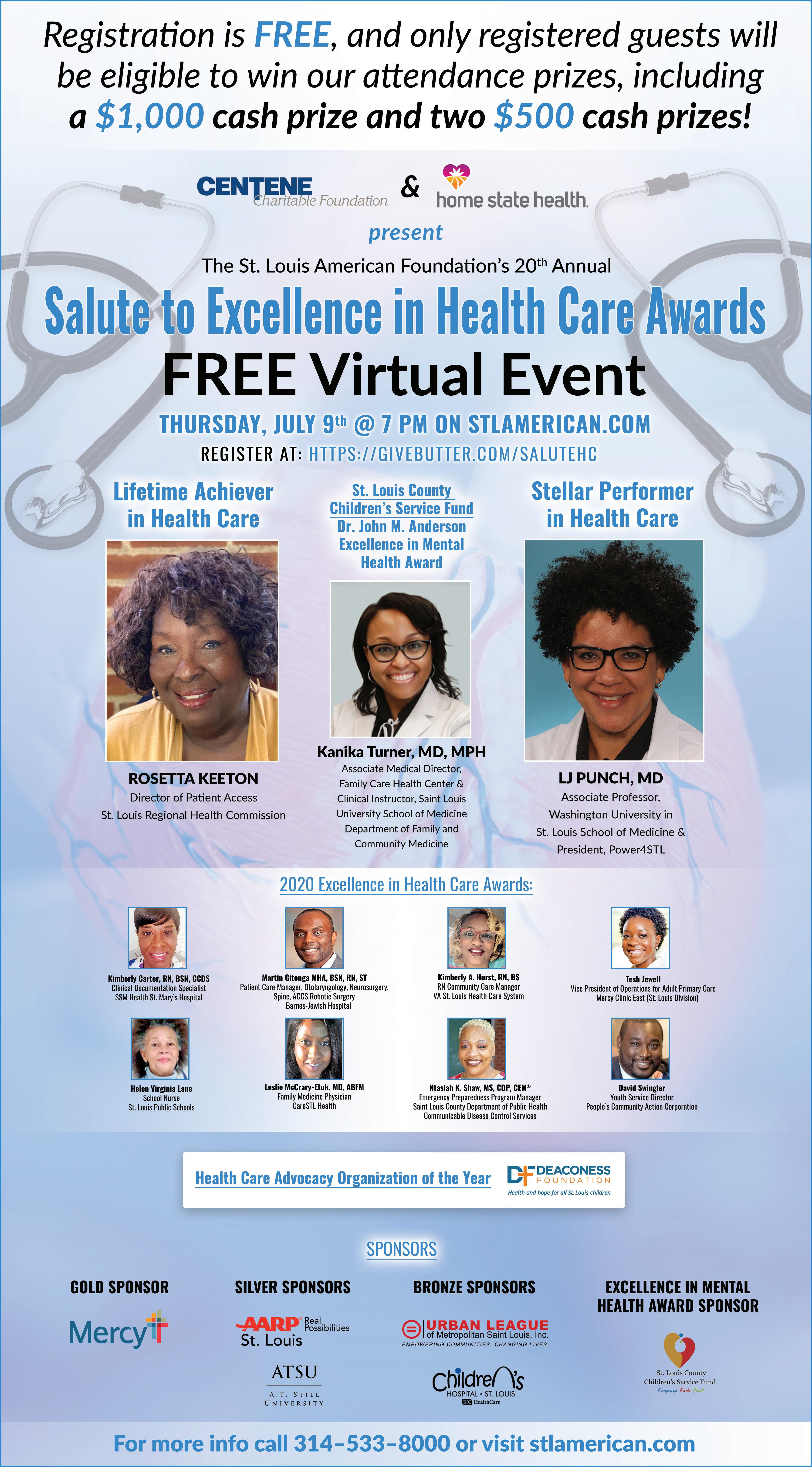


By Brittany Ferrell
For The St. Louis American
Accidental drowning is a leading cause of death for Black youth. Most conversations about Black youth’s lack of swimming skills begin and end with the assumption that their parents are to blame. There are plenty of swimming pools in the St. Louis region, so if youth don’t know how to swim, it must be because their parents didn’t find it important to teach them.
In reality, it is not unusual for children who cannot swim to also have parents who cannot swim; it is a conundrum that does not exist in a vacuum. There is a more sinister reason that
n Know how deep the water is. Consider setting parameters, such as non-swimmers entering the water where it is no deeper than chest-deep.
Black youths, and the Black community as a whole, are often unfamiliar with swimming as a skill and recreational activity.
There is a long history of Black people being kept out of otherwise public pools and beaches. The legacy of systemic rac-
ism and social inequities, such as segregated beaches and swimming pools, have had lasting impacts on Black people.
Here, in our beloved City of St. Louis, segregation of public pools is no unfamiliar concept. One of the most infamous stories is that of the Fairground Park pool. It was only 71 years ago when more than 30 Black youth arrived to swim in the newly integrated pool, only to be met by a mob of angry white St. Louisans who committed acts of violence in response to the Black youth’s presence.
Across the country Black people were largely and systematically denied access to See WATER SAFETY, A13
By Drishti Sinha For The St. Louis American
Our society is plagued by the chronic pandemic of institutionalized racism, and healthcare is no exception. As a medical student involved with research, I analyze in-depth interviews of majority Black mothers with low incomes to identify barriers to care during and after pregnancy. I am deeply troubled when I hear the personal stories of mothers who routinely cannot access basic medical care after giving birth to their children, because they no longer have health insurance. I am disheartened by patients’ justified distrust and withdrawal from a system that is inherently not designed to serve them.

n As a society, we have the civic duty to vote for the promotion of health equity in our communities.
At the start of medical school, I took an oath to “confront historical traumas and systemic injustices that continue to impact people’s lives, especially those perpetuated by the institution of medicine.” Yet, while other medical students and I have provided free health screenings at local grocery stores and helped provide care through our free student-run clinic, this is not enough. There must be systemic, sustainable change that ensures people receive equitable care, even if these safety-net, volunteer-based programs were to disappear. A step I have taken along with other fellow classmates is to create LouHealth, a public health and policy advocacy group that aims to promote health equity, especially during a pandemic that has placed stresses on an already broken system. Similarly, as a society, we have the civic duty to vote for the promotion of health equity in our communities.
To take an important step in combating injustice, we must pass Missouri Medicaid Expansion on August 4, which is projected to cover 270,000 Missourians making under 138% of the poverty line ($36,156 for a family of four). While all low-income Missourians suffer the effects of classism when attempting to access care, the poverty
By Sandra Jordan
Of The St. Louis American
‘A very strong economic argument for Medicaid expansion’
As the COVID-19 pandemic continues and the August 4 election is just weeks away, the statewide push to expand eligibility for Medicaid in Missouri comes as millions have lost jobs and health insurance in the state as a result of the pandemic. If voters approve Amendment 2 to expand Medicaid, advocates say, nearly a quarter-million additional people will get to enroll in MO HealthNet (as Medicaid is called in this state). Missouri currently has one of the lowest income-eligibility thresholds in the nation. A family of
four can make no more than $5,550 a year to be eligible. Mo HealthNet provides health insurance for low-income children and parents, seniors, pregnant women, and people with disabilities. Adults who are not parents, seniors, disabled or pregnant are not eligible, regardless of income. Approving Medicaid expansion would raise that income threshold to approximately $18,000 per year for an individual. This would give many Missourians, including childless adults, the option of having health insurance for the first time and it would significantly narrow the health coverage gap. With a half-million
n Between the years 2022 and 2026, Regional Economic Models Inc. found that Medicaid expansion would result in an annual job growth of 16,330 new jobs each year across Missouri.
Missourians filing for unemployment in the last few months since COVID-19 spread into the state, the temporary Medicaid assistance will allow Missourians to seek health care when they are sick, buy medications, and maintain their health, so they can go to work, and take care of their families.
If wider health coverage for those who may have lost
income due to the pandemic doesn’t affirm the need to expand MO HealthNet Medicaid services, its positive effect on economic growth Missouri economy will. The Regional Economic Models Inc. (REMI) report (https://bit. ly/2BPuH7G) commissioned by the Missouri Foundation for Health provides a comprehensive analysis of how federal funding of expansion of MO
HealthNet Medicaid services will affect the state’s economy. The report, released in early June, includes a close analysis of inter-industry relationships, estimates of the long-run stability of the economy, and measures effects of the geographic concentration of labor and industry. The REMI report finds that Medicaid expansion would have several positive outcomes in Missouri’s economy.
Between the years 2022 and 2026, the REMI found that Medicaid expansion would result in an annual job growth of 16,330 new jobs each year across the state, with 9 out of 10 of those new jobs paying at least $15/hour for full time
workers; with most new jobs located outside of the Kansas City and St. Louis metropolitan areas; large-scale annual economic growth, with an average $2.5 billion increase in economic output, $1.6 billion in gross domestic product, and $1.1 billion in personal income. Job growth is projected to expand well beyond health care, with 79% of new jobs created in other industries including retail and construction.
“This report makes a very strong economic argument for Medicaid expansion,” Ryan Barker, vice president of Strategic Initiatives for the

Continued from A12
rate of Black households is more than double that of white households. The existence of such disparities, largely attributable to a legacy of discrimination in housing, education, and employment, makes programs like Medicaid vital to building health equity. A recent study found that in states that expanded Medicaid, racial inequalities in coverage decreased by 23%, while another found substantial decreases in deaths for both minorities and low-income individuals.
Continued from A12 public waters, and the consequences of such racial discrimination is still disproportionately impacting Black lives today, resulting in swimming never becoming a part of Black recreational culture.
Swimming is a valuable, life-saving lifetime skill, yet 64% of Black youth have no or low ability to swim. In addition to generational traumas and fear of drowning, there are often cost barriers that render the opportunity to learn to swim an impossibility for many families. These are hard truths that the non-profit organization University City Swim Club (UCSC), which offers swim teams for youth and adults, is grappling with. Just before the nation faced one of the most pivotal civil rights movements of our time, UCSC had been undergoing transformation to align its values to the needs of the community it serves and to do its part to address racial disparities by teaching more Black youth how to swim.
In partnership with the University City School District, UCSC plans to roll out programming in the months to come to offer swimming lessons that explicitly address historical trauma and sensitively guide Black swimmers to become safer in the water and to see themselves as swimmers – whether competitive or recreational – in this historically white sport. The new programming is tailored to all ages and will consist of outreach and member recruitment of Black families, water safety education, swim lessons, and opportunities to grow as strong swimmers in UCSC’s competitive swim team. With many pools closed or inaccessible this summer, rivers and lakes are becoming popular choices. Swimming in this so-called open water poses different risks than swimming in a pool, making water safety education even more critical this summer. Black children are twice as likely as white children to drown in open water, and research shows that for every fatal child drowning, nearly seven children are
Continued from A12
Missouri Foundation for Health said, “to say nothing of the moral imperative to get more people covered under health insurance, especially during a pandemic.” By law, the cost to expand Medicaid expansion comes from the federal government.
Feds cover 90% of the cost for the expansion population of Missouri’s Medicaid program. That means expanding Medicaid would also return federal tax dollars to state, saving an estimated $39 million in state funding in the first year, keeping rural hospitals open, and creating over 16,000 new jobs on average per year. Additionally, Barker said
Currently, most mothers on Missouri Medicaid—particularly those who are Black—lose Medicaid coverage shortly after giving birth. While unexpanded Medicaid does not cover non-disabled adults without children, it does cover pregnant women with incomes below about $52,000/year for a family of four. However, 60 days after giving birth, this threshold for Medicaid qualification drops to include only parents who make under $5,500/year for a family of four, ripping healthcare away from women after the physical trauma of giving birth.
According to the Missouri Foundation for Health, 76% of Black women in Missouri who had a live birth were on Medicaid, almost

twice that of white women, disproportionately leaving low-income, Black women at risk for losing healthcare after giving birth. Black women with low incomes face these injustices in the context of the multiplicative effects of racism, sexism, and classism and thus are particularly vulnerable to health inequities perpetuated by unexpanded Medicaid.
Our current system tells women that the only time their health needs matter is during pregnancy. This heinous oversight further perpetuates the glaring health disparities faced by Black women in Missouri. Maternal mortality (deaths related to pregnancy within one year of delivery) is nearly three times as high for Black women
compared to white women in Missouri, according to a Washington University brief Racial disparities in maternal mortality exist for Black women regardless of income; however, without Medicaid expansion, Black women with lower incomes cannot get the long-term care needed before and after pregnancy to prevent and manage chronic diseases that contribute to their higher maternal mortality risk. These include hypertension, diabetes, and heart disease, which are already more prevalent in this population, with increasing evidence that trauma related to experiencing racism contributes to these adverse health outcomes.
These women need per-
sistent monitoring for these chronic diseases, and Medicaid expansion will provide this necessary access to longitudinal healthcare after pregnancy. However, the current system leads to a preventable loss of Black lives.
On August 4, we can take a stand to improve healthcare access for low-income, Black women. While these women are among many who will benefit from Medicaid expansion, the healthcare system has historically failed Black women.
On August 4, we can vote to begin dismantling systems that have disproportionately devastated economically disadvantaged Black communities in Missouri.
Personally, I will continue
working to uphold the oath I took at the start of medical school—through advocating for change, highlighting voices in our community, and sharing knowledge. While a substantial amount of work remains, expanding Medicaid is a step in the right direction. More information about Missouri Amendment 2, the Medicaid Expansion Initiative, can be found at https://tinyurl. com/Medicaid-ballot.
Drishti Sinha is a second-year medical student at the Washington University School of Medicine in St. Louis and a co-founder of LouHealth, a student-led, policy and public health advocacy response to COVID-19.

seen in the emergency room for a non-fatal (though terribly frightening and traumatic) drowning incident. And these figures don’t include those who are rescued and not taken to the emergency room. Given racial disparities in swimming knowledge and drowning rates, the leadership of UCSC is particularly concerned about poor outcomes in the broader University City community and throughout our region.
How to stay safe in the water
Be prepared and plan head
Learn about the location where you are going to swim beforehand.
Is there a lifeguard present? It is discouraged to swim in an
other health programs within Medicaid where the state currently pays 100 percent of the cost – the uninsured women’s health program for example, Medicaid expansion would also cover most of the costs instead of the state.
“If you expand Medicaid, then, that program fully gets wrapped up into the Medicaid expansion, and instead of the state spending 100% of the cost, all of the sudden, the feds are covering 90% of the cost and the state cost is down to 10%,” Barker said. “There are several of those programs where the state would just see this 90% savings to what they are currently paying.”
“The reduction of state government spending would effectively expand Missouri’s operating budget to reallocate funding for other priorities,”
area that does not have a lifeguard. If there is no lifeguard, designate an adult to watch the water. If open water, is there a designated swimming area? Is there a designated boating area?
Know how deep the water is. Consider setting parameters, such as non-swimmers entering the water where it is no deeper than chest-deep. Be aware of the weather. It is unsafe to swim in a thunderstorm. Wait at least 30 minutes after the last sound of thunder is heard before resuming activity in the water. Bring the right equipment, at least a first aid kit and a cell phone in case of an emergency.
If you have access to a life jacket, non-swimmers should use one. It is important that they are the appropriate size. A
the REMI analysis states, adding that the impact “would be spread throughout the state.”
Disparities in insurance coverage, essential worker jobs that don’t offer livable wages or health insurance, and exposure to COVID-19 are having a disproportionate impact on African Americans. Barker said Medicaid expansion will help reduce the disparity.
“Expanding Medicaid will help eliminate that coverage gap,” he said. Before the pandemic, Barker said Missouri had about a 5% disparity, with an uninsured rate for whites at 10%, compared to 15% uninsured for African Americans. With the pandemic, unemployment hit communities of color harder than white communities. Barker said it is expected that dispar-
small child should not wear a life jacket intended for an older child or an adult, as this could put them at more risk.
If you do not have access to a life jacket, bring a flotation device that can be thrown to someone in an emergency.
Important! Water wings, life jackets, and inflatable toys are not adequate substitutes for adult supervision.
When you arrive
Look to see if the area is safe.
Check water conditions before entering. Even if it is a familiar spot, it is possible that something might have changed that could be dangerous.
Remind everyone about how to be safe in and around the water before your trip to the pool or swimming spot and
ities in insurance coverage has probably gotten wider with the pandemic.
“What we’ve seen in other states is that disparity lessens significantly with Medicaid expansion. It really does provide a safety net for folks when they do become unemployed,” he said.
Thirty-six states and the District of Columbia have already expanded Medicaid for their residents, including neighboring states of Iowa, Illinois, Kentucky and Arkansas. Barker said that other states have shown the positive results of that expansion and that includes covering the new category of childless adults.
“When a consumer chooses to apply under one of the expansion populations, they are once again getting that 90 percent match,” Barker said.
again upon arrival.
Non-swimmers and young swimmers should know that if they see someone who needs help, they should reach out with or throw a flotation device and call for help, but should not enter the water.
If you get in trouble, stay calm.
Do not go in an area where the lifeguard / assigned adult is unable to see you.
If the water is murky, do not go underwater. If you get into trouble, it is difficult for someone to see if you need help.
If you become tired, stop swimming. It is not safe to swim if you are tired.
If you have a cramp, stop the activity, change position, try to float until the muscle is relaxed.
Do not hold your breath or participate in breathing compe-
While the state cannot automatically switch Medicaid clients into the new expanded categories to get higher federal reimbursements, Barker said new consumers would need to apply for the new categories and that would lessen the state’s share of the cost.
Another area where Barker said states are seeing a lot of savings through Medicaid expansion is in prison health.
“Other state departments that are spending money on health care, those costs can be shifted to Medicaid and receive this federal match.
The biggest example is Department of Corrections,” Barker said.
“If a prisoner needs health care, the Department of Corrections has a contract to provide that health care to prisoners. Right now, we’re
titions. This is very dangerous. Set specific swimming rules for each individual in a family or group based on swimming ability. For example, inexperienced swimmers should stay in water less than chest deep. Do not push people under the water. Do not enter the water headfirst in open water.
In an emergency
Call 911 immediately if someone is unconscious, has experienced a head, neck or spinal injury, or is profusely bleeding.
Brittany Ferrell, MPH, RN, is a public health scholar, board member at University City Swim Club, and Ph.D. student at Goldfarb School of Nursing.
paying the full cost for those prisoners’ health care. If there is Medicaid expansion and a prisoner would need hospital care, and they would actually leave the prison to receive health care, they would be eligible for Medicaid coverage while they are in the hospital.” As soon as they become Medicaid-eligible, Missouri will receive 90% of that cost.
“There really is significant savings generated from Medicaid expansion,” Barker said. “Medicaid expansion makes a lot of sense for Missouri.”
Vote Yes on Amendment 2 on the August ballot to approve Medicaid expansion in Missouri. To read the Missouri Foundation for Health report, visit https://tinyurl.com/MFHMedicaid.

Let’s start with the good news. The bill to close the Workhouse, or the Medium Security Institution, unanimously passed out of the aldermanic Public Safety Committee on Tuesday, July 7. For advocates who have been working tirelessly on the Close the Workhouse campaign for two years, this was a huge moment. Board Bill 92 includes language from the Close the Workhouse campaign’s plan, along with most of advocates’ suggested amendments. The bill will also create two funds of $7.6 million to address neighborhood safety and re-entry programs.
“If we use this money in a more effective and efficient manner, I think we will see a safer and better city,” President of the Board of Aldermen Lewis Reed told the committee. “And I think we’ll see the people who have formerly been detained coming out and leading productive lives.”
bill is just a cover. In fact, on Friday, June 26, a coalition of alderpeople introduced an amendment to the budget to Close The Workhouse, and they almost won.
“We had the votes,”
Alderwoman Megan Ellyia Green (D-Ward 15) wrote in a column for The American “Board President Lewis Reed knew that we had the votes. Over three years of grassroots organizing was about to pay off.”

If all goes smoothly, the bill could pass this month and the jail could close by the end of the year.
Here’s the big “but.”
The bill was introduced by Reed on Monday, June 29. Both the day and the man are important here. Reed publicly announced the bill following a seven-hour Board of Aldermen meeting regarding Reed’s bill to speed up the process of privatizing St. Louis-Lambert International Airport. Reed has been taking some heat for doing Republican billionaire Rex Sinquefield’s bidding on leasing operations of the airport, leading some to suspect that the Close the Workhouse
If Reed really cared about closing the Workhouse, the coalition of aldermen say, he would have supported this effort. Instead, he made a move to squash it. He instructed the chairman of the Ways and Means Committee to put the budget bill on the informal calendar — “in spite of hours of fearmongering debate that if we didn’t pass a budget it would revert to the initial proposed budget, thus taking away ward capital,” Green said.
There are less than 100 inmates at the Workhouse and 214 vacancies in the city’s other jail, the St. Louis Justice Center. There’s $8 million allocated toward the Workhouse in this year’s budget (which will be reallocated through Board Bill 93 if Reed’s bill passes).
So, on Monday, aldermen were supposed to get back to passing the budget — and fighting for the Workhouse amendment — during a special meeting. But that’s not what happened.
“Our City Charter says (the budget) must be passed by July 1,” Green wrote. “Instead, the city budget was left on

by
asinine.”
the informal calendar, and it became abundantly clear that this seven-hour special session was for special interests.”
Instead, Reed wanted to talk about Board Bill 71, which puts a measure on the November 3 ballot that would require that the City of St. Louis to enter into a speedy agreement to privatize Lambert Airport operations soon after voters approve it.
The aldermanic session ends on Friday, July 10. In order to get the Close the Workhouse

bill done, Reed would have to call special sessions. And in those meetings, he would be able to also do other city business – for example, make moves on the airport privatization bill.
So, what’s wrong with Reed’s airport bill? People get to vote on what happens to the airport, right?
There are a lot of problems, but here’s a big one. Board Bill 71 outlines that city leaders will have 30 days to negotiate and approve a contract to privatize airport operations.
“As my colleague Alderman Bret Narayan (D-Ward-24) so masterfully brought up, it can take us from six months to a year to get a contract to do a traffic study for speed humps (a continual frustration of mine),” Green wrote. “Having only 30 days to negotiate and approve a contract to privatize operation of our largest city asset is
Also, the public would not get to weigh in on the contract before it went to a public vote, which is different than the bills that Green and Alderwoman Cara Spencer (D-Ward 20) have introduced.
“Reed’s bill asks for a blank check,” Spencer said.
The EYE reached out to Reed’s office and has not yet received a response.
On July 7, Spencer announced publicly that she believes she found another big problem with Reed’s bill— at least for the city’s wallet.
Sinquefield is currently backing an initiative petition to privatize airport operations.
According to several former city counselors, led by Jim Wilson, the petition would require two separate votes on two separate ballots to be ratified by city voters, Spencer stated in a press release. A vote in November would need only 50% to pass. If approved, the actual proposed charter amendment would go to a vote at the next election, in March 2021.

The second vote would require at least 60% approval. But Reed’s bill (which is almost identical to Sinquefield’s ballot language) would only require the November vote with at least 60% approval to pass. It also requires the city to lease the airport to private interests by April 2021. Why is this important?
Because if a deal isn’t inked by June 2021, then Sinquefield would lose about $45 million that city taxpayers would owe him, per the consulting agreement to explore privatizing airport operations first initiated by then-Mayor Francis G. Slay soon before he stepped down as mayor – and stepped into a private law practice that soon added to its portfolio consulting on leasing airport operations. Slay’s former campaign manager and chief of staff Jeff Rainford is also in the airport leasing consulting scrum. Sinquefield was the single largest campaign donor to Slay and Rainford. The EYE was predicated on the notion that “what it is it ain’t,” but in this case, what it is it pretty much is. Here was the deal. The city ended its consulting contract with the Sinquefield-backed Grow Missouri in January (Mayor Lyda Krewson got cold feet, for reasons that remain unexplained), but the fine print of the deal stated that if a lease deal gets cut before June 2021, Sinquefield would still get paid. Through the petition process, the deal wouldn’t be done in time for Sinquefield to recoup his investment in the airport speculation. Reed’s bill would require that it be done by April, in time for Sinquefield to recoup.
“This is nothing more than legislation to line the pockets of a billionaire,” Spencer said, with the backing of several former city counselors. Wilson was city counselor for 11 years and served a total of 29 years in the office. (Wilson served under Mayor Vince Schoemehl, who was last seen in the EYE trying to recruit Black influentials to Spencer’s campaign for mayor. Wilson also has joined with Alderman Jeffrey Boyd in suing to wrest control of parking operations from Treasurer Tishaura O. Jones.) Others agreeing with Wilson on the charter amendment process were Tom Ray, who also served as city counselor and worked in the office for 30 years, and Ed Hanlon, a former deputy city counselor who worked 28 years in the office. (Ray is now of counsel at Armstrong Teasdale, where his staff bio states he has put together more than 200 TIF deals with the City of St. Louis.)
Spencer also believes that Reed’s Workhouse bill could be just a cover for moving forward an airport bill that gets Sinquefield paid.

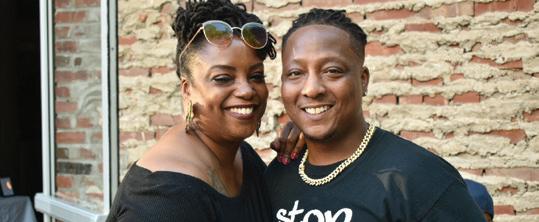
MTC’s ‘And In This
By Kenya Vaughn Of The St. Louis American
“Muhammad Ali for all intents and purposes was a living black superhero – one of the first living black superheroes,” said playwright Idris Goodwin. “And you know how there’s a ‘Batman Begins’? Well, this is like ‘Ali Begins.’”
Metro Theater Company (MTC), a professional theater for youth and families, is continuing its summer digital streaming series with the critically acclaimed 2016 production of Goodwin’s And In This Corner: Cassius Clay. The production will be available to watch via streaming through July 26. Before Muhammad Ali became one of the greatest heavyweights in the history of boxing, before he famously stated “Float like a butterfly, sting like a bee,” before he became the dynamic, larger-than-life celebrity sports hero, he was Cassius Clay Jr., growing up in racially segregated Jim Crow Louisville, Kentucky.
“A lot of people don’t know that story,” Goodwin said. “A lot of people don’t know why he got into boxing and who his first trainer was and about him going to the Olympics – and how he negotiated and dealt with segregation in his city.
And In This Corner: Cassius Clay gives a glimpse into the life of the young man who would become Muhammad Ali – and his relationship with a white police officer who introduced him to boxing in Jim Crow-era Louisville.
“He goes on to be one of the biggest social justice warriors and warriors against discrimination, but he came from an environment that was racially segregated,” Goodwin said.
The play was a hit of the 2015-16 theater season and generated numerous accolades for Metro Theater Company, including the Network for Strong Communities’ prestigious Paulie Award for creating positive change through collaborative nonprofit partnerships. The production, directed by MTC

of
Metro Theater Company will be streaming its 2016 production of ‘And In This Corner Cassius Clay’ through July 26 at https://metroplays.org/watchnow
Artistic Director Julia Flood, is currently available in a pay-what-you-can pay-per-view environment at metroplays.org, expanding the company’s artistic footprint into the living rooms of families in St. Louis and across the
world as the St. Louis community adjusts to changes in public gatherings to prevent the See Icon, B2
National financial firm funds residency program for local Arts nonprofit
By Ashley Jones For The St. Louis American
American Portfolios Financial Service Inc. is putting its money where the arts are. The organization’s nonprofit arm, American Portfolios Foundation, Inc., recently made a two-year $200,000 funding commitment that will be applied to establishing the “AP for LIFE” Creative Residency with L.I.F.E. Arts, Inc.
“American Portfolios believe actions speak louder than words,” CEO Lon T. Dolber said in a statement. “We have always been committed to serving people and places we are connected to through our Corporate Social Responsibility (CSR) efforts, which allow us to make positive change – not solely with words or donations, but by contributing time and resources.”
L.I.F.E. Arts Inc (Leadership, Innovation, Faith and Entrepreneurship), a 501(c)(3) nonprofit that provides artistic resources, opportunities, mentoring and positive experiences to help
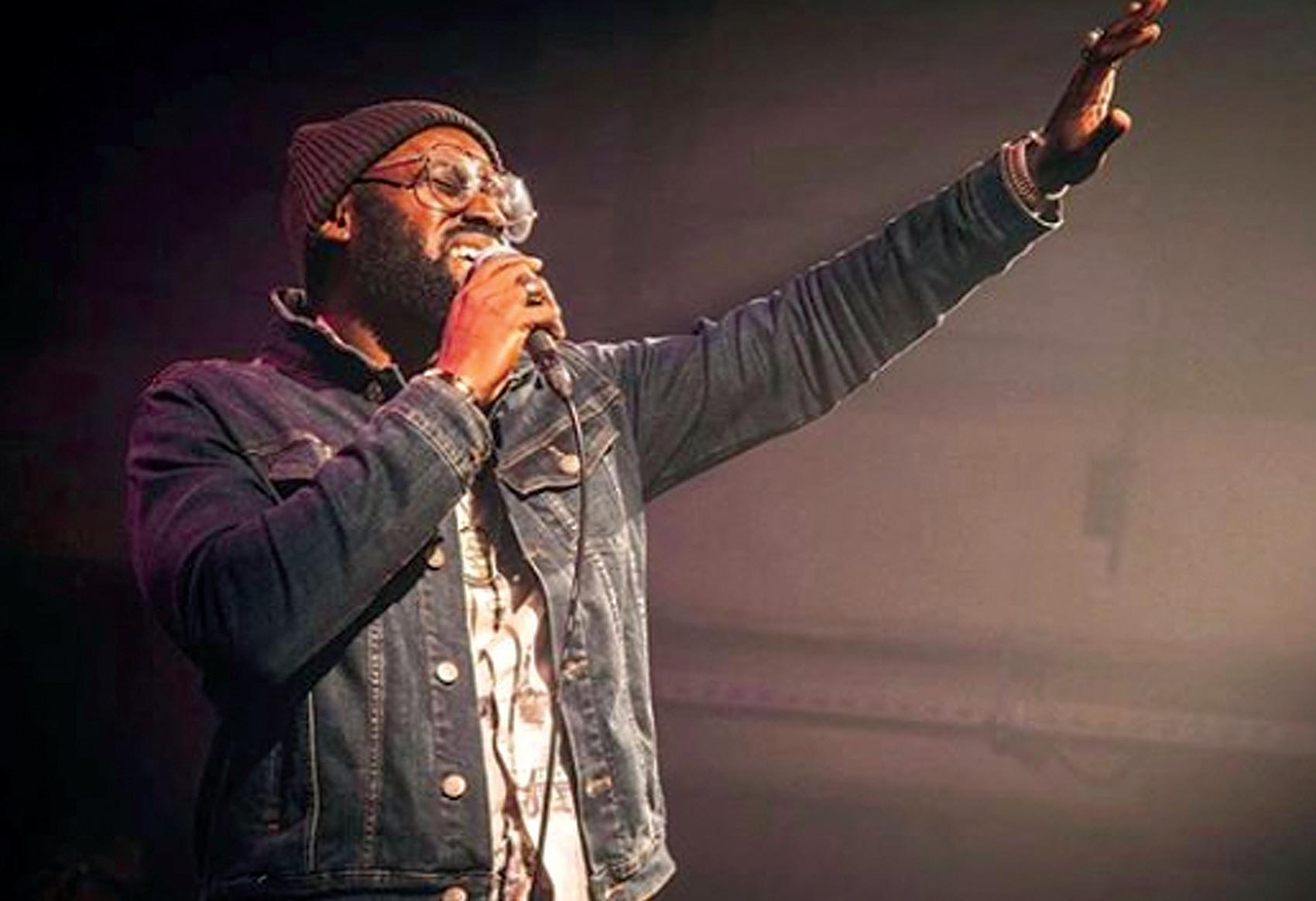
Singer, songwriter and activist Brian Owens is the founder and executive director of L.I.F.E. Arts, Inc., which recently announced the ‘AP for LIFE’ Creative Residency, thanks to a twoyear, $200,000 funding commitment from American Portfolios Foundation, Inc.
students in underserved communities throughout Ferguson and the St. Louis metropolitan area to access consistent and localized programs, experiences and infrastructure. The organization was founded by singer, songwriter and activist Brian Owens to be an outlet for creative response to the Ferguson unrest. Six years after Ferguson erupted in response to the police killing of Michael Brown, George Floyd’s death during arrest in Minneapolis has reinvigorated protests and a movement to end police abuse against Black people and systemic racism.
“I want to engage and involve myself with the people who are going to be giving voice to movements, issues, joys, pain, love and hurt,” said Owens, who also serves as executive direc-

Rapper, producer and St. Louis native Mvstermind is gearing up for the release of his latest single ‘GEMS,’ which drops July 10.
St. Louis rapper to release new single from upcoming trilogy of EPs on July 10
By Kenya Vaughn Of The
St. Louis American
Mvstermind is so different that his eclectic nature bleeds into his artist bio.
“Turn off all the noise, take a deep breath, and listen closely,” the statement read. “That electricity you feel in the air is St. Louis artist and producer, Mvstermind, putting his creative energy out into the world.”
Yep. That’s Mvstermind.
He further illustrates his unique perspective in the context of hip-hop with “GEMS,” the first single from his upcoming project – a series of three interconnected EPs titled “BE,” “GREAT” and “FOOL,” originally intended as a 23-song project called “BEGREATFOOL.”
“I might rob the world for all my worth / been working, working since my birth / but I’ll get blessed / I’ll dig it out the dirt, GEMS,” Mvstermind raps.
The accompanying video for the track, directed by Keaton Jones, is scheduled to drop later this summer. Co-produced with rising St. Louis producer Michael Franco, the record samples the 1976 track, “JP Walk,” by Baltimore funk ensemble Sound Experience. His unique flow on “GEMS” – which bravely takes on tackling with anxiety and overcoming adversity – rests comfortably atop the heavy beats and soulful arrangements.
The track was recorded before the arrival of coronavirus, however, Mvstermind feels that the song speaks to the current moment.
n The accompanying video for the track, directed by Keaton Jones, is scheduled to drop later this summer.
“GEMS is the feeling of the world right now,” Mvstermind said. “So many people’s incomes have been displaced since COVID-19, leaving them with the question: ‘Will I ever get my worth?’ Despite the anxieties, through pressure and patience, you can dig that gem out of the dirt. Keep digging. It’s still there waiting for you to be persistent, waiting for you to acknowledge it’s very existence.” He considers himself to be a representative of all the dreamers and doers in the world. He said he is “GEMS” – along with his upcoming releases – to “lift the weight from his own chest and to get down to work.”
Mvstermind performed at high-profile events like Loufest, A3C, and SXSW, and shared stages with acts such as Chance the Rapper, Lupe Fiasco, Travis Scott and more. Over the last few years, Mvstermind has also formed partnerships with Red Bull and Dr. Scholl’s – where he designed a cutting-edge, eco-friendly sneaker for a worldwide audience. The shoe, released in 2018, was made from recyclable materials which is a first for Dr. Scholl’s Shoes.
See GEMS, B4
St. Louis photographer shows fathers with their children to debunk stereotypes
By Andrea Y. Henderson Of St. Louis Public Radio
As Naisha Bailey-Johnson
scrolled through her social media feeds, she noticed nearly every photograph or video on her timelines were unfavorable shots of African American men. She saw mugshots, stills of boys flashing guns and the lasting images of unarmed men killed at the hands of police.
Alarmed at what she saw, Bailey-Johnson, 33, decided to start a Black father’s photography project to depict that Black men are more than the negative glimpses that are portrayed in mass media.
“I’m taking photos to show the positive images of them being with the children, nurturing their kids, being providers, being their guiding light,” said Bailey-Johnson, who owns YoSnap Photo Booth and Photography
African American fathers have long been stereotyped as being absent in their children’s lives. But a recent Center for Disease Control and Prevention report on fatherchild involvement, found that Black fathers are more involved than Latinx, white and other fathers.
Bailey-Johnson wants her photography project to uplift Black people. She hopes to photograph 20 Black men who have never taken a professional


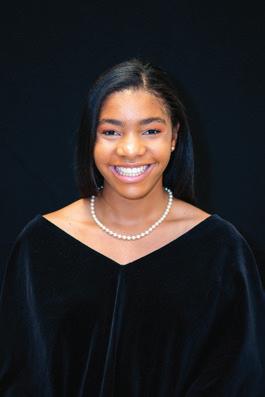

photo shoot with their children. “I hope that it [the images] would humanize the Black male right now,” she said. “There’s power in photography. We are in the times where we believe what we see, so if we see positive images, hopefully it will just change the mindset of how people feel about the Black community and Black men in general.”
Listed below are a few of the fathers Bailey-Johnson has photographed so far: Michael Gerdine, business owner and coach
When people see Michael Gerdine, 32, he is often surrounded by children. He coaches football and basketball at St. Mary’s High School, and he is also a little league coach at Mathews-Dickey Boys’ & Girls’Club. Gerdine is the father of two, but he said he is a father figure to many children in the area. He enjoys spending time playing football with his 13-year-old son and entertaining his 3-year-old daughter in the park. Gerdine, who grew up in north St. Louis, uses his position as a coach to teach children that Black men are present and are important figures in the community.
Gerdine is aware of the
influence he has on his children and the ones he coaches. He said if the media only portrays Black men as drug dealers and gang members, then people will never get to see the Black doctors, lawyers, business men, postal workers, plumbers and other men who are in the community and setting a strong example for Black children.
“They portray Black fathers in a bad light. It’s frustrating, but at the same time, I feel like if we continue to see more fathers doing positive things, then the negative stigma will go away.”
Gerdine said the stereotype that affects him the most is that Black men are absent fathers.
“I don’t even associate with a man if he’s a father who didn’t take care of kids. I got a group of friends — about 10 to 12 of us — and all of us are fathers and everybody’s active in their children’s lives.”
Chad Roundtree, real
estate investor
Chad Roundtree, 37, remembers his father taking him to the park and shopping as a child, which are now things he enjoys doing with his 4-year-old son and 3-year-old daughter. When Roundtree and his wife are not parenting together, he enjoys taking his children on outdoor adventures such as fishing. He said it’s important for white people to see Black men as family men and not threats.
For Roundtree, being a dad is delightful, but is not always a pleasant experience. Occasionally, he meets white people who would commend him for gracefully taking care
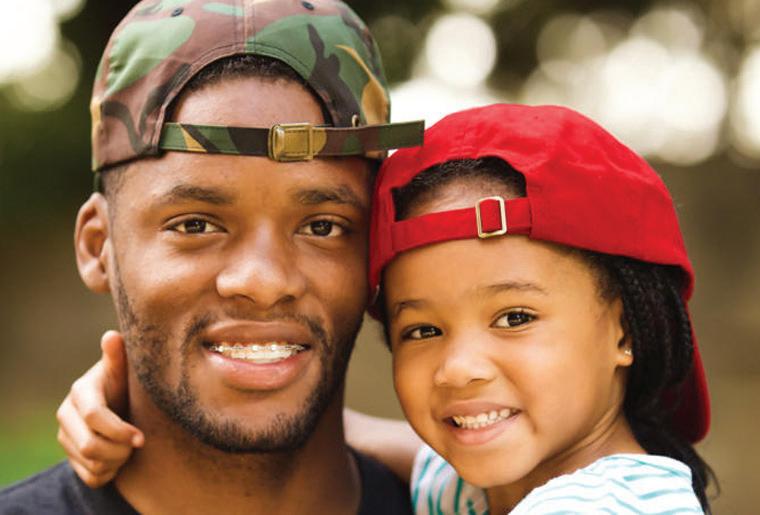
(Above) Joshua Johnson says he enjoys teaching his daughter life lessons, so she can be an informed young woman.
(Right) Naisha Bailey-Johnson devotes her photography to dispel myths by showcasing Black fathers interacting with their children.
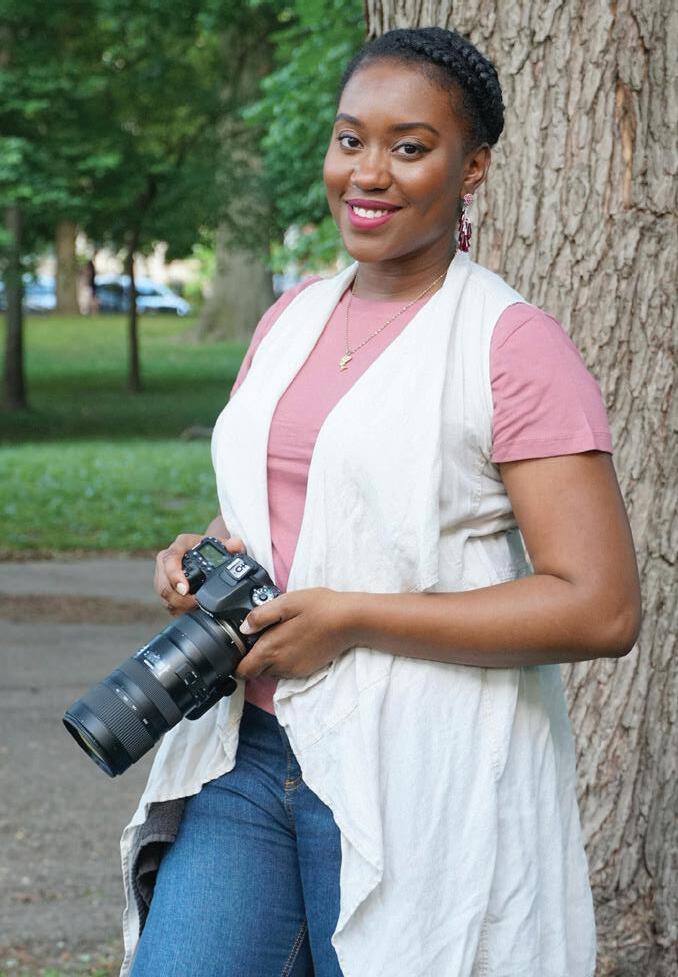
of both of his children while in public. He said if people saw more portraits or videos of Black fathers at home, then more people will know how much they are involved in their children’s lives.
Some stereotypes Roundtree hopes to break with positive images of Black men are the notions that many are violent, criminals and dependent on government assistance. He said many Black men lead loving and caring lives.
Joshua Johnson, public safety officer
For Joshua Johnson, being a father is his greatest accomplishment. However, the 31-year-old St. Louis University public safety officer said being a Black dad is complicated because “you have the duality of being a dad, but then you also have to keep in consideration all of the things that Black people or people of color are faced with within this
country and add those things to your parenting lessons.” Johnson likes to take his 5-year-old daughter on dinner dates to various restaurants. He uses the time to connect with her and talk to her about life. He recently took his daughter to a Black Lives Matter protest in the area. Johnson said it was one of his favorite outings with her, because he used the moment to teach her about Black history and the importance of standing up for her rights.
Johnson created the social platform, Dope Dad, to dispel negative narratives of Black men. Dope Dad showcases the relationship between Black fathers and their children through imagery and it provides support. “There’s so much more than the small glimpses of Black men that are shown. We are fathers. We are professionals. We are family men.”
As more positive images of Black fathers flood social media, Johnson hopes people will see Black men for who they are. “Go experience someone. If you see a Black man, then have a conversation with them and create a relationship, so that you can create your own feelings and your own viewpoint, instead of always taking someone else’s.” Men who are interested in the photo project should submit a brief bio statement and a message about why fatherhood is important to https://www.instagram.com/ yosnapstl/. Bailey-Johnson plans to release the photos at the end of the summer via social media and in a gallery setting. Republished with permission as part of a content sharing partnership with St. Louis Public Radio from https://news. stlpublicradio.org/.


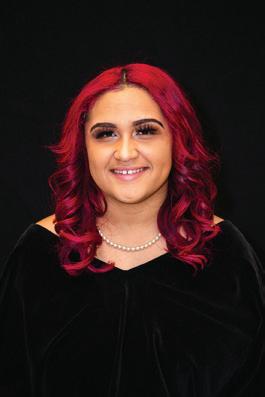
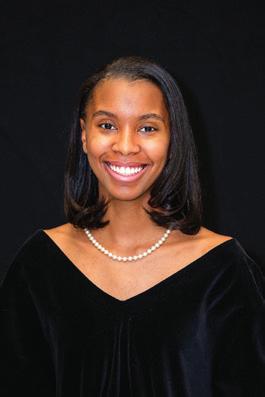




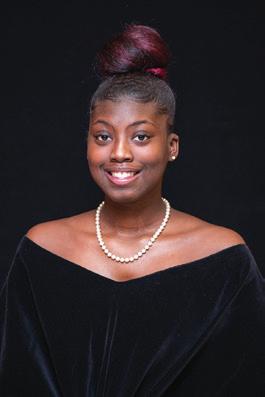
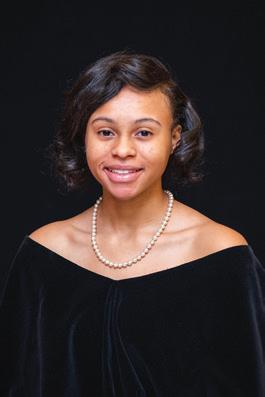
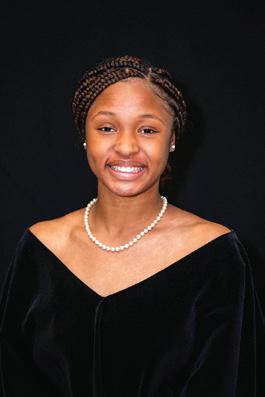

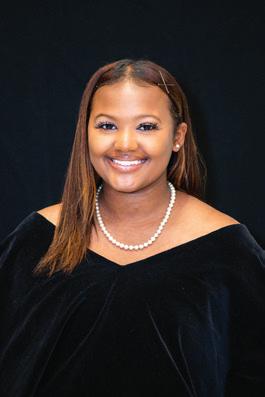







With Alvin
The once-in-a-lifetime quarterback just signed a once-in-alifetime contract.
Patrick Mahomes, the Kansas City Chiefs signal caller who won an MVP Award, a Super Bowl and Super Bowl MVP honors before the age of 25, is now the highest paid athlete in American history.
His 10-year contract extension could earn him $503 million, with $477 million in “guarantee mechanisms,” and a no trade clause. If the guarantees aren’t met, Mahomes can opt out of the deal.
In addition, Mahomes’ deal has a $140 million injury guarantee.
Mahomes immediately said he was grateful to “further invest in the Kansas City community,” during a Tuesday afternoon online press conference.
“Obviously, I wanted the security to take care of my family and future generations of my family,” Mahomes said.
His career record is 24-7 and he is 4-1 in the playoffs. Needless to say, he is beloved in Kansas City.
Chiefs chairman Clark Hunt called Mahomes “one of the most prolific athletes in all of sports.”
“With his dynamic play and infectious personality, he is one of the most recognized and beloved figures to put on the Chiefs uniform. He’s an extraordinary leader and a credit to the Kansas City community, and I’m delighted that he will be a member of the Chiefs for many years to come.”
He is also devoted to working against brutality and challenging his country to overcome the racism that impacts every one of its citizens.
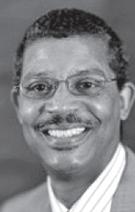
Could you imagine a black quarterback, saying “Black Lives Matter,” in a video with other black NFL stars, then, within weeks, becoming the game’s highest-paid player in history?
“But I want to keep great football players around me. I’d be lying if I sat here and said it doesn’t help me having great players all around me on the field. I knew this would be the right way to do it, to accomplish both things that are important to me.”
His on-field brilliance and sparkling personality have made him the face of the NFL – and his contract is worth more than Los Angeles Angels outfielder Mike Trout’s 426.5 million deal.
In an NFL that does not have a grand history when it comes to black quarterbacks, Mahomes is the most essential part of its immediate future.
The 10th pick in the 2017 NFL Draft, Mahomes would start one game that seasonand win it. Alex Smith was traded to the Washington Redskins, Mahomes took over the Chiefs and suffered an excruciating overtime loss to the New England Patriots in the 2018 AFC Championship game. Last year, after a scintillating playoff run that included three come-from-behind victories, the Chiefs won the franchise’s first Super Bowl in 50 years.
Part of this happening is the atmosphere calling for change – but most of it is that Mahomes is indeed a very special person. His intelligence surpasses his football talent, something that would seem impossible.
Kansas City Times sports columnist Vahe Gregorian, who bolted the Post-Dispatch several years ago for greener pastures on the west side of the state, wrote Tuesday, “Mahomes isn’t just an amazing, transformational player who influences everyone around him on the field. He is a principled, charismatic leader of the highest character in ways that reverberate off the field.”
“Mahomes is fundamentally wholesome, charitable, courteous and empathetic, the sort of person who looks people in the eye and really listens and knows part of his role is to make a difference for others.
“Someone Kansas City can embrace as an ideal ambassador for the city.”
Oh my gosh, could St. Louis use somebody like him at this point in its history.
Gregorian visited Mahomes’ hometown of Whitehouse,
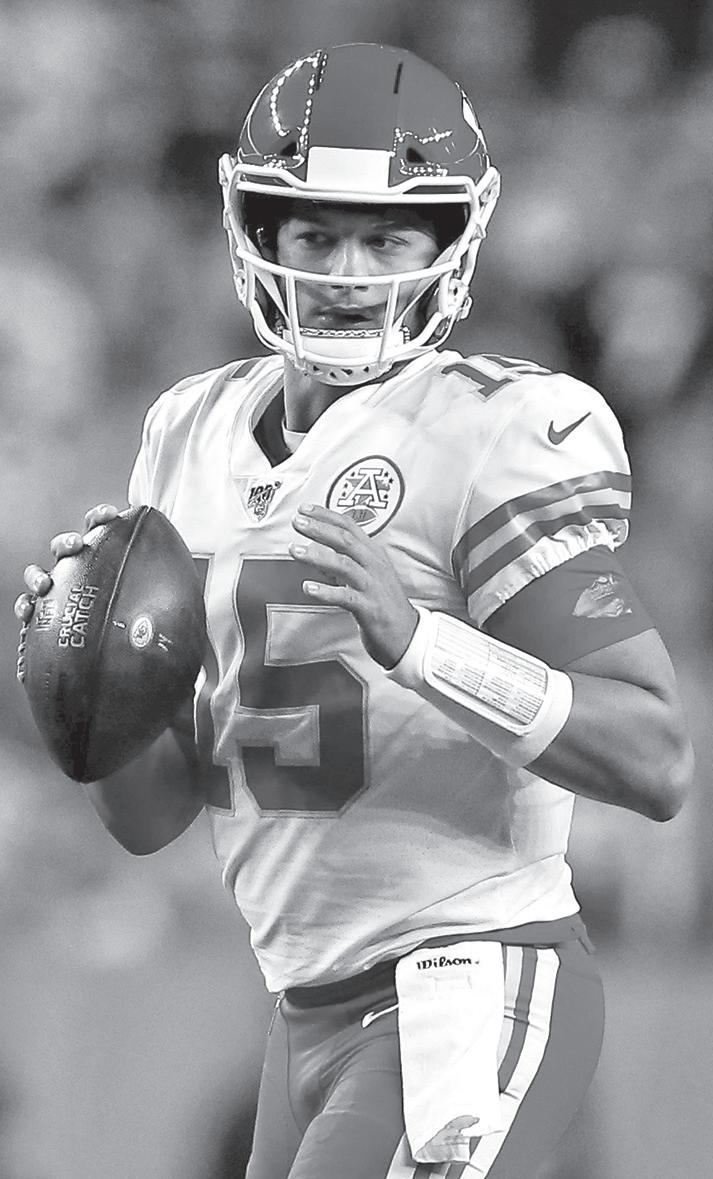
Texas a year ago and came away impressed.
“People talked about how he was the guy who always reminded the football coach of teammates’ birthdays and looked out for the ‘last kids’ picked on teams,” Gregorian wrote.
His seventh-grade
English teacher Dee Landers said Mahomes “was always good to have ... walk in the room; since he’d smile and make everyone feel part of it all.”
Now, Mahomes is the first athlete with a contract worth half-a-billion dollars. He’s not even 25.
His contract extension runs through the 2031 season, and he’ll be 36.
You can run for president
when you’re 35. You just have to turn 30 before you take office to run for U.S. Senate. It’s too soon to talk about Mahome’s life after football. But he would be a winner in that competition too – and the United States and the world would be better off than we are right now.
Big HBCU news
Saying, “I need to make the HBCU movement real so that others will follow,” fivestar basketball recruit Makur Maker announced last week that he would play for Howard University. Howard, an HBCU university in Washington, D.C., beat out finalists UCLA, Memphis, Kentucky and dozens of other schools for one of
nsIde sports
With Earl Austin Jr.
the nation’s top talent at center. Maker immediately went into a recruiting-mode when he wrote, “I hope I inspire guys like Mikey Williams to join me on this journey. I am committing to Howard U & coach Kenny Blakeney.” Williams will be a sophomore at San Ysidro High School in San Diego, California, when school resumes and the guard is ranked third by ESPN in the class of 2023.
In June, before Maker announced his plans, Williams wrote on Twitter, “Going to an HBCU wouldn’t be too bad. “
After Maker’s invitation to join him at Howard, Williams wrote, “On your side my boy let’s shock the world!!!”
Maker is the first five-star recruit and highest-ranked college basketball prospect to commit to an HBCU since the ESPN recruiting database started in 2007. He is a cousin of Detroit Pistons forward Thon Maker, was born in Kenya and then moved to Australia. He then moved to California in 2015.
Price isn’t right
Los Angeles Dodgers pitch David Price became the biggest name in Major League Baseball to opt out of the 2020 60-game regular season. “I have decided it is in the best interest of my health and my family’s health for me to not play this season,” wrote Price, whose two children are under the age of 4. Price is surrendering $11.9 million by not playing.
“It was the toughest decision I’ve had to make, knowing I’m making the right decision for myself and my family,” Price told USA Today. “We’ve been in conversation [with the Dodgers] for a long time about all of this.”
Meanwhile in St. Louis, relief pitcher Andrew Miller has become a rational spokesperson for all MLB players, not just his fellow Cardinals.
“I think there’s still some doubt that we’re going to have a season now,” Miller told USA TODAY.
“By no means is this a slam dunk. We’re trying, we’re going to give it our best effort, but for me to sit here and say 100 percent would be a lie.”
Mike Trout of the L.A. Angels and Buster Posey of the San Francisco Giants, two of the game’s biggest stars, are wavering as to whether they will play this season. If they both opt out, it could lead to a tidal wave of other players doing the same.
“I’d be surprised if you asked any player, if they gave you a hard-line, ‘No way, I’m not going to opt out ever’ answer,” Posey told the San Francisco Chronicle.
A new Tatum ‘do
Our own Jayson Tatum showed for his first workout with the Boston Celtics with a new hairstyle. It’s kind of a fluffy, curly short Afro kinda deal. You have to see a photo to try and understand it. But one thing is for sure. His game is on point.
“He walked in the first day and couldn’t miss a shot,” said teammate Danial Theis. Former Chicago Bull and NBA Scottie Pippen told “The Jump” on ESPN, “I think this has been a breakout season for Tatum. He started this season sort of on a mission to separate himself from the other players that have grown and developed as well as really showing some leadership, I think, by becoming an All-Star this season.”
“And I think if (his) team is to make a run, it has to rely on Tatum’s ability to carry them offensively. And I feel like he’s totally ready.”
The Reid Roundup Citing a shoulder injury that dates back to the early NBA season, Washington Wizards guard Bradley Beal will not participate when the season resumes later this month. “This was a difficult decision and one that I did not take lightly as the leader of this team,” Beal said in the team statement. “I wanted to help my teammates compete for a playoff spot in Orlando, but also understand that this will be best for all of us in the long term. I appreciate the support of my teammates, the fans and the entire organization and look forward to returning next season to continue the progress we have made.” Beal will be eligible to be traded at the season’s conclusion.
High school basketball phenom Makur Maker made history last weekend when he announced on his Twitter account that he was planning to attend Howard University. Maker’s announcement sent shockwaves through the college basketball recruiting scene as he chose Howard over the likes of perennial national programs such as UCLA. A versatile 6’11” forward from Hillcrest Prep in Phoenix, Maker is the No. 16 players in ESPN’s latest prep rankings in the Class of 2020. To date, he becomes the highest rated player to commit to a Historically Black College and University program.
Maker’s commitment was a tremendous coup for Howard head coach Kenny Blakeney and an even more important win for the HBCU’s. Top high
school football and basketball players have discussed openly the prospect of attending an HBCU in recent weeks. For a high profile player such as Maker to step forward and commit to Howard was an even bigger statement; with the possibility of more to follow. That is what Maker is hoping with his announcement. Said Maker in his Twitter announcement: “I need to make the HBCU movement real so that others will follow. I hope to inspire guys like Mikey Williams to join me on this journey. I am committing to Howard U & coach Kenny Blakeney.”
Mikey Williams is a tremendously talented guard from San Diego who is ranked as the No. 1 prospect in the Class of 2023. His list of collegiate suitors is long with schools such
as Kansas, UCLA, Arizona and many others. The 6’2” Williams also broached the topic of going to an HBCU school a month ago when he put out a tweet “Going to an HBCU wouldn’t be too bad.” After putting out his message on Twitter, Williams received more than a dozen new scholarship offers from HBCU schools, including Howard, Morehouse, North Carolina Central, Alabama State and Alabama State. Williams’ mother attended Hampton and he credits her for putting the idea in his head about considering HBCU and Williams has been very vocal on his social media accounts about the possibility. With
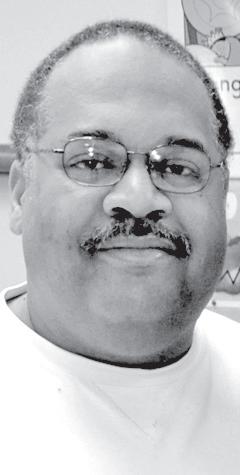
Earl Austin Jr.
Maker taking the biggest step and Williams looking at the idea, it will be interesting to see if a group of highly touted prospects decide to make the jump together. Now, that would be something. There was a time when some of the best players in the National Basketball Association were products for HBCU programs. I grew up watching many of these great players who enjoyed All-Pro and Hall of Fame careers.
In the spirit of my St. Louis American “Fab Five” All-Star Basketball Teams that we publish at the end of the season, here is my all-time HBCU Fab Five Basketball Team.
Guard: Earl Monroe (Winston Salem State) –In 1967, “Earl the Pearl” or “Black Jesus” averaged 41.9 points a game in leading Winston-Salem State to the NCAA College Division national championship. He helped lead the Knicks to the NBA championship in 1973. He is a member of the Basketball Hall of Fame.
Guard: Sam Jones (North Carolina Central) – The 6’4” Jones was a collegiate AllAmerican at North Carolina Central. He played his entire NBA career with the Boston Celtics. He is also in the Basketball Hall of Fame.
Forward: Bobby Dandridge (Norfolk State) – He was instrumental in the Bucks world title in 1971 and the Bullets’ championship in 1978, which is the only championship in the history of both franchises.
Forward: Ben Wallace (Virginia Union) – Wallace enjoyed a stellar career as one of the NBA’s best ever defensive players. His best years were with the Detroit Pistons, where he helped them to a world title in 2004. He won the Defensive Player of the Year award a record four times.
Center: Willis Reed (Grambling State) – He led the Knicks to world championships in 1970 and 1973 and was the MVP of both Finals series. He is a Hall of Famer who was selected as one of the top 50 players in the history of the NBA.
tor. “I want to align myself and provide them with the resources that they need to do that in a way that is productive, meaning it’s moving the narrative conversation and community forward.”
Thanks to funding from American Portfolios, a privately held independent broker/ dealer that provides business solutions and support to financial advisors throughout America headquartered in Holbrook, New York, L.I.F.E. Arts, Inc. can once again offer a place for artistic expression amid a movement for change.
“We want to see the evolution of this ecosystem with some of the great partners that we have – like Maryville University, T-Rex, M1 Bank and American Portfolios – and really begin to expand that out so that we have an umbrella in the north county corridor,” Owens said. “Where all of those folks can come with no agenda other than to support and develop the now and next generation of leaders, artists and creators that will begin to tell the story of St. Louis in a way that can hopefully transform the nation.”
The partnership with American Portfolios and L.I.F.E. Arts Inc. began through an unlikely connection – a Facebook post.
Owens made a status update about his autistic 6-year-old son crawling over to the piano and climbing up toward the keys. A random person then reached out to him that just so happened to be Dolber.
“That turned into him figuring out I sing and that I’m an artist and he plays in a Motown band, and that’s how our relationship started,” Owens said. Through the bond Dolber and Owens built through social media came the opportunity to cultivate the creative talents of young people.
L.I.F.E. Arts, Inc. is a part of L.I.F.E Creative Group, dedicated to providing youth


with a platform where they can fully express and develop their creative voices. L.I.F.E. Arts’ mission is to foster youth and creative entrepreneurs in Ferguson, Missouri, home to the L.I.F.E. Arts headquarters. The “AP for LIFE” Creative Residency programming will involve resident-student collaborations with members of The Butterfly Effect Project (Riverhead, New York), Gateway Music Outreach (St. Louis) and Girl Conductor (St. Louis). Together, through AP’s CSR platform, the firm and L.I.F.E. Arts engage young creatives and entrepreneurs as they develop new media and content designed to bring hope and healing across generations.
Funding for the “AP for LIFE” Creative Residency establishes five residencies for promising talent within the Ferguson community, including mentors and entrepreneurs: artist and singer-songwriter Malena Smith, director and speaker Timothy Moore, artist and producer Joshua “Paco” Lee, videographer and editor Mike Bland, and artist and creative Cecil McLendon. Each of the residents receive a yearly stipend and a small investment account, which is managed personally by a dedicated AP-affiliated financial advisor who serves as their mentor with the aim to estab-

lish their financial legacy. “Our hope is that by being good corporate citizens, we help to make the world a better place for everyone,” Dolber said.
“The goal of our work with LIFE Arts is to assist young entrepreneurs so that through good stewardship they, in turn, will foster talent within their communities and serve as role models for generations to come.”
The collaborations are designed to generate creative experiences for middle and high school students in both Ferguson and throughout Long Island, New York. Each of the residents will present their projects and experiences at the AP’s annual national conference, Connections 2020, to be held in October.
Owens, Dolber, LIFE Arts
Associate Director Darius Williams, and several nationally recognized artists, entrepreneurs and business leaders serve as mentors.
“It’s about the training, it’s about the mentorship,” Owens said. “But it’s also about the economic development and realizing what we can do when we tell our own narrative stories and how we can industrialize that and put funds back into our community.”
For more information, visit https://www.lifeartsinc.org.


By Dr. Frances Levine For The St. Louis American
As part of our long tradition of working actively toward racial equity and our commitment to improving the ways we tell history, the Missouri Historical Society’s African American History Initiative is introducing a new series, “How Did We Get Here? Conversations about Race, Anti-Blackness, and Identity.”
“This new AAHI series will help Black, white, people of color, and Indigenous populations gain a greater understanding of race relations in this region and how race and anti-Blackness keep the region divided,” says Shakia Gullette, director of African American History Initiatives at MHS.
“Building upon the work of local historians and national thought leaders, the series allows us to root the conversations in fact and history.”
On July 21 at 6:30 p.m., join us for “The Local History of Policing,” a discussion about the history of policing in St. Louis, and the implementation of local control in St. Louis in the last decade. We will hear from individuals who have served in St. Louis law enforcement as well as legal experts, with the goal of gaining a deeper understanding of the ways in which racism and oppression in our community’s policing have led us to the events that have unfolded in the last few weeks, months, and years.
cator Michelle Duster will discuss how Wells— her paternal great-grandmother—pioneered street journalism as a commitment to truth and justice. Recognizing the power of youth working for change today and to create a more equitable future, we are also hosting a series of youth activism workshops. On July 22 from 12 to 1:30 p.m., middle schoolers and high schoolers can explore and analyze primary sources in order to better understand the history of the civil rights movement. By using their own experience and analyzing historical examples of justice and injustice, young people will learn to interpret concepts of societal justice. At the end of the workshop, a special Zoom link will be provided for youth who wish to join an open dialogue where they can talk honestly and openly with each other about their thoughts around race and activism. This will be a meeting-based format, and participants can use their sound and camera to actively engage in discussion.
Youth ages 6 to 12 will have the opportunity to join a similar workshop on August 12 from 12 to 1:30 p.m. In this virtual meeting, children will explore the broader context of the civil rights movement through primary sources, evaluating how activists communicate their messages through images and words, identifying and explaining issues they care about, and creating a poster that advocates for their views. Afterward, their caregivers can join a separate Zoom link for a facilitated conversation about processing and talking about current events and issues around race with our children.
On July 21 at 6:30 p.m., join us for “The Local History of Policing,” a discussion about the history of policing in St. Louis, and the implementation of local control in St. Louis
On July 28, we will discuss the history of historically Black neighborhoods in St. Louis. “It’s Bigger than Target: The Destruction of Black Neighborhoods” will explore how white flight and fear continue to contribute to racism. This Zoom program begins at 6:30 p.m. Information included in the mainstream media has historically been told through an overwhelmingly white and male lens, but many women have taken initiative to report their own experiences. During the late 19th and early 20th centuries, Ida B. Wells wrote powerfully to counter false narratives. She chronicled the of horror of lynchings and the basis of riots during her time. On August 4 at 6:30pm, writer, speaker, and edu-
Join us outside the Museum for Just Breathe STL, a fiveweek intergenerational summer wellness experience for the entire family, presented in collaboration with The Collective STL. Families will learn decompression and anxiety relief tools through a variety of outdoor activities including yoga, journaling, mindful art, live music, healthy food and drink samples, walking meditation, sound bath meditation, and hiking. A kids’ corner will offer yoga, arm painting, dancing, and arts and crafts. This series is in compliance with all St. Louis Department of Health COVID-19 safety standards, and guests ages 9 and older will be required to wear masks. Just Breathe STL will take place on July 15, July 29, August 5, and August 12 from 6 to 8 p.m. on the Museum’s North Lawn.
I hope you will be able to join us for this series that promises thought-provoking conversation, lasting connections, and meaningful action. Dr. Frances Levine is president of Missouri Historical Society.
Continued from B1
The collaboration features a staple black colorway with a blue accent, along with a techni-colored shoe inspired by Mvstermind’s childhood prayer rug.
“From the gum bottom
sole, the athletic strap, to the stitching on the outside of the shoe, these fresh pair of kicks embody elements that have all made me who I am today,” Mvstermind said about his shoe line.
Him using the career-defining opportunity of designing a tennis shoe as a chance to promote his faith is true to form.
“In this industry you always hear about artists having to sell their soul. I really strive to keep a balance,” Mvstermind said. “I want to maintain my spiritual health, but also acquire wealth – and use it to inspire some change throughout the world.”
For more information on the artist, visit http://www. mvstermind.com/.



Big Brothers Big Sisters of Southwestern Illinois is seeking a full time Program Manager and is offering a flexible work environment, PTO and health benefits. We are looking for a candidate with a BA in social work, psychology or relevant degree; 5-7 years of successful nonprofit management experience and; prior work serving youth. Interested candidates should send a cover letter and resume to admin@bbbsil.org. A full job description and details can be found at www.bbbsil.org.
No phone calls please.
Incarnate Word Academy is a collegepreparatory high school that strives to challenge young women of faith to achieve their God-given potential academically, physically, spiritually and emotionally, thereby empowering themselves and others to make a positive impact on our world. The school is a sponsored ministry of the Sisters of Charity of the Incarnate Word. Incarnate Word Academy is seeking applicants for the following position for the 2020-21 school year: Director of Equity and Inclusion A full time Director of Equity and Inclusion will oversee a Black student mentoring program, moderate the student Diversity Club, develop objectives for the strategic plan, assist with student and faculty/staff recruitment, and implement and monitor future DEI strategies.
Qualifications:
• Previous relationship management experience.
• Bachelor’s degree from an accredited institution of higher education is required; a master’s degree is preferred. Qualified candidates should send resumes to Dr. Randy Mikolas, president, at rmikolas@iwacademy.org. Digital submissions only.
Applications accepted until July 25, 2020.
Manchester, MO
8am-3:30pm M-F (35hrs.)
$13.55/hr. Full Benefits
H.S. Diploma or Equiv + 2yrs Professional admin exp. Must be highly proficient in M.S. Excel, Word & Outlook. Exp with Multi-Line phones, fax & copiers
Preferred. Local travel
Required for occasional Office errands. Must have Valid D.L & State min req Auto insurance. Pre Emp B/C & Drug Test. Send Resumes to Laura Reich at Lreich@agingahead.org call 636-207-4231
Manchester, MO
8am-4:30 M-F (40hrs)
$20.03/hr. Exempt. Full Benefits. Bachelor’s in Business or related field + 3yrs exp. or H.S. Diploma or Equiv + 7yrs Exp. Exp with Board of Directors preferred. Supports CEO. Coord Board Meetings & manage all official minutes. Supervises Receptionist. Must be highly proficient in M.S. Excel, Word & Outlook. Pre Emp B/C & Drug Test. Send Resumes to Laura Reich at Lreich@agingahead.org call 636-207-4231
The St. Louis County Library is seeking qualified applicants to fill the Chief Financial Officer position. This position manages the financial and human resources operations of the Library. Responsible for managing the general accounting functions, assisting in preparing the annual budget, manages pension plan operations, coordinates independent audits, assists with special projects to provide accurate financial data, and manages Library Foundation financial operations. A Bachelor’s Degree in Business or Accounting required. A CPA is preferred. Experience in government accounting preferred. Requires good interpersonal skills and excellent organization and communication skills. Salary commensurate with experience. Apply online at https://www.slcl.org/content/ employment Equal Opportunity Employer.
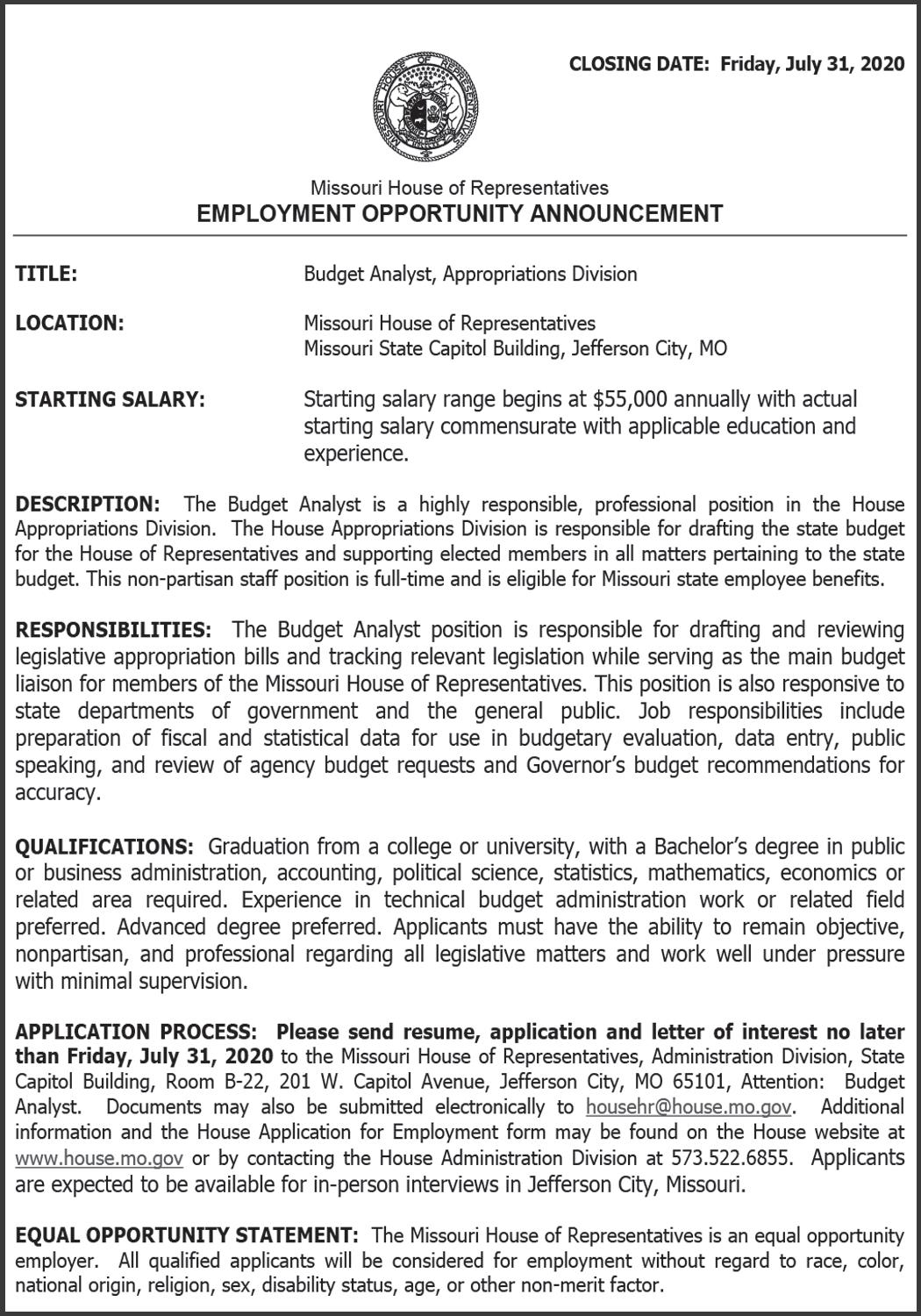
HAIR BRAIDERS, NAIL TECHS, COSMETOLOGIST, ESTHETICIANS, MASSAGE THERAPISTS SISTERLOCK SPECIALIST EMPLOYMENT OPPORTUNITIES
Locs of Glory is an independently owned salon and spa located in the Delmar Loop. Our employment opportunities include:Nail Techs, Cosmetologists, Estheticians, Massage Therapists, Hair Braiders, and Sisterlock Specialists. No booth Rentals fees!!! Call Tameka at 314-265-5790
Youth In Need is looking for a highly motivat- ed grant writer with 2-3 years’ experience writing successfully funded proposals. If you’d like to learn more about joining our Youth In Need family, check out our website at youthinneed.org
CLEAN-TECH COMPANY IS INTERVIEWING FOR VARIOUS LOCATIONS!
Every Thursday 1PM-5PM! #211 South Jefferson Avenue, St. Louis, MO 63103
JOBS AVAILABLE! WE ARE HIRING! Apply online www.cleantechcompany.com/ careers
MISSOURI HISTORICAL SOCIETY JOB OPENING
The Missouri Historical Society actively seeks a Director of Facilities. Visit https://mohistory.aaimtrack.com/ jobs/459970.html for position details and to apply. An Equal Opportunity Employer

The City of Jennings is accepting applications for the position of Permit Clerk in the Building Department.
Hord Ave. or at www.cityofjennings.org. NO RESUMES ACCEPTED WITHOUT COMPLETION OF OUR APPLICATION! Completed applications may be mailed, emailed to jobs@cityofjennings.org, or faxed to 314-388-3999. Applications
For more information and to apply, visit https://www.desmet.org/about/
Responsibility for the collection, preparation, documentation and communication of IS requirements, both business and technical. Demonstrates clear and working knowledge and concepts of Business Analysis and Information Technology. Capable of working independently, but may be assigned to work under the guidance of a Senior Business Systems Analyst when engaged in larger, more complex projects. To apply, please visit: https://www. safetynational.com/careers-page/

Side Choice Neighborhood Plan and a Senior Staff Accountant position in our Central Office. To view the full job descriptions visit, https://bit.ly/3bmm1li
Notice is hereby given that The Metropolitan St. Louis Sewer District (District) will receive sealed bids for Drury - Switzer Storm Sewer under Letting No. 11418-015.1, at this office, 2350 Market Street, St. Louis, Missouri 63103, until 02:00 PM on Thursday, August 13, 2020, at a place designated. Bids
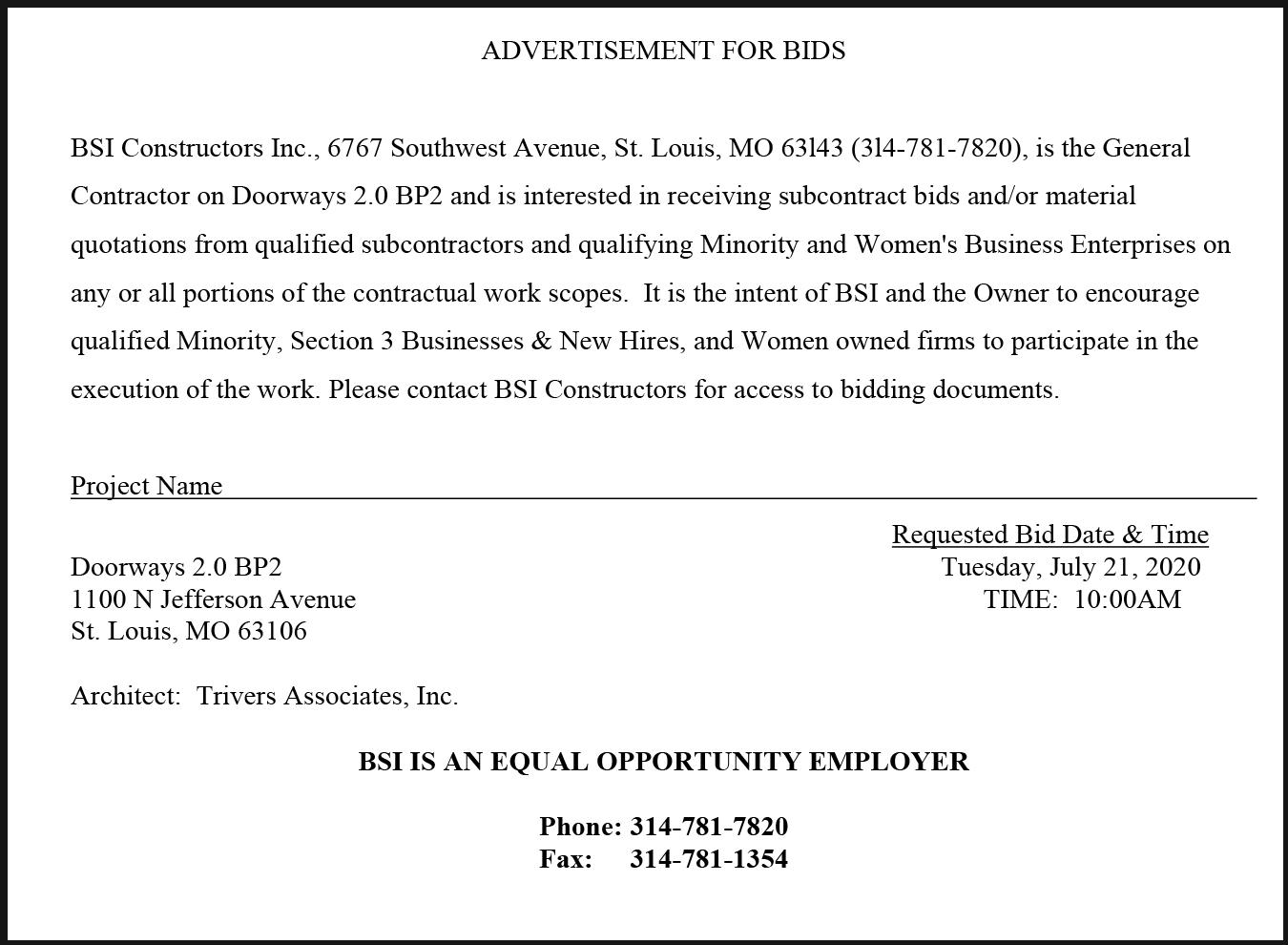
Sealed Proposals for B20-1191 Greenhouses will be received at Lincoln University Purchasing Dept 1002 Chestnut St, RM 101 Shipping & Receiving Bldg, JCMO 65101 until 2PM CT on 20July2020. Download Proposal Request at http:// www.lincolnu.edu/web/ purchasing/bids
Public Notice of Single Source Procurement
Notice is hereby given that the Metropolitan St. Louis Sewer District is proposing to procure: CUSTOMIZED ELECTRONIC TRAINING AND O&M LEARNING MODULES. 360WATER INC was used for this service. Any inquiries should be sent to gjamison@stlmsd.com.
Metropolitan St. Louis Sewer District is an Equal Opportunity Employer.
Notice is hereby given that the Metropolitan St. Louis Sewer District is proposing to procure: Flygt NP-3356 submersible pump. The District is proposing single source procurement to Vandevanter Engineering Co. for thisequipment because they are exclusive representative for this area. Any inquiries should be sent to ltreat@stlmsd.com.
Metropolitan St. Louis Sewer District is an Equal Opportunity Employer.
Responses for St. Louis Community College on B0003914 for Trustee Services will be received until 3:00 P.M. (local time) on Thursday, august 13, 2020 at the Dept. of Purchasing, 3221 McKelvey Road; Bridgeton, MO 63044, and immediately thereafter opened and read. Bid documents can be accessed on our website at www.stlcc.edu/purchasing
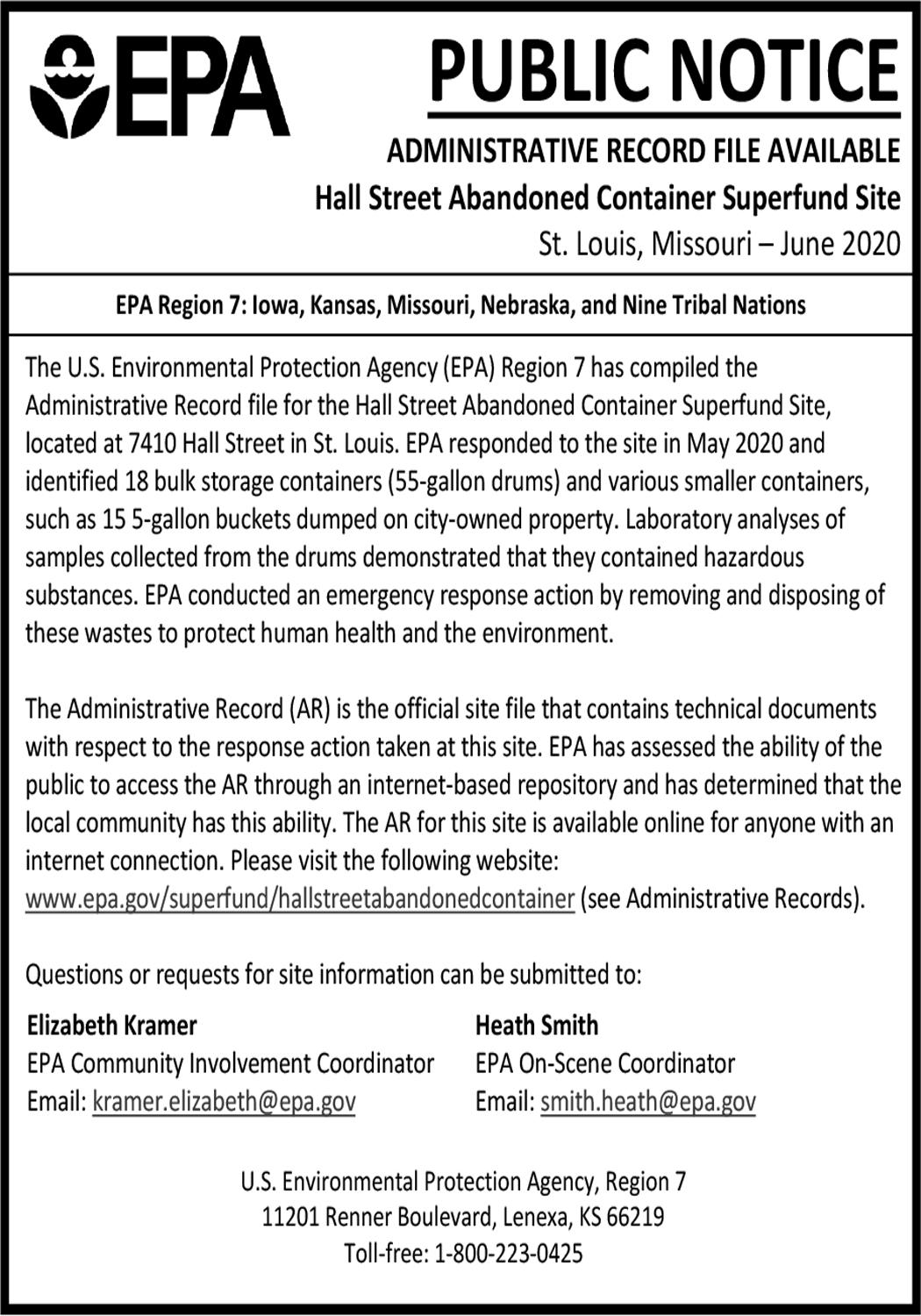
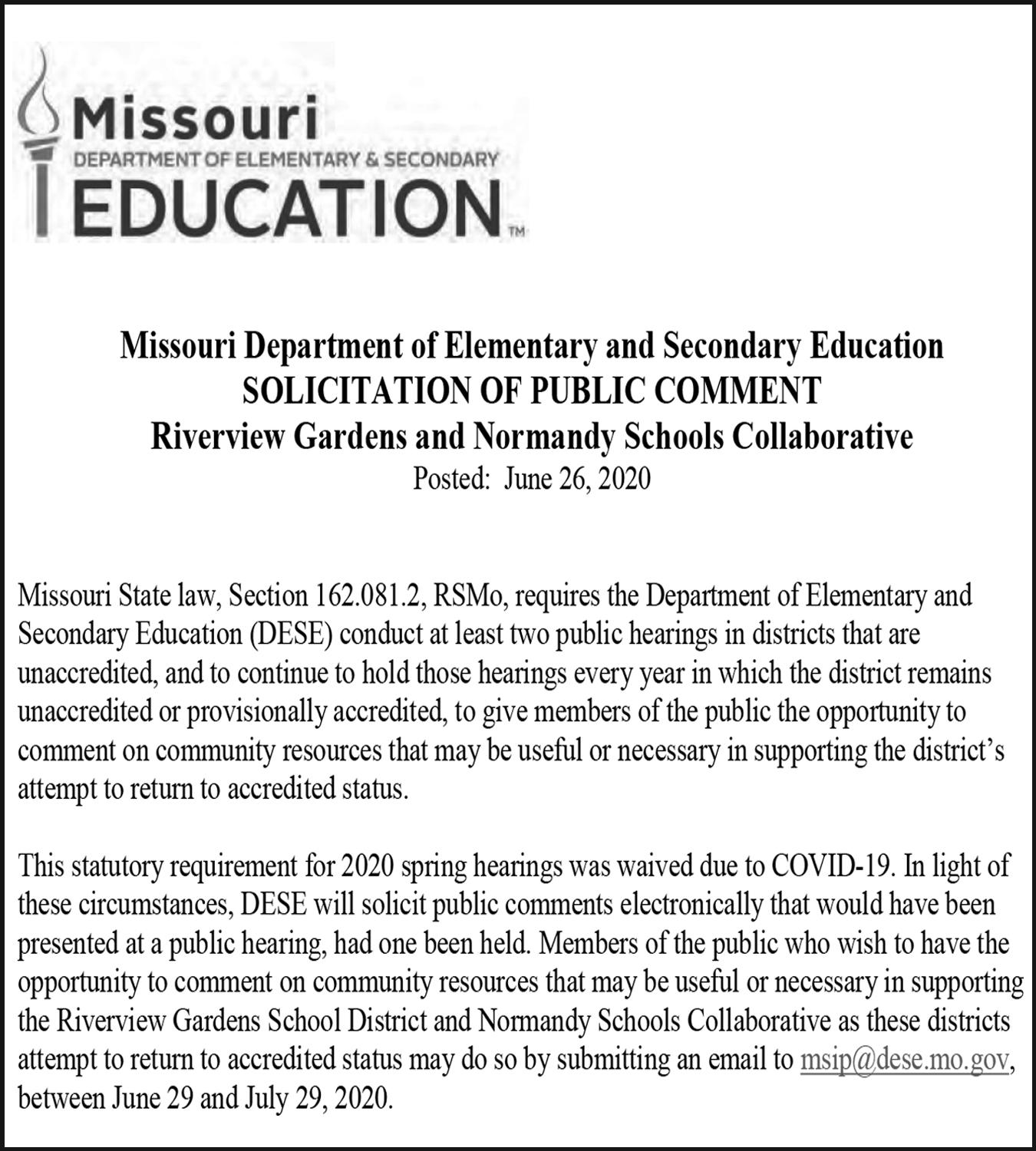
SEWER
Notice is hereby given that the Metropolitan St. Louis Sewer District Requests for Quotes, Bids and Proposals are posted online for public download. Please navigate to www.msdprojectclear.org > Doing Business With Us > View Non-Capital Bids (commodities and services) or >Visit Planroom (capital construction bids) Metropolitan St. Louis Sewer District is an Equal Opportunity Employer.
The St. Louis County Port Authority requests proposals from qualified buyers/developers to purchase and redevelop an approximately 140-acre property located at the former Jamestown Mall site in unincorporated North St. Louis County, Missouri. A copy of the complete RFP is available at https://stlpartnership.com/ rfp-rfq/. Proposals will be accepted until the earlier of 3PM CST on Thursday, September 17, 2020, or such time as the Port announces it has accepted a proposal.
that the Metropolitan St. Louis Sewer District is accepting proposals in the Purchasing Division, 2350 Market Street, St. Louis, Missouri 63103-2555 until 11:00 a.m. on August 10th, 2020 to contract with a company for: PVC Piping & Fittings (SDR35). Specifications and bid forms may be obtained from www.msdprojectclear.org, click on the “DOING BUSINESS WITH US” link, (View Non-Capital Bids (Goods & Services). The bid document will be identified as 10434 RFQ. If you do not have access to the internet, call 314.768.6254 to request a copy of this bid. Metropolitan St. Louis Sewer District is an Equal Opportunity Employer.
Public Notice of Single Source Procurement
Notice is hereby given that the Metropolitan St. Louis Sewer District is proposing to procure: UTILITY MEMBERSHIP-STORMWATER 01-AUG 2020 to 31-JUL-2021. WATER RESEARCH FOUNDATION was used for this membership. Any inquiries should be sent to gjamison@stlmsd.com.
Metropolitan St. Louis Sewer District is an Equal Opportunity Employer.
VIRTUAL PUBLIC HEARING NOTICE DRAFT SUBSTANTIAL AMENDMENT AVAILABLE FOR REVIEW AND COMMENT
The City of St. Louis is soliciting comments on a Draft Substantial Amendment to its 2015–2019 Consolidated Plan/2019 Annual Action Plan. The Substantial Amendment proposes the reprogramming of Community Development Block Grant (CDBG) funds allocated and unspent in previous funding years.
Public Hearing Notice/Public Comment Period
The Community Development Administration (CDA) will conduct a virtual public hearing on Friday, July 24, 2020 at 1:30 p.m. The purpose of this hearing is to solicit public comments and answer questions pertaining to the Substantial Amendment and Citizen Participation Plan.
Documents Available for Review
The Substantial Amendment to the 2015-2019 Consolidated Plan and 2019 Annual Action Plan will be available in draft form for review by any interested citizen on July 8, 2020 at the Central Branch of the St. Louis Public Library located at 1301 Olive Street. The Amendment will also be available for review at CDA, located at 1520 Market Street, Suite 2000. Copies of the report may be downloaded from the City of St. Louis website at https://www. stlouis-mo.gov/government/departments/community-development/ documents/index.cfm Written comments will be accepted until 5:00pm on August 10, 2020.
Written Comments
The views of citizens, public agencies, and other interested parties are strongly encouraged. Written comments or suggestions may be addressed to Mr. Matt Moak, Executive Director, Community Development Administration, 1520 Market, Suite 2000, St. Louis, MO 63103, or via e-mail at MoakM@stlouis-mo.gov .
Meeting Information
Citizens are invited to attend the virtual hearing via Zoom or by calling in.
When: Jul 24, 2020 01:30 PM Central Time
Topic: 2019 CDA Draft Substantial Amendment
To join the Zoom Meeting, go to: https://us02web.zoom.us/j/87841834148
Bids for Rebuild K i t c h e n & Stabilize Structure Tavern, Arrow Rock State Historic Site Arrow Rock, MO, Project No. X2001-01 will be received by F M D C , S t a t e of MO, UNTIL 1:30 PM, August 6, 2020 v i a MissouriBUYS. Bidders must be registered to bid. For specific project information and ordering plans, go to: http://oa.mo. gov/facilities
One tap mobile US 13126266799,,87841834148# US (Chicago) or +16465588656,,87841834148# US (New York)
Or Telephone:
Dial (for higher quality, dial a number based on your current location): US+1 312 626 6799 or +1 646 558 8656 or +1 301
or +1
or +1 669 900 9128 +1 253 215 8782
Meeting ID: 878 4183 4148
Find your local number: https://us02web.zoom.us/u/keCLC7t0Hv
Other Information
Persons with special needs or accommodations relating to handicapped accessibility or foreign language should contact Mr. Moak via email at MoakM@stlouis-mo.gov or by phone at (314) 657-3835 or (314) 589-6000 (TDD). Interpreting services are available upon request for persons with hearing disabilities. Interested parties should contact the Office on the Disabled at (314) 622-3686/voice or (314) 622-3693/TTY.
CDA is an equal opportunity agency (employer). Minority participation is encouraged.
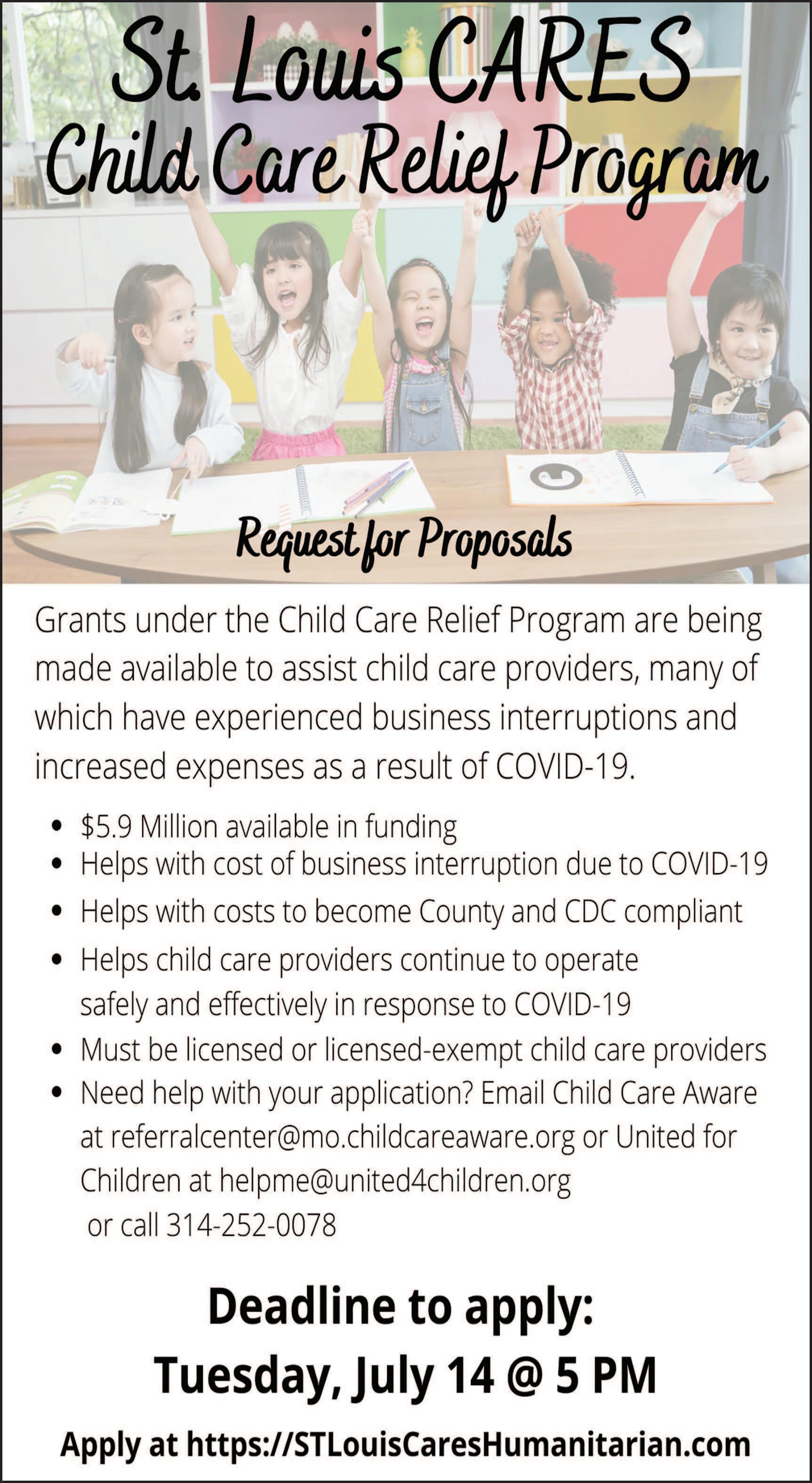
MWBE PreBid Meeting Notice
The SITE Improvement Association is hosting a Prebid meeting for Qualified and Certified MWBE contractors to discuss working on MSD’s Reynosa-Melitta Streambank Stabilization Unincorporated Contract Letting No. 11623-015.1
This meeting is being held on behalf of the following SITE contractor member: Two Alpha Contracting 110 Sierra Ridge Dr., Wright City, MO 63390 636/384-1296
The meeting will take place at 10:00 a.m. July 9, 2020
SITE Improvement Association Office, 2071 Exchange Drive St. Charles, MO 63303
Project plans are available from MSD. For questions regarding this prebid meeting, Contact the SITE Improvement Association office at 314/966-2950.

Notice is hereby given that The Metropolitan St. Louis Sewer District (District) will receive sealed bids for Meramec Bluffs Dr. Sanitary Manhole Replacements (IR) under Letting No. 13321-015.1, at this office, 2350 Market Street, St. Louis, Missouri 63103, until 02:00 PM on Thursday, August 06, 2020, at a place
The St. Louis Housing Authority (SLHA) is submitting to HUD the Annual Submission of the FY 2020 Agency Plan and Five-year Plan. The Plans outlines the goals and objectives to accomplish its vision over the next five years. SLHA has posted the “Draft” FY 2020 Agency Plan for public review on its website at www.slha.org
Additionally, the Admissions and Continued Occupancy Policy (ACOP), a component of the Agency Plan, and a revised Utility Allowance Schedule and the Flat Rent Schedule are simultaneously being made available for public review and comment. The link to the webpage is: http://www.slha.org/for-residents/public-housing/ policies-procedures/
Also, the Capital Fund Program Five-Year Action Plan (FY2020 - FY2024) is simultaneously being made available for public review and comment.
SLHA will hold a Virtual Public Hearing on Wednesday, August 26, 2019, at 3:00 p.m. to accept comments on its Agency Plan, Five-year Plan, ACOP, Utility Allowance and Flat Rent Schedules and Capital Fund Program. Due to the Covid-19 pandemic, this year’s public hearing will not be held in person. Instructions to join the virtual public hearing are posted on the website. Comments and suggestions received will become part of the public record. Additionally, written comments may be submitted on the plan. All written comments must be received by August 26, 2020. Please address comments to Fran Bruce at fbruce@slha.org.
For additional information or questions, contact Fran Bruce, Planning and Procurement Manager, by email at fbruce@slha.org or by telephone at (314) 286-4365 between the hours of 8:00 a.m. and 4:00 p.m. Monday through Friday.


Advertised herein is subject to the Federal Fair Housing Act, which makes it illegal to advertise any preference, imitation, or discrimination because of race, color, religion, sex, handicap, familial\status, or national origin, or intention to make any such preference, limitation, or discrimination.“We will not knowingly accept any advertising for real estate which is in violation of the law. All persons are hereby informed that all dwellings advertised are available on an equal opportunity basis.”


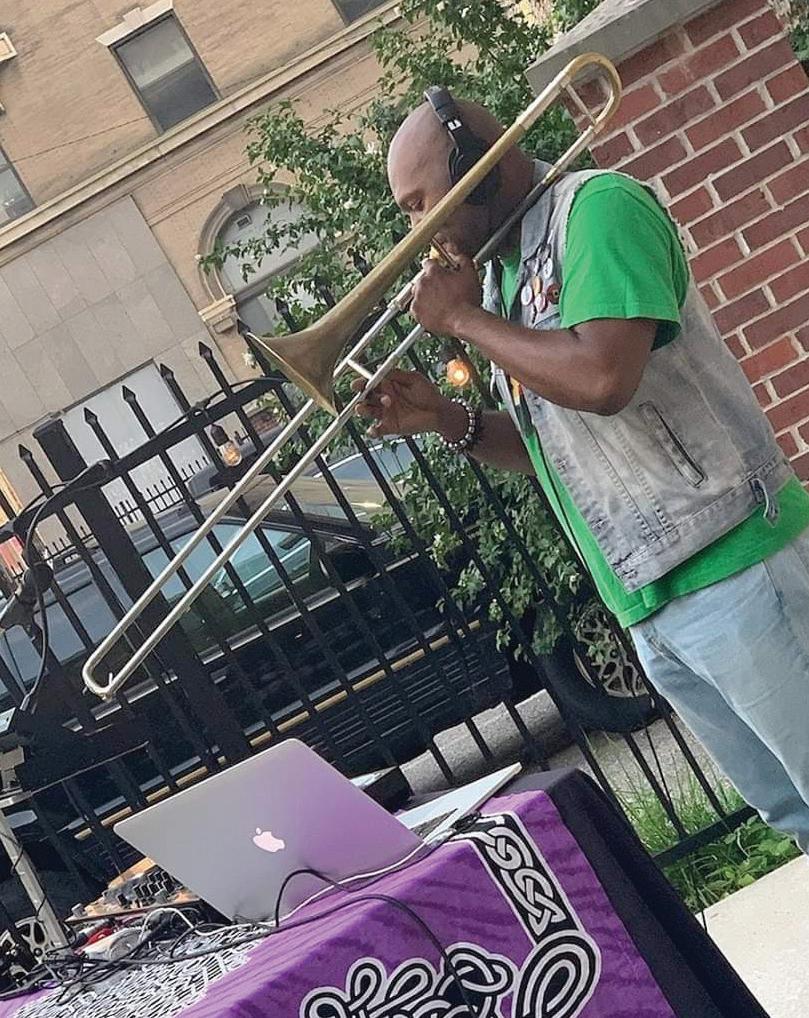

Harris was
it on
and the tables as House of Soul celebrated the holiday weekend with a special

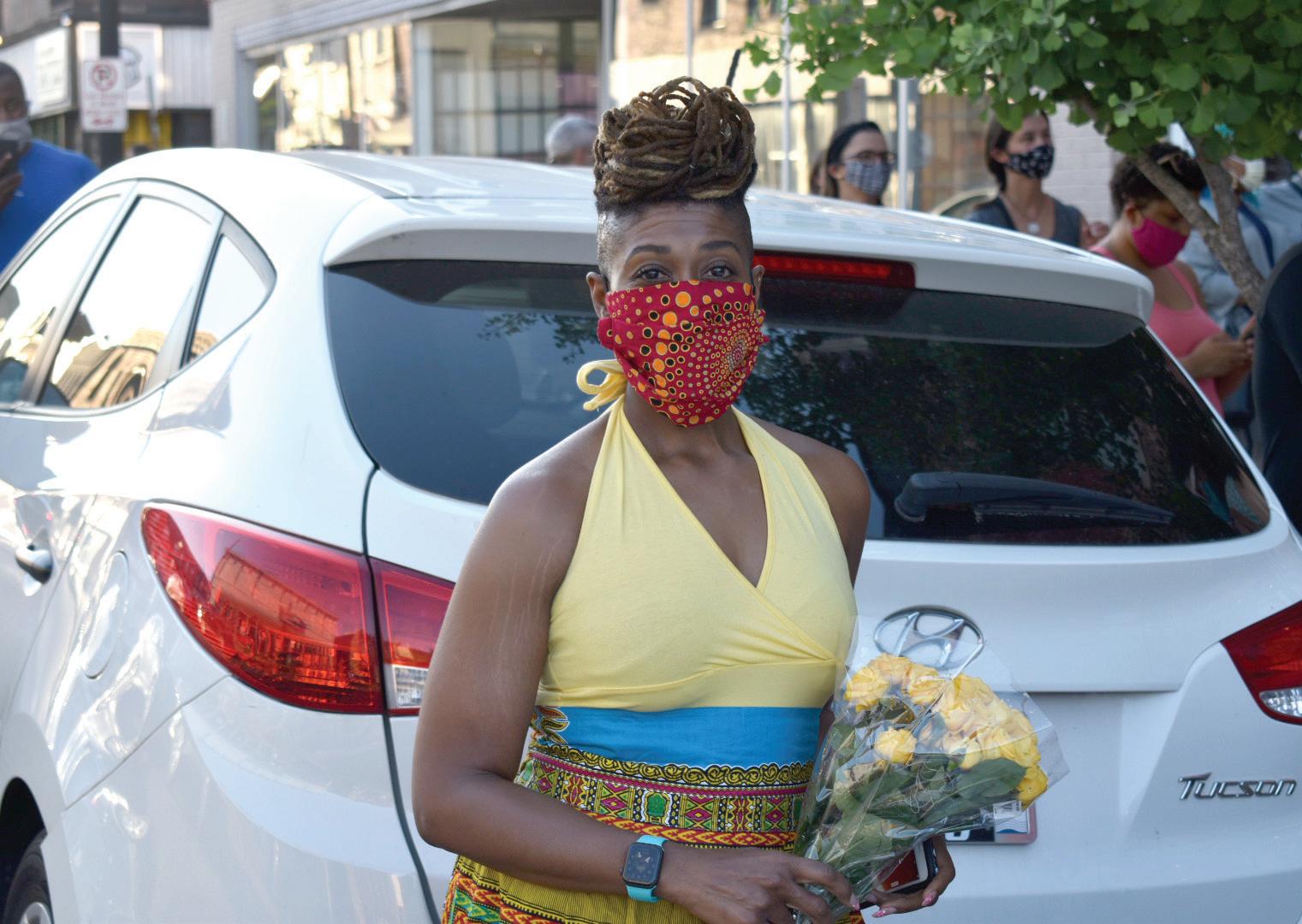
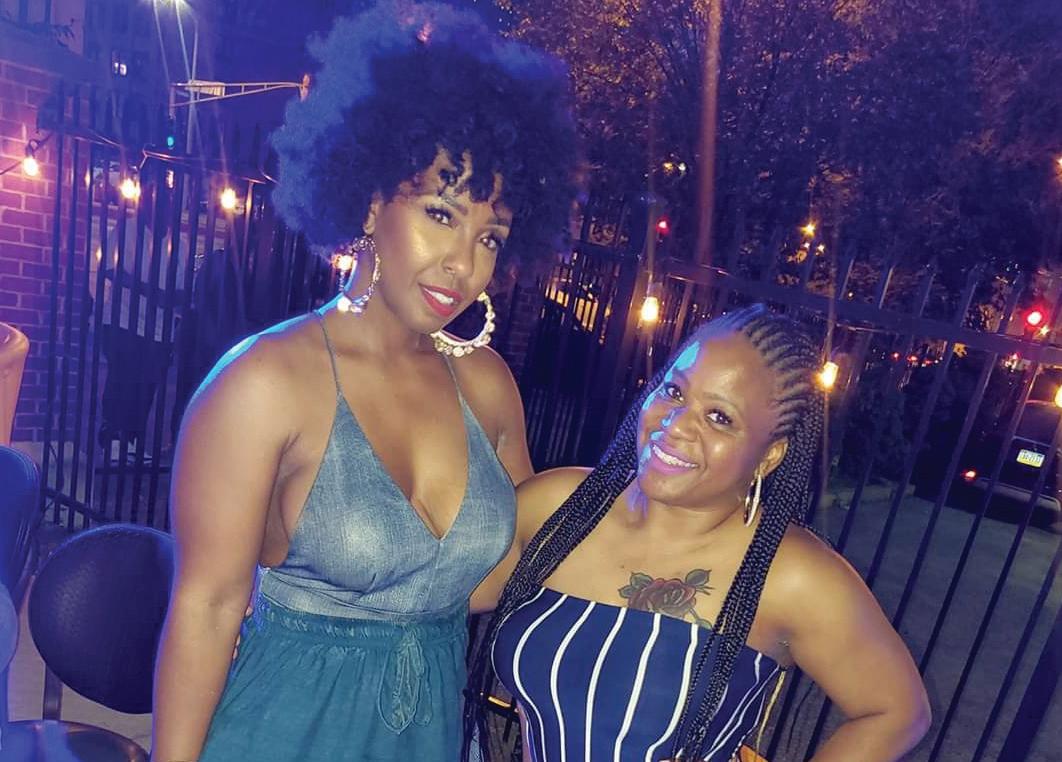
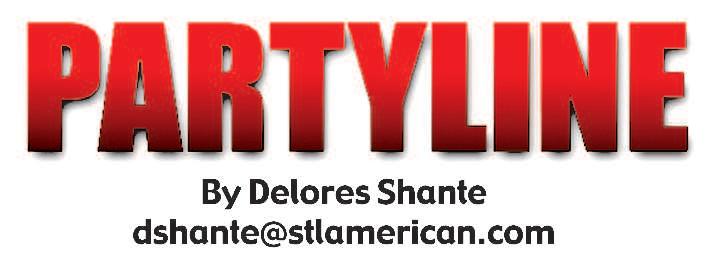
A slight return to your regularly scheduled programming. Hammercy! Because of these ______(insert challenging, difficult, unprecedented, unparalleled or any other alternative you want to use in place of “The Rona”) times, I’ve been away from y’all so long that I don’t know where to start. I’m inclined to steal from that flamboyantly fabulous ray of social media sunshine Leslie Jordan and hit y’all with a safe for Partyline version of his now famous greeting, “Well, what are y’all doin’?” Things ain’t nowhere near normal, and while I’ve been dipping my toe out in these streets – I’ve been taking social distancing so seriously that I’m sure somebody thought I was stalking or moonlighting as a private investigator as I’ve peeped the scene with the utmost caution. If anybody saw a bush shaking or heard it rattling and wondered if it was a possum or a ‘coon grooving to the live music on the patio of the House of Soul, it was probably me. I’m not playing any games with Miss Rona – and neither should y’all. With that in mind, I’m letting you know ahead of time that y’all are gonna get from me for the immediate future is going to be the few little sips I spend in these streets wrapped around the rest of my time spent in my Rona proof basement crypt over these past several weeks. Y’all ready? Let’s get it.
RIP Huey. Before I go any further, let me take a moment to honor the memory of our own Lawrence Franks Jr. We knew and loved him as his rap moniker Huey. And we also knew when the beat dropped on his signature jam that whatever party, club, event, backyard barbecue or church service that the dancefloor would be cracking on the strength of that song for the whole rest of the night. But beyond the music, Huey was such good people. He always had a smile on his face and made you feel better whenever you crossed his path. I really hate that his light was snuffed out by gun violence because I know he had so much to give – from good vibes as a human to good music. He was laid to rest on Monday and I’m sure his family and friends gave him the sendoff he deserved. He’ll forever have his place in St. Louis hip-hop history – and based on the love he was shown during the “In Memoriam” portion of the BET Awards, everyone affiliated with the culture knows what time it is as far as impact on the industry. Join me in sending prayers to his family, especially his daughter.
BET on POINT. I won’t be long or labor with a full roundup because it already feels like forever since it aired, but since I’ve already mentioned the show, can I ask why did it take the whole country to go on the quarantine and socially distant shut in list for us to get the awards we deserved?. Real talk, it was the best BET Awards I’ve seen in years. Part of me feels like Viacom devoted more coinage to the show’s budget and aired it on cousin station CBS because of the current climate. Either way, they were a win and was super creative with how they handled the social distancing challenges. I started off watching thinking that Tracee Ellis Ross’ opulent baby hair was going to be the best residual of the BET Awards, but it ended up being a treat from start to finish. It was so good that my elderly play uncle/longtime church member rang me up on my land line asking, “what buttons he needed to push to see Margaret Da Scallion again on the computer.” His words, not mine.
A grand closing with Cbabi. For my first foray into these streets since The Rona had me lowkey turn my house into a mausoleum for the living, I took a trip to the South Side so that I could see Cbabi Bayoc’s “What’s The 411?” exhibition at the Cherokee Street Gallery last month. I was over the moon because I thought it was going to be yet another thing I missed due to Miss Rona. It was a treat to see – I think his illustration of Houston rapper Tobe Nwigwe. It was a full on socially distant sidewalk party outside the gallery with music served up by The Red and Black Brass Band. They served up a second line that had everybody grooving. This inebriated gentlemen got caught up in the spirit of their rendition of “When The Saints Go Marching In” and almost caught these hands when he decided he was gonna invade my personal space and just make me cut a step on the edge of the sidewalk. He leaned in and I bent back like Keanu Reeves in “The Matrix,” honey! Despite that tiny hiccup, I still had as much as of a ball as I could, considering my pre-Rona personal space issues compounded by anxiety about folks who can’t seem to social distance once they get a sip in their system.
A warm welcome from The House of Soul. The only spot I’ve hit up since the pandemic that doesn’t start with www has been the House of Soul. I’ve made three trips between Juneteenth and Fourth of July and enjoyed reconnecting with people – even if it takes them a minute to get with how extreme I am with my space these days. I stopped through to catch a bunch of singers rotate in and out to perform with Mark Harris II and his band. It was life more abundantly. He is the absolute truth – especially as an arranger. I won’t name names, but his musical genius had me vibing to one or two singers that I wouldn’t have sacrificed any decibels otherwise. I also got life last weekend from Lamar Harris (no relation to Mark, at least I don’t think) It was so good to see folks – even if it was from afar. Especially House of Soul owner Nichol Stevenson, Jami Ballentine Dolby, hair stylist Tiffany J (who I call Tiffany Scissorhands because she’s so cold with her cut game) and a host of other folks. I don’t suspect folks will be seeing much of me – but if I’m lurking or peeking around corners anywhere, it will be at The House of Soul and an extremely exclusive list of others.
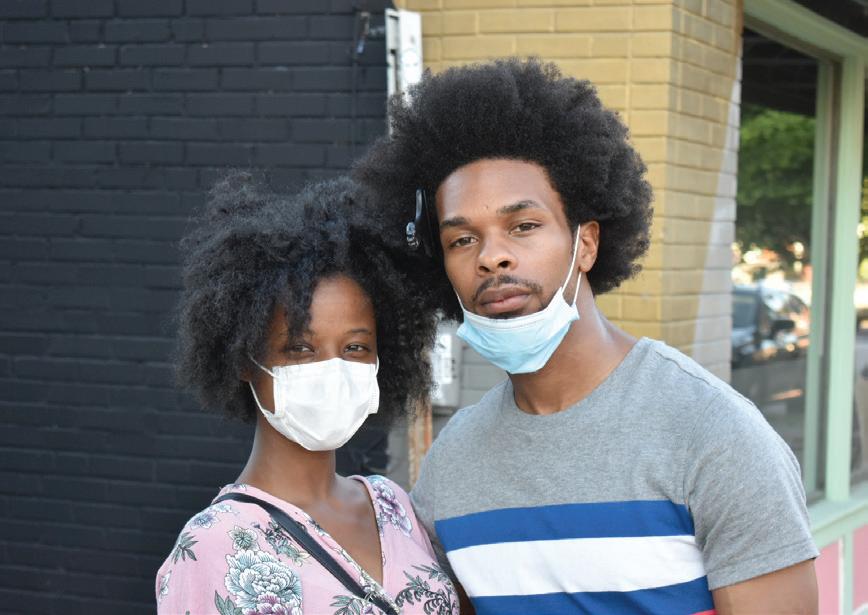

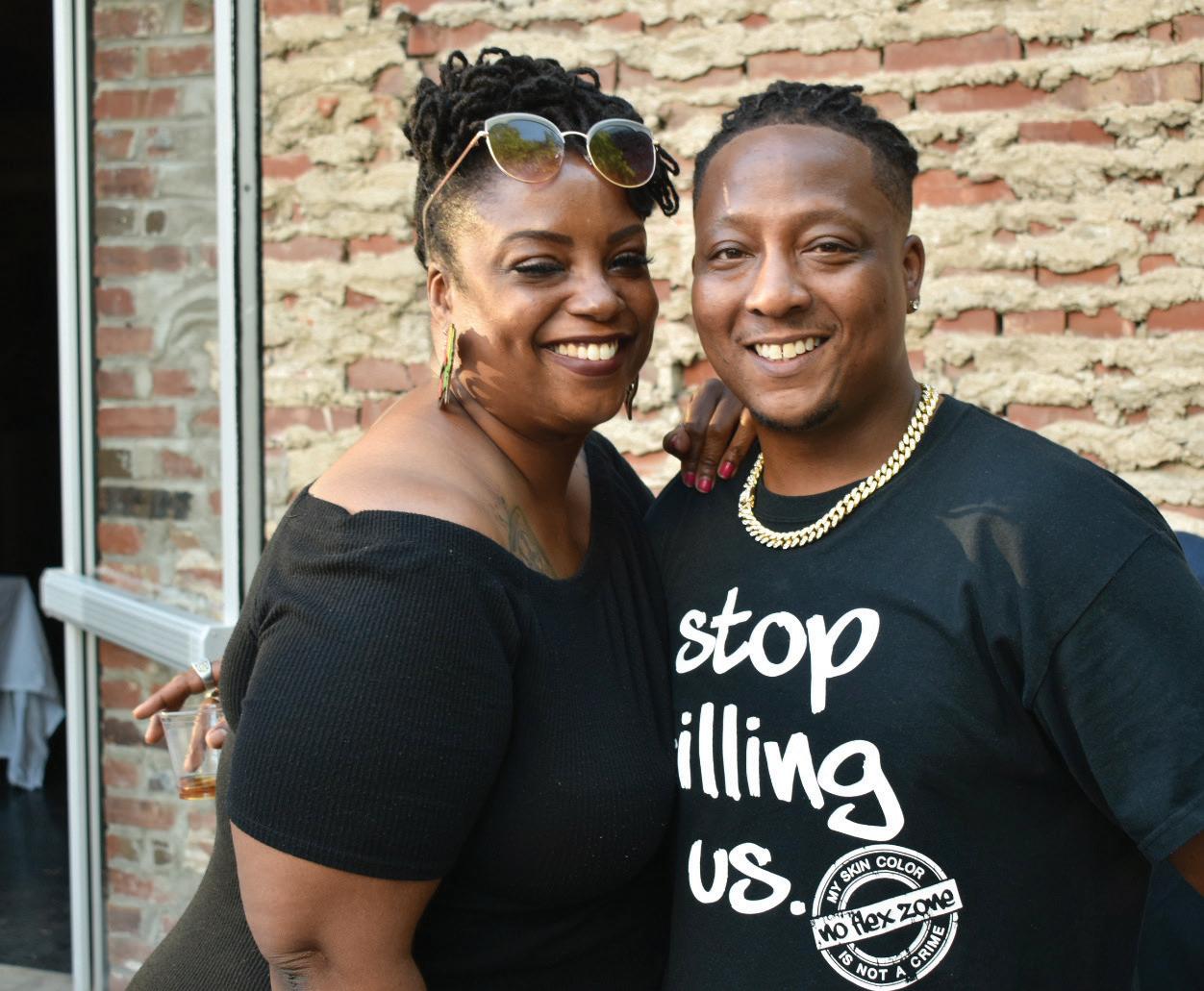

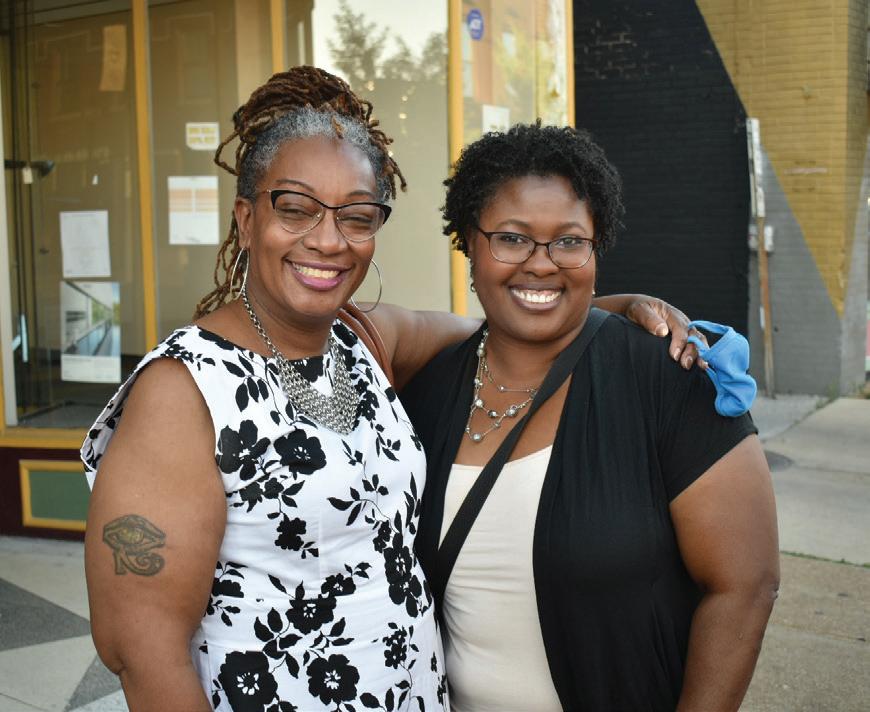

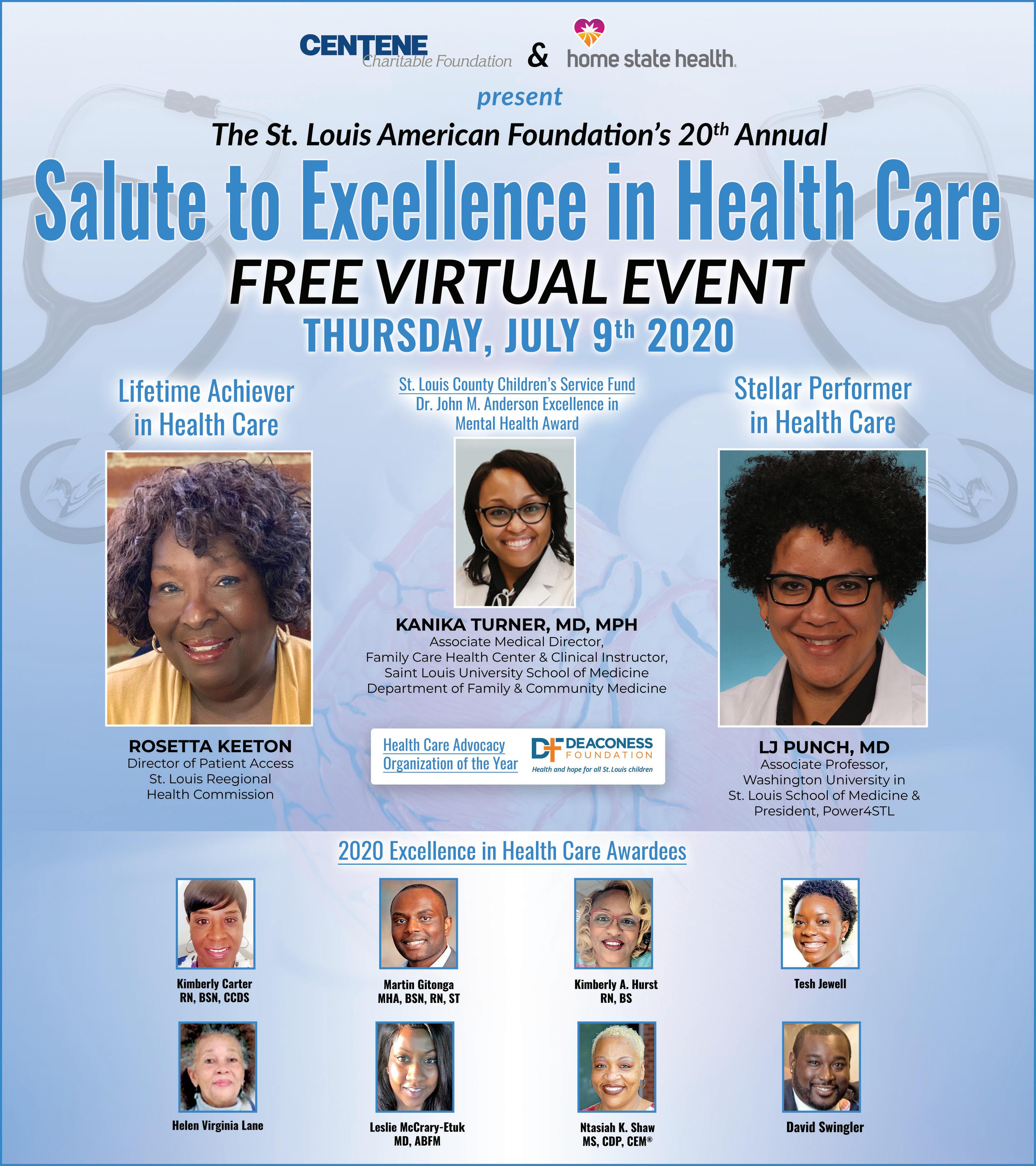
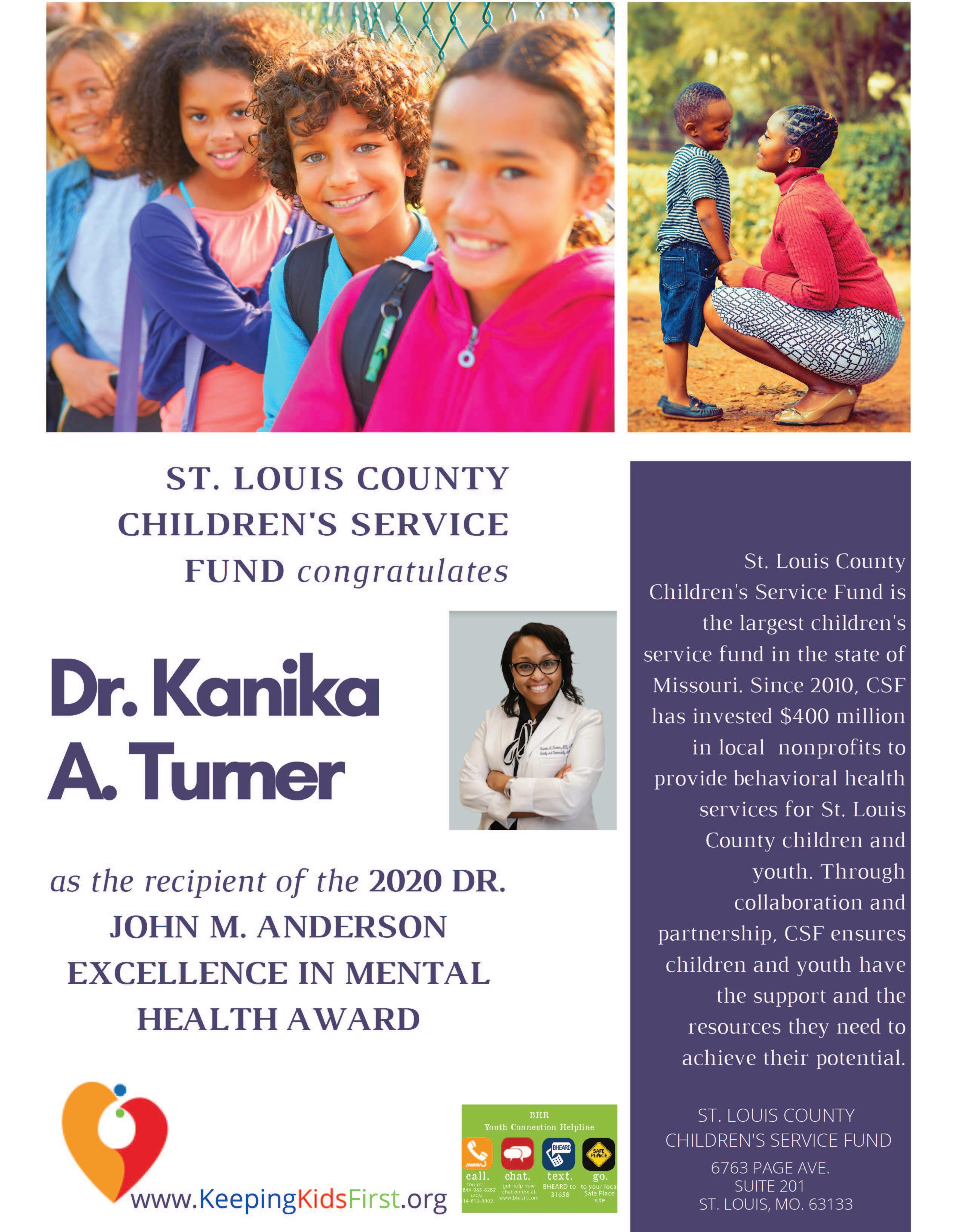
The St. Louis American Foundation shares the goal of all who seek to ensure adequate, affordable health care for all –underserved communities, in particular. As an integral part of its mission, the St. Louis American Foundation has hosted the Salute to Excellence in Health Care for 20 years that honors outstanding individual performance in health care for the African-American community in St. Louis.
Yet, this year is markedly different, like never before. First, is the COVID19 pandemic that recent federal data offers the most comprehensive view of how Black and Latino people have been likelier to contract the virus and die from it. We are also experiencing a Black Lives Matter movement that has been energized by a new generation of activists after the murder of George Floyd. These historic developments have not only underscored the devastating racial disparities in health care, but also serve as a reminder of the critical and essential role our health care workers serve—to our health and wellness, and indeed our very survival. So while this community event (this year a virtual one) is a longstanding tradition for
the Foundation, we believe this year’s celebration of our health care heroes and the work they do is more important than ever. This is a perfect example of why we seek to encourage more young people to pursue growing opportunities in the health care field.
A past detailed report released by the St. Louis Regional Health Commission
health care for the indigent and underserved. These tremendously committed and passionate health care leaders have demonstrated an unwavering devotion to the community and share the moral conviction that they cannot afford to stand idle while so many suffer from many preventable illnesses.
Our 2020 Salute to Excellence in
care and offer a compelling view on how a dysfunctional health care system can be reformed.
Since the inaugural Salute to Excellence in Health Care in 2001, we at the St. Louis American Foundation are proud to have honored more than 220 outstanding African-American health care providers at this annual event. We’ve celebrated the longstanding careers of lifetime achievers, while lauding and highlighting the current work being done by our Excellence in Health Care awardees.
highlighted the failure of our health care safety net to provide for the region’s medically underserved. In the midst of irrefutable data documenting the system’s operational inefficiencies, perennial underfunding and missed opportunities for collaboration of safety net organizations, the report also identified an oasis of community health organizations and devoted health care providers who are striving to dismantle the systemic and nearly insurmountable barriers to
Health Care awardees share these values. Their productive careers exemplify what’s right with health care in St. Louis. They understand that every patient should be treated with dignity and respect and deserves the highest quality of health care possible. Also common among them is a shared belief that community-based programs can have a profound impact on eliminating racial health disparities. They help inspire our youth to pursue careers in science and health
We’re also looking toward the future and the likelihood that there will continue to be a shortage of nurses into the next decade, in St. Louis and throughout the nation. We are extremely proud of a collaboration we started eight years ago with the Deaconess Foundation and the Scholarship Foundation of St. Louis, that provides $125,000 worth of scholarships, every year, for local nursing students. As future caregivers, their work is vital to our community, and we look forward to recognizing some of them as awardees at future Salute to Excellence in Health Care events.

What is your current health care position? What are your responsibilities in this position?
I work in Compliant Documentation Management Department as a Clinical Documentation specialist at SSM Health St. Mary’s Hospital. I perform concurrent review of the patient’s medical record to assure that the documentation is accurate, consistent and compliant. I assure that the documentation captures secondary diagnoses and Hospital Acquired Conditions to accurately reflect the patient’s severity of illness, risk of mortality, and to optimize the DRG (diagnosis-related group) and reimbursement.
How do you feel you are able to make a difference in this position?
I feel that I make a difference is this position because of my experience, commitment, flexibility and compassion for my work.
Health care is a team sport. Tell us about your team and how they help you
succeed.
My team consist of doctors, nurses, and coders. I work with an amazing group of coworkers and administrators who are knowledgeable, caring, kind, flexible, devoted, and supportive. They are all willing to assist in any way that
Kimberly Carter, RN, BSN, CCDS
they can to get the job done!
COVID-19 has disrupted all of our work and lives. How has it disrupted your work, and how are you adapting?
COVID-19 initially disrupted my work by the decreased number of hospital admissions and the number of staff that were needed to perform our job. We are a flexible department as we are able to assign and review cases from any of the
n I vote yes to expand Medicaid. I believe that everyone should have access to health care regardless of their socioeconomic status.
SSM Health St. Louis hospitals. For example, a Clinical Documentation specialist may be hired for St. Mary’s but can review records at DePaul if the need is greater.
Mentors are crucial to the development of a successful professional. Tell us about a mentor and how that person guided you.
I have two mentors who were instrumental to my career development –Lorraine Jones, head nurse Abdominal Transplant, and Dr. Paul Garvin, Transplant surgeon. I would like to thank Lorraine for selecting me as here
See CARTER, page 25



What is your current health care position?
Patient Care manager
What are your responsibilities in this position?
Clinical, Operational and people Leader for nurses, Patient Care technicians, unit coordinators, nurse practitioners, and surgical technologies in Otolaryngology, Neurosurgery, Spine and Robotics (Spine, Neuro and ACCS).
How do you feel you are able to make a difference in this position?
Empowering, supporting and being there for the team makes all the difference. The team knows we are all in this together and the focus is the patient. We take care of the patients while caring for each other.
Health care is a team sport. Tell us about your team and how they help you succeed.
We celebrate our wins, tackle our
challenges together and, when we don’t get something quite right as we intended, we come together and strategize how to make it right
COVID-19 has disrupted all of our work and lives. How has it disrupted
n I am still a student to this day, always pushing my limit, growing my skills, ability and knowledge to ensure I show up as my best self.
‘I
your work, and how are you adapting?
The way we navigate and interact with each other at our workplace and in the community has changed. We are ensuring that we have the right protective equipment in use and taking care of the ourselves as we care for the patients.
Mentors are crucial to the development of a successful professional. Tell us about a mentor and how that person
guided you.
Roshi has been my mentor. Her approach to the workplace and approach to problem solving including her people skills, motivation, energy and empowerment encourages me to be a better manager every day.
Do you have a previous position that helped prepare you for this work? If so, tell us about that.
The clinical background as a surgical technologist and nurse combined with leadership mentoring shapes how I support our team.
See GITONGA, page 25
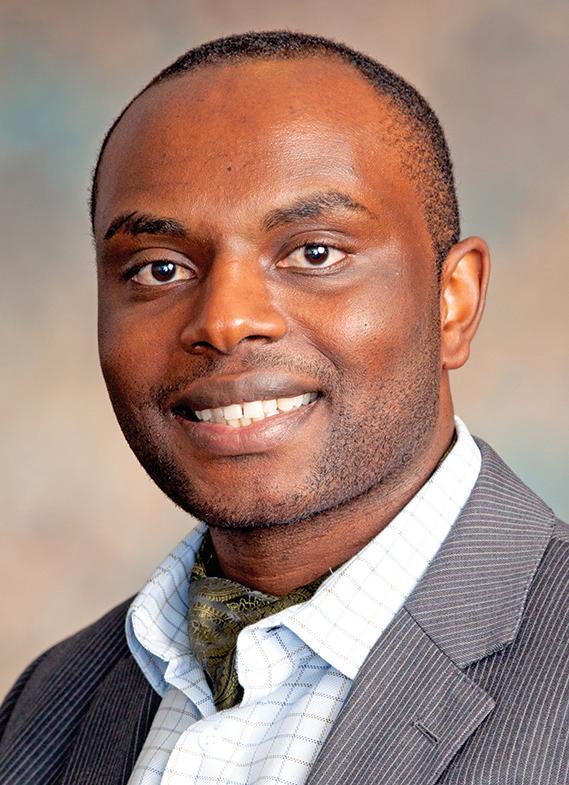
Martin Gitonga MHA, BSN, RN, ST is Patient Care manager, Otolaryngology, Neurosurgery, Spine, ACCS Robotic Surgery, at Barnes-Jewish Hospital.
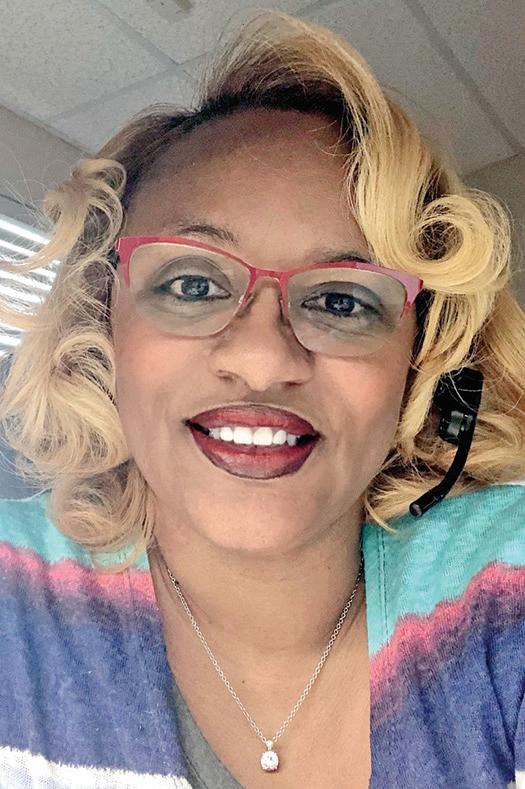
What is your current health care position? What are your responsibilities in this position?
My current health care position is a Community RN Care manager for John Cochran Veterans Hospital. In this position I process Orthopedic, Physical Therapy, Oncology and Interventional Radiology consults for veterans to be seen by community providers when we don’t offer the service or can’t provide it in a timely fashion.
How do you feel you are able to make a difference in this position?
I feel I am able to make a difference in this position because am very detailed oriented and dedicated to finding the veteran the best community provider that fits his/her needs. I am more concerned about the quality of my work than the quantity. I’d rather process five consults that match the best provider to the veteran and meets the veterans needs all around than 10 just to say I got the job done. I work with a team of about 11
nurses and over 20 advanced medical support assistants (AMSA). There are two nurses and two AMSAs assigned to a group of services.
Kimberly A. Hurst, RN, BSN
Health care is a team sport. Tell us about your team and how they help you succeed.
My team helps me succeed by showing up and being willing to tackle the workload each day. We huddle each morning to discuss our plan of the day, and then it’s ready, set, go. If any one of us has an issue, questions or concerns about any of the consults, we are all there to bounce ideas and or solutions off each other to get the issue solved.
COVID-19 has disrupted all of our
n I would like for young single mothers to know that they can be anything they want to be in life. I’m living proof.
work and lives. How has it disrupted your work, and how are you adapting?
COVID-19 has disrupted my work by cancelling appointments and services that would normally have been provided to the veterans in the community. We had to maintain physical distance in the office setting, which is hard to do. We learned how to work from home with limited ability to access all the resources we would normally be able to in the office. Half would work from home, while the other half worked in the office. Those in the office would do the leg work those at home couldn’t do. We adapted very well and learned a true meaning of teamwork.
See HURST, page 26
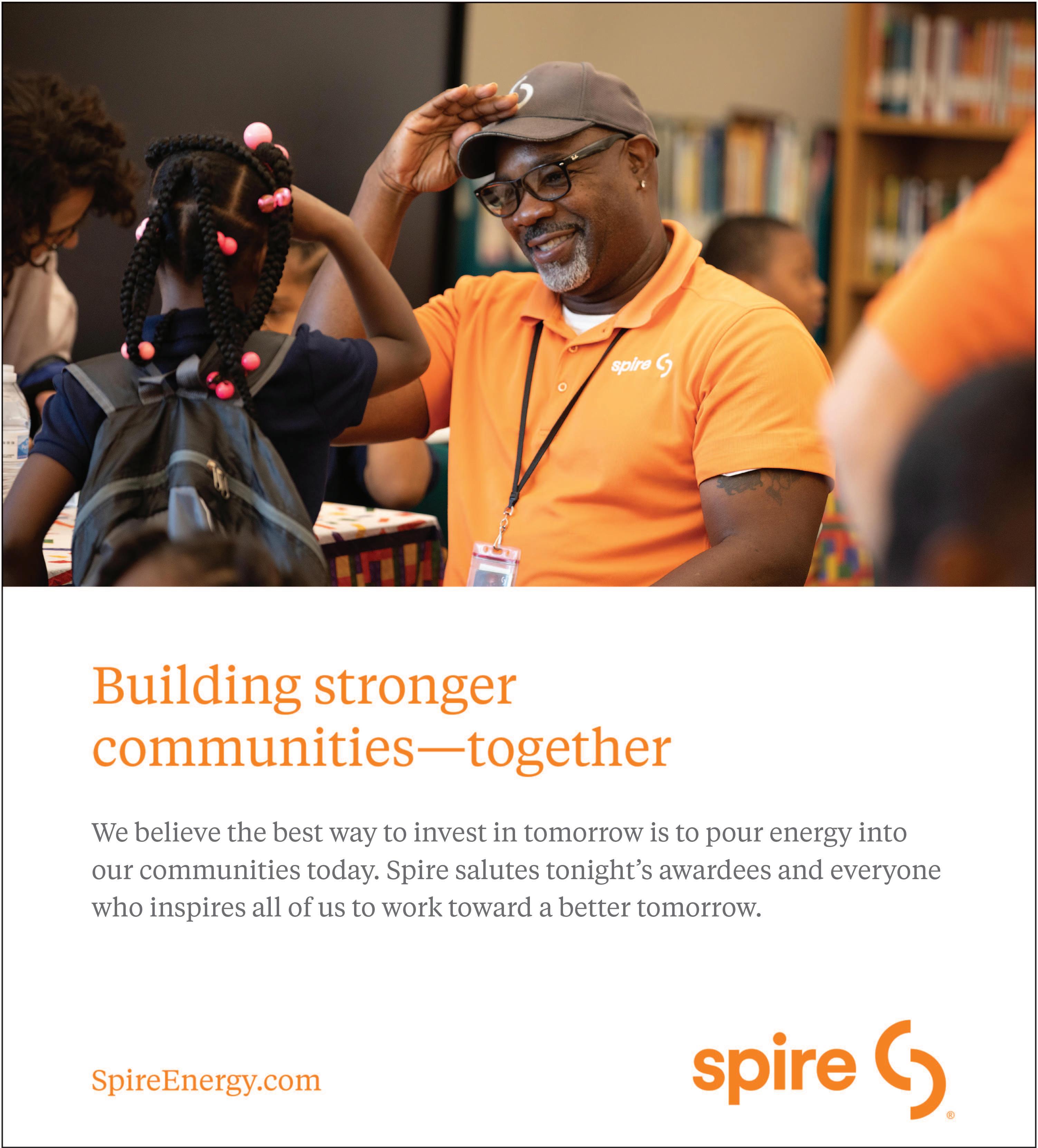
What is your current health care position? What are your responsibilities in this position?
Vice president of Operations for Adult Primary Care, Mercy Clinic St. Louis. I’m responsible for all aspects of primary care operations for practices in the St. Louis division which includes over 170 physicians and advanced practice providers operating in over 30 locations. This includes overall accountability for financial performance, clinical quality and patient experience. Critical to this role is the development of strategic plans that drive value and enhance patient care. Equally important is maintaining physician and coworker relationships that are conducive to a positive and collaborative work environment.
How do you feel you are able to make a difference in this position?
I consider it a privilege to work with and on behalf of our talented and hardworking physicians, APPs and clinical teams. I view my role as one of problem
solver to ensure they can focus on their No. 1 priority of patient care as well as advocating for solutions that improve the overall experience for our patients, coworkers and providers. In this role, I’m able to develop policies, new strat-
egies and implement solutions that ultimately impact patient care, and I take this responsibility very seriously.
Health care is a team sport. Tell us about your team and how they help you succeed?
I have an amazing team of leaders and coworkers that I am blessed to work with. First, is my dyad partner, Dr. Jason Hand, who is the department chairman of Adult Primary Care in St. Louis and
n Being in primary care, I believe we are on the front lines of supporting our communities through this pandemic.
also the Primary Care Specialty Council leader for our ministry. We work in partnership to ensure the needs of our department are met as Mercy values the contributions of both physician and administrative leadership in the decision-making process.
We also have several assistant department/section chairmen that assist us with different areas within our department (internal medicine, family medicine, urgent care, post-acute). I also have several directors that help provide additional support to our practices and over 25 managers providing day-to-day operational support within our clinic sites. Not
See JEWELL, page 26
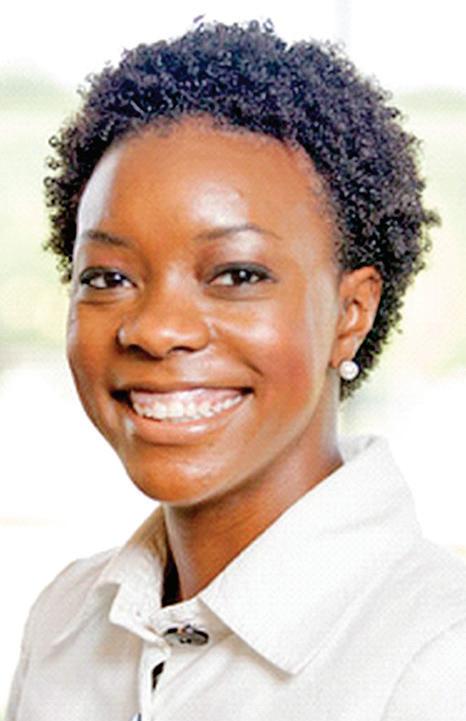
‘I have always been from the North Side’
What is your current health care position? What are your responsibilities in this position?
I am a mental health rehab nurse with Black Alcoholics Substance Information Center (BASIC), where I work on rehab health issues, make referrals, follow up with any medical problems as part of the recovery process.
And I am a school nurse with St. Louis Public Schools, where I implement routines for daily care – first aid, administering medications, compliance with immunizations. I am part of the health team. If a student needs an individual education plan, I would be the medical component. Now we are trying to prepare for a possible return in August, so I am working on the leadership dynamic for health and safety.
How do you feel you are able to make a difference in this position?
I am the medical component, and each person within their own area of specialty
combines to make better, more effective plans of care.
Health care is a team sport. Tell us about your team and how they help you succeed.
There is the principal, who is our leader, and social services, family care
Virginia Lane
support specialists, and counselors. Along with the other team members, we all are important to mental, physical and psychosocial leadership and guidance.
COVID-19 has disrupted all of our work and lives. How has it disrupted your work, and how are you adapting?
It has strengthened my knowledge of Zoom for follow-ups and team
n I was one of the first black nurses who went to work at Washington University. I worked as a clinical research nurse when there were only two black nurses there.
meetings. I have had to make phone calls to talk to parents. Now we are setting up immunization clinics in hopes that parents will respond. Usually we just send papers home with the student. It has forced drastic changes in our attempts to provide good health care.
Mentors are crucial to the development of a successful professional. Tell us about a mentor and how that person guided you.
See LANE, page 25
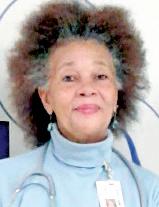
Helen Virginia Lane is a school nurse with St. Louis Public Schools and a mental health rehab nurse with Black Alcoholics Substance Information Center.
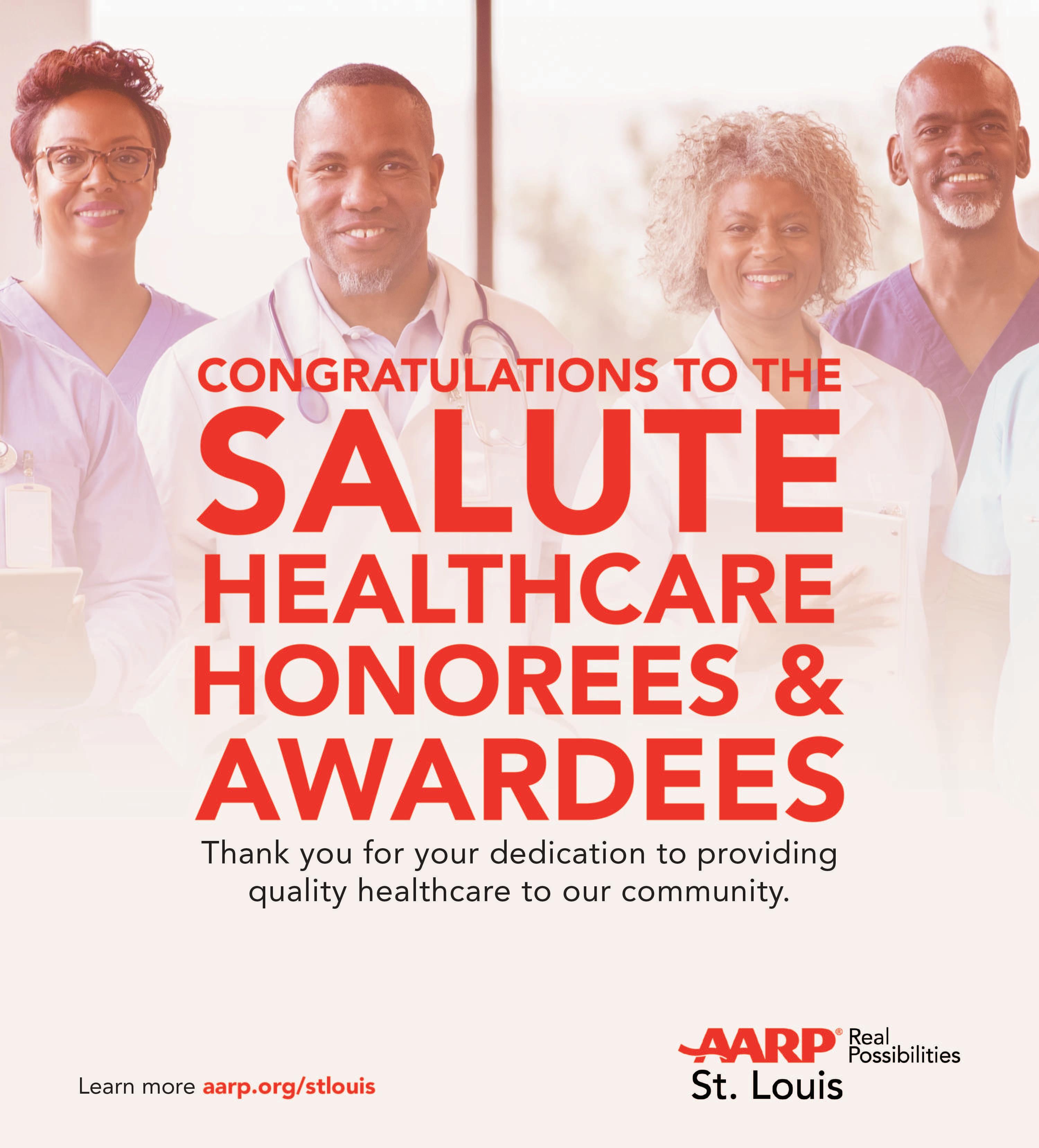
What is your current health care position?
I currently serve as a board-certified Family Medicine physician providing comprehensive quality care to children and adults of all ages. I have a special interest in obesity medicine and diabetes care particularly since evidence has been shown that obesity management may slow the progression from pre-diabetes to diabetes. In addition, I collaborate with midlevel practitioners, both medical students and resident physicians.
How do you feel you are able to make difference in this position?
I don’t take it lightly the fact that I have been given the opportunity to impact the lives of others. Serving the community is a ministry for me. One of my most rewarding experiences is when an uninsured patient obtains health coverage and lets me know that they have made a choice to continue their care with myself, stating, “When I was uninsured, you took great care of me. I will not go anywhere else.”
Health care is a team sport. Tell us about your team and how they help you succeed?
Our patient care team is unique. The extended primary care team is interdisciplinary and includes but is not limited to the primary care/ behavioral health model, nursing support, clinical phar-
Leslie McCrary-Etuk, MD, ABFM
macist and ancillary services for which I depend on for success. We as a team have the grace to endure trials, pandemics, chaos and crisis.
COVID-19 has disrupted all of our work and lives. How has it disrupted your work, and how are you adapting?
The current pandemic has introduced fear, anxiety, hopelessness, and uncertainties. Particularly, these realities have been more devastating to the vulnerable
n One of my most rewarding experiences is when an uninsured patient obtains health coverage and lets me know that they have made a choice to continue their care with myself.
population that Care STL Health serves. There appears to be both an economic and public health approach to this pandemic with different strategies to lessen the gravity.
Yet, I have utilized the available resources to continue caring for patients through virtual visits which have been received well by many of my patients. The use of virtual visits (both audio and video) provide not only continuity of care, but also comfort to many who otherwise have felt abandoned during this period of quarantine without the need to
See McCRARY-ETUK, page 25
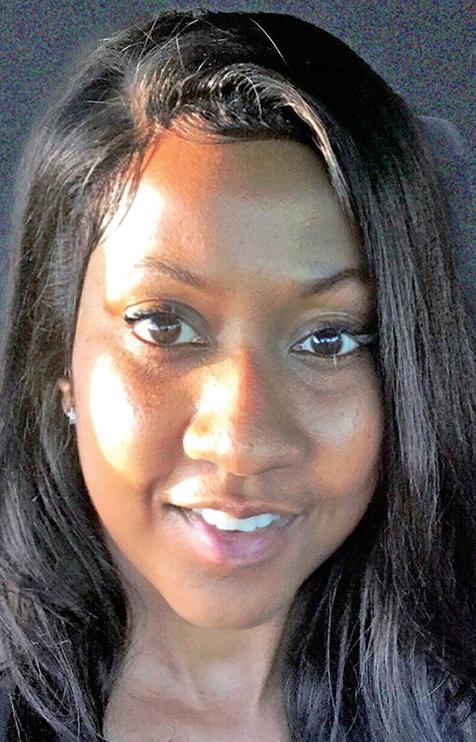
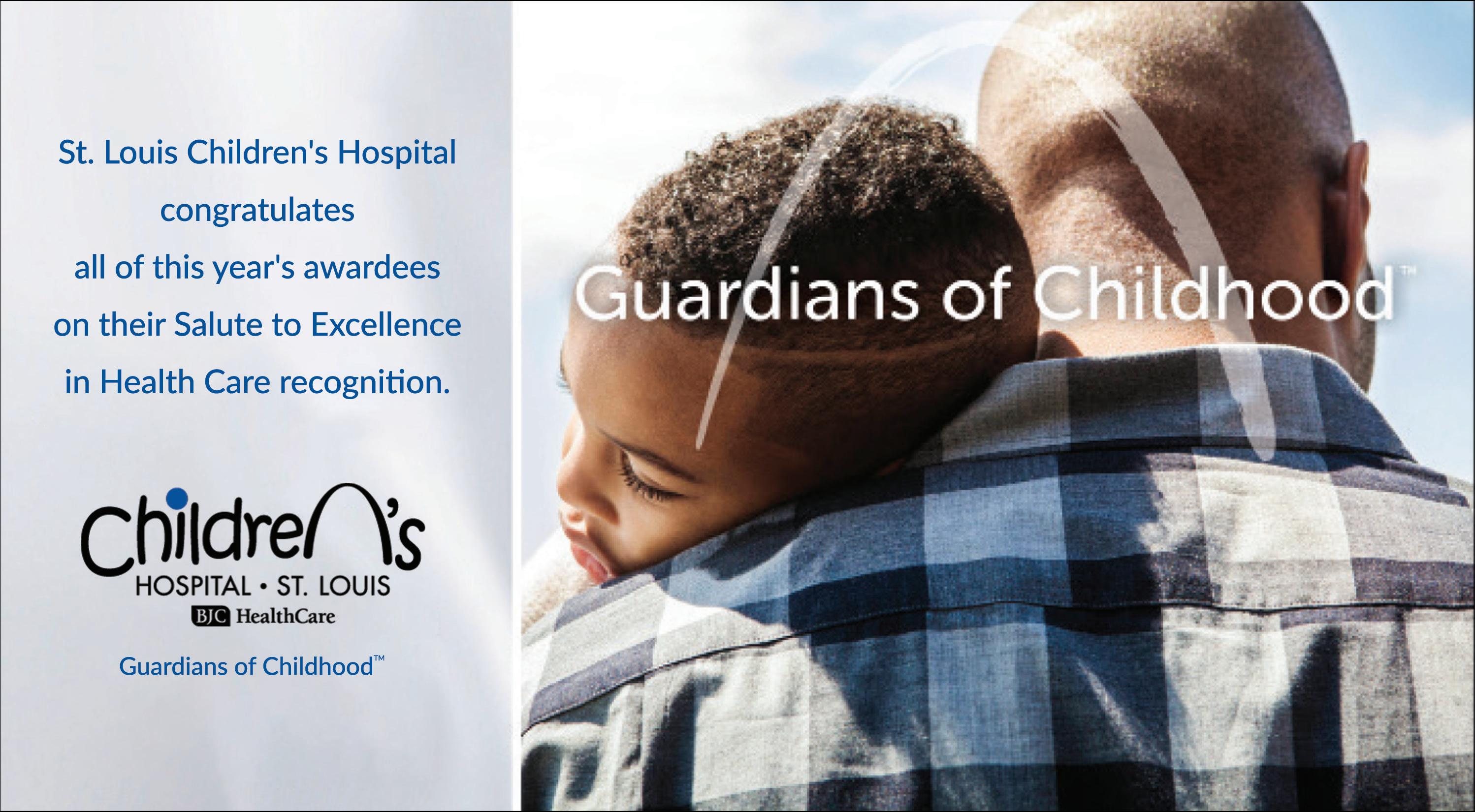
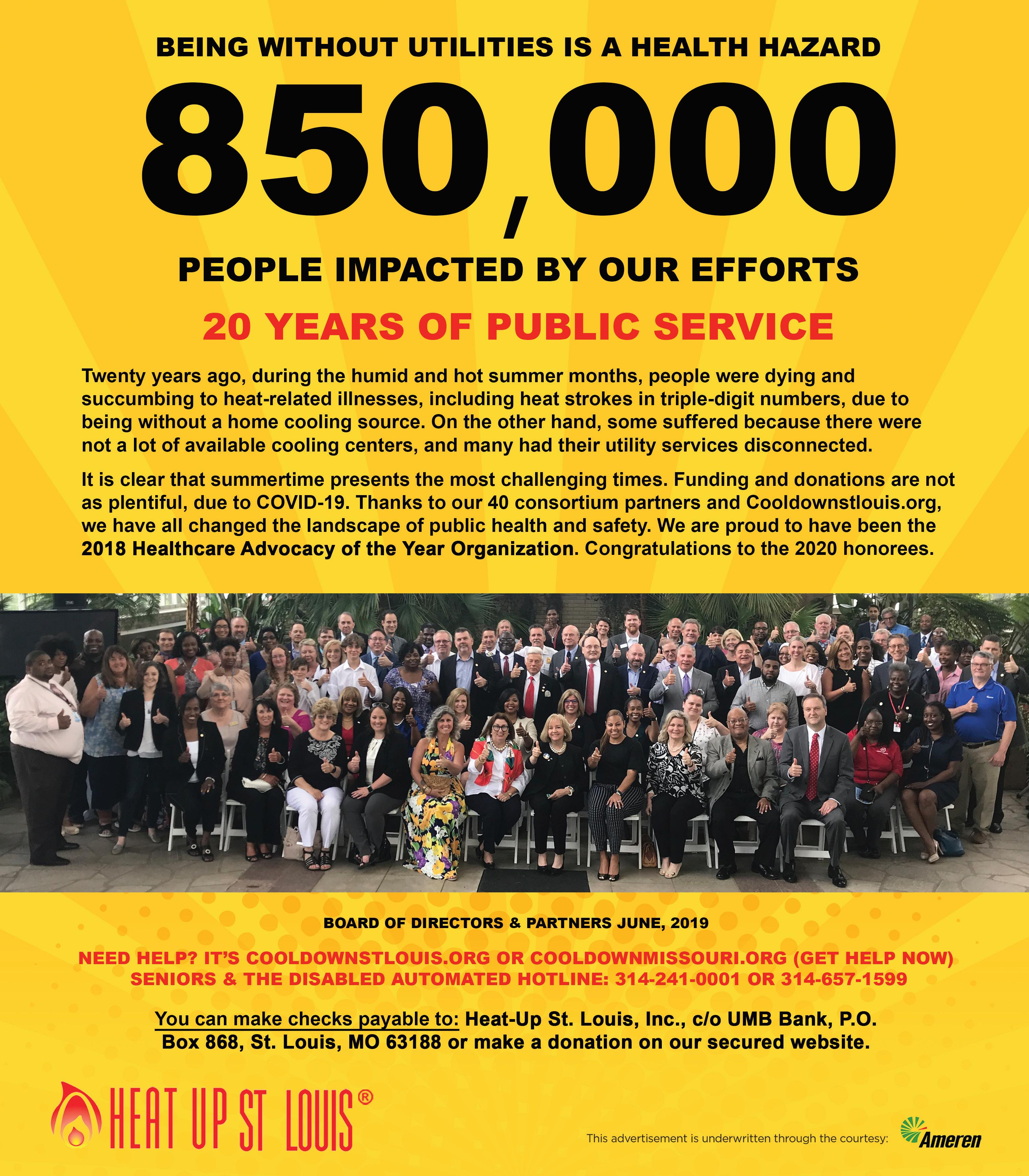
What is your current health care position? What are your responsibilities in this position?
I am the Emergency Preparedness Program manager with the Communicable Disease Control Services Division of the St. Louis County Department of Public Health. I manage a staff of Emergency Response planners. Our primary role is to plan for and develop emergency operations plans and procedures. Our main focus is planning for bioterrorism attacks and dangerous disease outbreaks (for example: intentional releases of agents like anthrax, tularemia, the plague, smallpox, etc.). These agents can be weaponized and used against the public to cause wide-spread fatalities. We plan to mitigate these attacks as well as exercise our plans on how to dispense mass amounts of medical countermeasures to the public to prevent the disease and/or death. We also plan for additional hazards, such as natural, chemical, radiological, and nuclear incidents. We partner with local, state, federal, private,
public, and volunteer agencies who may assist us during a response. We also train and conduct disaster response exercises with them to ensure familiarization with our protocols and the Incident Command System.
How do you feel you are able to make a difference in this position?
I feel that I and my staff make an impactful difference simply through educating and informing the county government departments as a whole and educating the public. Teaching and training people on what they need to know and how they should respond and the services we can offer can be the deciding factor between life and death sometimes. It also can determine the resilience level
n Emergency communications has taught me that everyone has to be considered the same. When a person dials that number, they are in need of HELP!
of an individual, a family, and the entire community.
Health care is a team sport. Tell us about your team and how they help you succeed.
While we are not a team of health care workers in the traditional sense, we see everyone as our patient. A public health emergency has the capability to affect each of us, no matter the race, economic or social status, or our profession. My staff helps me to succeed by their diligence in their various areas of expertise. They each are passionate about their
See SHAW, page 26
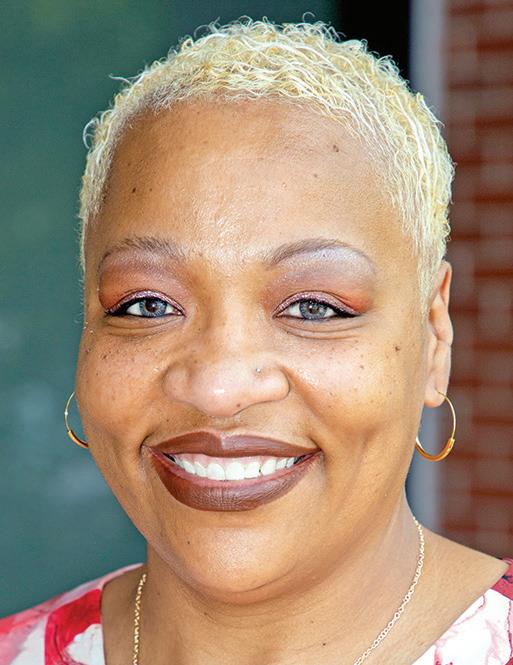
Ntasiah K. Shaw, MS, CDP, CEM, is Emergency Preparedness Program manager for the Saint Louis County Department of Public Health’s Communicable Disease Control Services.
‘Who can I help? How can I help them?’
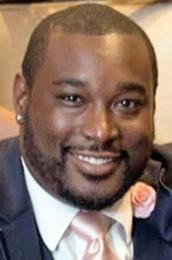
What is your current health care position? What are your responsibilities?
I am director of Youth Services for People’s Community Action Corporation. I create, arrange and implement various activities and events for the children and adolescents. I work with other individuals, schools, groups, agencies, public officials, and the community in order to provide a diverse range of services for youth and families. I assure students receive dental, immunization, physicals at Vashon High School. I provide school-based family support and connection to community resources for families of diverse socio-economic and ethnic backgrounds. I provide individual and group counseling to students with identified concerns and needs. I assist all students, individually or in groups, with developing academic, career and personal/social skills. I mentoring, coordinate College Fairs, and direct College Tours. I collaborate with parents/guardians and educators to assist students with educational, career, and life planning.
How do you feel you are able to make a difference in this position?
Having the opportunity to provide direct services has really allowed me to see gaps in our community and state that don’t address the challenges that disconnect our youth. My work ethic, commitment and devotion allow me to go above
and beyond for my community. As the director of Youth Services, I am able to connect with several youth who may be homeless, in unstable households, runaways or just those individuals who may need additional resources. When in contact with such individuals, I am able to link them with social services to assist in providing them the necessities needed to make it day to day.
n I knew that I had to find a way to make a difference. I needed to be that voice, that person to say: I see you, how can I help?
Health care is a team sport. Tell us about your team and how they help you succeed?
My team is dedicated from start to finish. We collectively work together to ensure that each and every individual or family member we meet walks away with the fulfillment of knowing not only their immediate needs have been addressed, but they were also provided additional resources to sustain them.
COVID-19 has disrupted all of our work and lives. How has it disrupted your work, and how are you adapting?
See SWINGLER, page 27


By Rebecca Rivas Of The St. Louis American
In December, the St. Louis region received a harsh annual update from the National Council on Alcoholism and Drug Abuse (NCADA-STL).
There were 1,080 people who died from overdoses involving opioids in 2018 alone — a new high for the region, the council reported. St. Louis is at the height of an opioid addiction epidemic with no sign of slowing.
Then, just a few months later, the region went on complete shutdown for the COVID-19 pandemic. The COVID19 pandemic and opioid epidemic intersect in one significant way.
“We have two things that are really impacting the black community — COVID-19 and overdose deaths,” said Dr. Kanika Turner, who has served as associate medical director at the Family Care Health Center’s Carondelet location since March 2019.
However, Turner sees a great opportunity presented in this double threat, and she’s acting on it.
“If you look at the map where the COVID cases are, it’s very similar to the same map for overdose deaths,” Turner said, referring to North St. Louis County, North St. Louis City and parts of South City.
“When we look at where these disparities are, it brings a lot of questions. Where is the nearest treatment center? And if you look at the map of treatment centers and locations, there are not too many that are close enough to the highrisk areas experiencing a lot of the overdose deaths.”
Turner saw an opportunity to increase access to Narcan (naloxone), a nasal spray used for treating an opioid overdose, as part of the mass effort to increase access to testing for COVID-19. She started with her own clinic, which is a federally qualified health center (FQHC) for low-income families. She has since worked with other FQHCs, including Affinia, to get naloxone at their testing sites as well.
“People can come for COVID testing, but if they need access to naloxone at these testing sites, they’ll have access to Narcan as well,” Turner said. “I think it’s unique that we’re bridging those two.”

Turner is also helping to spread this concept among the proposed testing sites in churches, located in areas hardest-hit by the pandemic. She is working alongside Dr. Fredrick Echols, acting director of the City of St. Louis’ public health department, and the city’s clergy advisory board.
“In the black community, the church is such a strong spiritual and social support,” Turner said. “So, if they are doing testing there and they can also have naloxone available at the church, it could help destigmatize things.”
On July 9, Turner will receive the 2020 St. Louis County Children’s
Dr. Kanika Turner will receive the 2020 St. Louis County Children’s Service Fund John Anderson Excellence in Mental Health Award
Service Fund John Anderson Excellence in Mental Health Award from the St. Louis American Foundation.
Throughout Turner’s career, she has been passionate about destigmatizing treatment for addiction, especially in the

By Rebecca Rivas
Of The St. Louis American
With record numbers of people out of work in St. Louis due to the pandemic – the St. Louis Fed reports April 2020 unemployment in the St. Louis region at 11.6% compared to 3.3% in April 2019 – the region will be going through an “economic restructuring” for the next few years, said Rev. Dr. Starsky Wilson, president and CEO of the Deaconess Foundation.
“This is going to require an actual revisioning of who we understand ourselves to be as a community,” Wilson said.
The foundation believes the health and social impacts of this process are being underestimated, Wilson said. The funding for economic recovery is largely going to come through the federal government, which means the community will need advocacy organizations to lift up their voices in discussions about the allocation of public resources, he said.
This is why the Deaconess Foundation is doubling down on supporting advocacy organizations.
“We’re going to be launching in June a cohort of six black-led organizations that we have identified as critical to our just recovery from COVID-19,” Starsky said. “And we will be investing in those organizations for the next two years to assure that they are well-positioned to weather the economic storm that COVID-19 has created so that they can be active partners in framing a just recovery.”
The six organizations are: Action St. Louis, Dutchtown South Community Corporation, Forward Through Ferguson, Metropolitan St. Louis Equal Housing Opportunity Council (EHOC), the Organization For Black Struggle, and United Congregations of Metro East.
The foundation will award $350,000 in grants to these groups over two years, as well as provide professional development and peer coaching for all the executive directors and key staff.
The initiative comes on the heels of the foundation’s announcement in April to award $2.2 million in grants to more than 50 black-led organizations work-

ing in COVID-19 relief and recovery in the St. Louis region. The Robert Wood Johnson Foundation contributed $1 million to this effort.
Just months before the pandemic hit the region, the Deaconess Foundation was one of the primary funders in successfully wiping out $12.9 million in medical debt of families living at or
below the poverty line through the RIP Medical Debt program.
Honoring this incredible work, the Deaconess Foundation will receive the 2020 Health Advocacy Organization of the Year Award from the St. Louis American Foundation.
“Deaconess Foundation envisions a community that values the health and
Rev. Dr. Starsky Wilson, president and CEO of the Deaconess Foundation
well-being of all children and gives priority attention to the most vulnerable,” according to the foundation’s website. “This community only thrives if the allocation of power and distribution of resources, benefits, opportunities and burdens are not predictable by, nor predi-
See DEACONESS, page 20
Continued from page 17
black community. At her own clinic, she is a big advocate for integrating family health medicine and addiction medicine.
“For me bringing them under one roof, it helps to establish that trust,” she said.
Substance abuse is a chronic disease, she said, and she has spent much of her career working to change the perception that it’s a “moral felony” that people need to handle on their own.
“We’re removing some of those barriers on the health care side,” she said.
Turner grew up in North St. Louis County, graduating from the Hazelwood School District. Then she went on to earn a long line of degrees, all the way up to her medical degree, from Saint Louis University. She is now the clinical instructor at Saint Louis University School of Medicine Department of Family and Community Medicine.
n “If you look at the map where the COVID cases are, it’s very similar to the same map for overdose deaths.”
– Dr. Kanika Turner
Her patients have been taking buprenorphine to treat their addictions for several years, and many of them have been able to turn their lives completely around.
This is another area where the COVID-19 pandemic has actually made it easier to treat people. Prior to the pandemic, people had to come in for their first treatment visit face-toface with a doctor. That requirement has since been waived, and the visit can be done through telemedicine — which is a huge step in expanding access to treatment, she said.
She is the creator of the Faith Based Opioid Initiative working with communities of faith primarily in AfricanAmerican neighborhoods in St. Louis to increase awareness of recovery, treatment, and preventive resources. During her time at Family Care Health Center, she has done numerous things to impact pregnancy-related health outcomes for minority women, including developing a primary-care model in treating pregnant women with substance use disorders.
“I made the decision I didn’t want to leave St. Louis,” she said. “I wanted to stay. With me growing up in St. Louis, I have a feel for issues and concerns of the community here. I have passion to help our community.”

Continued from page 19
cated on race.”
The foundation’s roots go back to 1889, when the Evangelical Deaconess Society of St. Louis was established, and the first Deaconess Sisters consecrated. In the following decades, the sisters established a hospital and a nursing school. However, in 1997 the Deaconess Incarnate Word Health system was sold, and in 1998 Deaconess began grantmaking with a focus on St. Louis children in poverty.
In St. Louis city, black children are four times as likely as white children to live in households with income below the poverty level, 44% compared to 11.8%, according to the city’s Equity Indicators
“Kids don’t grow up in programs,” Wilson said. “They don’t grow up in schools. They grow up in families, and so we have to impact the things that are impacting families.”
The foundation recognizes that healthcare costs pose a “remarkable drag” for any family, but especially those living in poverty.
“Medical bills are the leading cause of bankruptcy in the country,” Wilson said. “So, when we talk about making sure that those families have economic mobility, have access to comprehensive healthcare, we come to this intersection that millions
of Americans find themselves at — which is medical debt that leads them to debt collectors.”
Rev. Traci Blackmon, senior pastor at Christ the King United Church of Christ and UCC associate general minister of Justice and Local Church Ministries, came to the foundation with the idea of participating in RIP Medical Debt, and the foundation jumped on board. Donors from UCC came up with over $60,000, and the Deaconess Foundation donated $40,000. With that $100,000 donation, they purchased $12.9 million in medical debt of families living at or below the poverty line through the RIP Medical Debt program.
In February, 11,108 St. Louis city and county families in 78 local ZIP codes received envelopes informing them of their medical debt cancelation. While this is a one-time help for families, the foundation understands that it does not get at the heart of the problem, Wilson said.
“We wouldn’t have to do this had we expanded Medicaid,” Wilson said.
The foundation partnered with several advocacy organizations to gather signatures for a petition to expand Medicaid in Missouri, which will be on the August 4 ballot.
“All but 13 states have expanded Medicaid,” he said. “This is crippling people in our community. We need to expand Medicaid. Charity is not going to resolve it.”

By Rebecca Rivas Of The St. Louis American
One question changed everything for trauma surgeon Dr. LJ Punch: “Where you at?”
In 2016, Punch was a panelist at a community forum on gun violence, hosted by Better Family Life. It was just six months after Punch arrived in St. Louis, and Punch’s new employer Washington University School of Medicine had a gun-violence initiative. Punch had just been recruited from Baltimore to work in the surgery department at Barnes-Jewish Hospital.
“After the panel — which I felt did not go particularly well from my standpoint, because my white coat and long answers were not inspiring to anybody — James Clark came up to me,” Punch said. “I shared with him that he knew my boss. And he said, ‘Yeah, I know your boss. Where you at?’”
The disconnect between the two worlds — the community and hospital — was jarring, Punch remembers.
“That’s when I decided to match and marry a public-health campaign with this boots-on-the-ground program that Mr. Clark was starting, the gun violence de-escalation program,” Punch said.
STOP THE BLEED is a national campaign that was launched after the tragic shooting at Sandy Hooks Elementary in December 2012. Through free courses, anyone can learn how to stop life-threatening bleeding in emergency situations.
“While it’s wonderful and important, mass shootings represent only 2 percent of all gun violence,” Punch said. “How can we take this well-thought-out approach and apply it to communities where gun violence is not an ‘if,’ it’s a ‘when’?”
It took about two years of discussions with Clark and his team of outreach workers before they had their first class. It was led by Punch, along with medical student Jane Hayes and Dr. Erin Andrade. While attendees liked learning about how to use a tourniquet to prevent bleeding and other medical skills, the more powerful moment came when the class received certification cards to put in their wallets, Punch said.
“People were holding up their cards, walking around saying, ‘I’m certified,’” Punch said. “That experience really brought home for us a couple really key principles. One, radical generosity. We

Dr. LJ Punch founded and directs Power4STL, a non-profit that focuses on four areas: bullets, COVID, homelessness and opioids.
have to undo this sensation of distance and scarcity — and instead infuse people with the idea that you are enough and can act as a helper on the scene wherever you are.”
The second principle was being accessible to people, which often goes against the numerous boundaries commonly experienced in health care, Punch said.
In the first year, Punch’s team certified 3,000 people in these life-saving
skills at schools, churches and other community events. Since the program started, they’ve instructed 8,000 people and provided just as many medical kits along the way — including to many teenagers. That effort led to the opening of The T, at 5874 Delmar Blvd. The logo — a capital T with a slash going through it — was meant to look like a tourniquet.
“But it ended up looking more like ‘No more trauma,’” Punch said. “Since
we’ve been at The T, our platform has gone way past STOP THE BLEED.” It now includes youth nights, classes on opioid overdose, and programs to aid recovery, emotionally and physically, from bullet injuries.
‘Stop
“So, the T is wonderful,” Punch said. “We’ve got programming, volunteers, students — and then the pandemic hit. And everything we had based our space on was proximity.”
Interestingly, Punch’s team had established an international trade and supply chain for the trauma first-aid kits. In January, they learned that the pandemic was really serious, so they decided to shift gears.
“This is coming,” Punch remembers thinking. “It’s going to be very similar to violence because it will take advantage of those who don’t have what they need. And maybe we’re in a position, the same way we were to stop the bleed, to now stop the virus.” They shifted their purchasing to Personal Protection Equipment (PPE), including masks and gloves, and began making Stop the Virus kits. They crossed paths with PrepareSTL — a regional governmental outreach campaign that gives out PPE and educational resources on COVID-19. So, they joined forces and turned The T into a sterile room to make the kits.
“Many weeks later, I don’t know how many thousands we’ve reached in partnership with PrepareSTL,” Punch said. COVID-19 reinforced a powerful concept for the team.
“If you are surrounded by bullets, if you are surrounded by a virus, if everyone around you doesn’t have what they need in terms of their nutrition, if pain and trauma are the lived and breathed norm, it can seem as the only choice you have is to succumb to it,” Punch said. “We say, ‘No, no, no.’ With the right training, with the right equipment — whether a tourniquet or a mask or a Narcan or a bandage — you have the power to change the outcome.”
‘Trauma surgeon in recovery’
“I’m a trauma surgeon in recovery,” Punch said. “I have been there when
See PUNCH, page 25
Continued from page 21
many, many beautiful black men have taken their last breaths, all due to the impact of violence. I have gotten to a point where I can no longer accept that fate for my people, having seen the power people have when you simply take the time to be present, teach and give. I am so compelled by both that strength and so disturbed by the horrors I’ve seen, I can no longer sit inside the walls of the hospital and be satisfied.”
On July 1, Punch will be moving the work outside the walls of the hospital and will be working full time in what Punch calls “community health.” Punch will work through the T and a newly established nonprofit, Power4STL, to focus on four areas: bullets, COVID, homelessness and opioids.
n “We have to undo this sensation of distance and scarcity — and instead infuse people with the idea that you are enough and can act as a helper on the scene.”
– Dr. LJ Punch
“They are all areas where I find both tremendous resilience and profound suffering,” Punch said. “I’m going so far as to take my office on wheels.”
Punch bought a used ambulance to move within the community. But the end game is The BRIC — Bullet Related Injury Clinic, which Punch hopes to open by the end of the summer. The clinic will serve the needs of people who have experienced a bullet injury and are being discharged from the hospital. More than 2,000 people experience bullet injuries in this region every year, Punch said,

“It impacts the family and it hurts one of our most essential components of wellbeing — the need to belong or connect to others. Because when someone shoots a piece of metal into your body intended for your death, and you then walk around with that hole, scar or even that metal still in you, it’s very, very difficult to believe the world is a place in which you are safe.”
and half of them are discharged from the emergency room without being admitted.
“Frequently, their wounds are superficial enough that they don’t require surgery, but they are still deep enough that they completely disrupt a person’s wellbeing,” Punch said.
When they are discharged, they are often forced into the very difficult task of caring for their wounds themselves. The pain is immense, and often fragments of the bullets are left in the body.
“The thing is it doesn’t just limit itself to the bullet track,” Punch said.
For all this profound work and impact in the gun violence and COVID19 pandemics, Punch is receiving the 2020 Stellar Performer in Health Care from the St. Louis American Foundation.
“Making the decision to move beyond the walls of the hospital and into the community was one of the richest, most amazing decisions I made — that I didn’t necessarily realize I made,” Punch said. “That’s how all this got started — was me simply trying to answer the call, ‘Where you at?’”
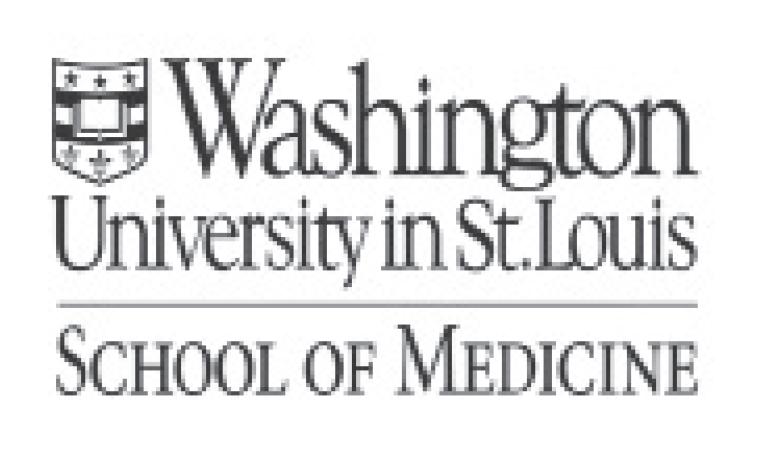
By Rebecca Rivas
Of The St. Louis American
When patient advocate Rosetta Keeton was young, her father worked three jobs to take care of his wife and five children.
But he was ill, Keeton said, and didn’t have insurance. As she got older, Keeton would take her father to the emergency room at Homer G. Phillips Hospital, where nurses would greet him warmly.
n “Healthcare to me is a human right. And quality healthcare should be a human right.”
– Rosetta Keeton
“People were very kind to him, but he was in a system of people who looked like him, who understood him, who knew the plight of this man trying to take care of his wife and five children,” Keeton said.
Keeton, now the director of patient access at the St. Louis Regional Health Commission, will be honored by the St. Louis American Foundation as its 2020 Lifetime Achiever in Health Care.
She has been a patient advocate and ombudsman in St. Louis for more than 30 years. She believes her lifetime dedication to fighting for patients’ rights stems from the closure of Homer G. Phillips Hospital in 1979. Like many throughout St. Louis, Keeton believes that “a part of the black world in St. Louis died” when the teaching hospital closed — and her community has not been able to get equitable healthcare since.
“I think about that in terms of today when some patients go to the emergency room because they can’t take off their jobs,” Keeton said. “They don’t have insurance. How kind those people
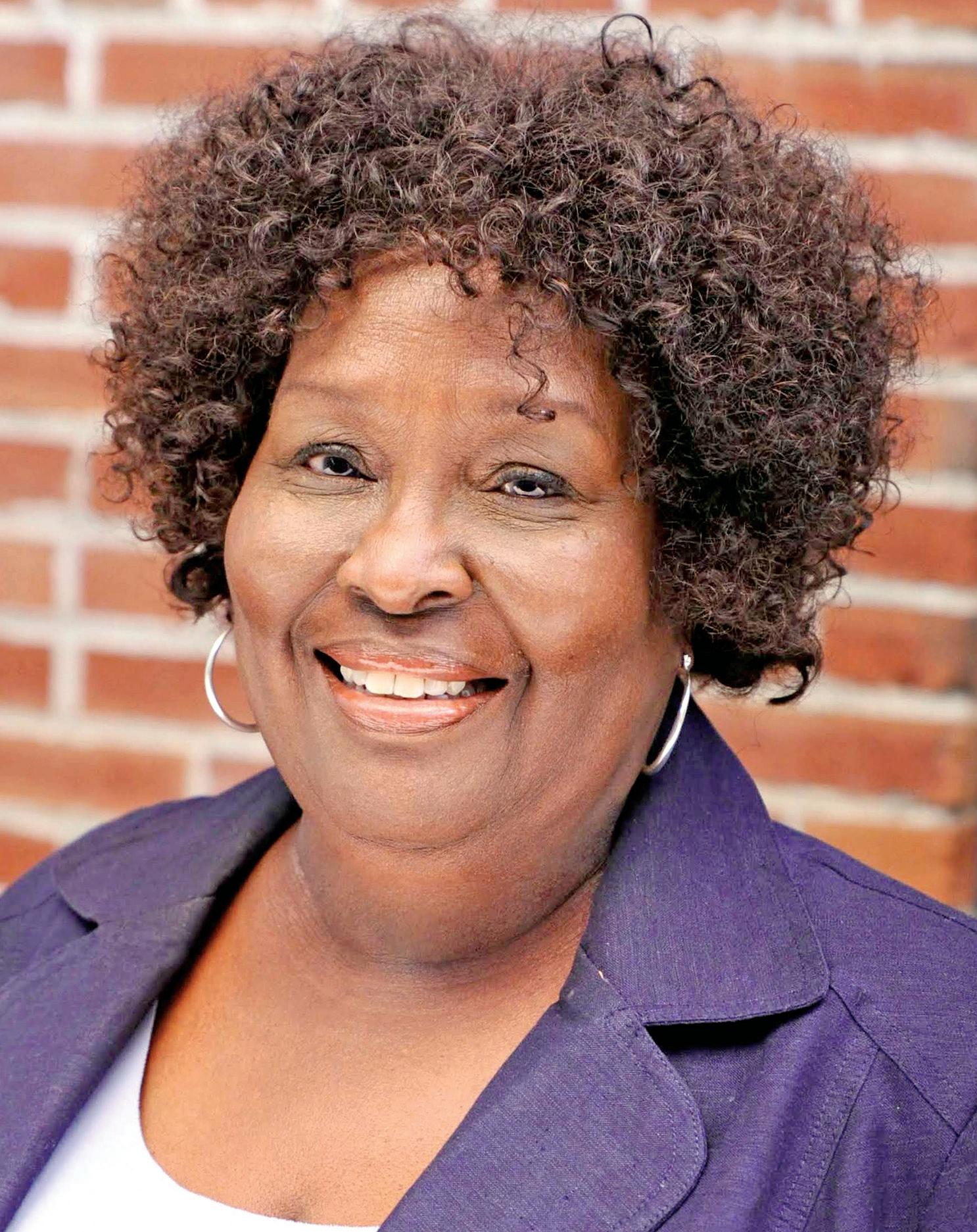
were to my father when he came to the emergency room, versus the comments I hear of patients going into the emergency room now. For me to see my people going into systems where people didn’t understand them, understand their plights, I guess that’s where it came from.”
Since then, Keeton has been fighting for the rights of patients who don’t have insurance.
“Healthcare to me is a human right,”
Rosetta Keeton, director of patient access at the St. Louis Regional Health Commission, is the St. Louis American Foundation’s 2020 Lifetime Achiever in Healthcare.
“And quality healthcare should be a human right. As much as I can, I try to get them what they need.” Her advocacy started while work-
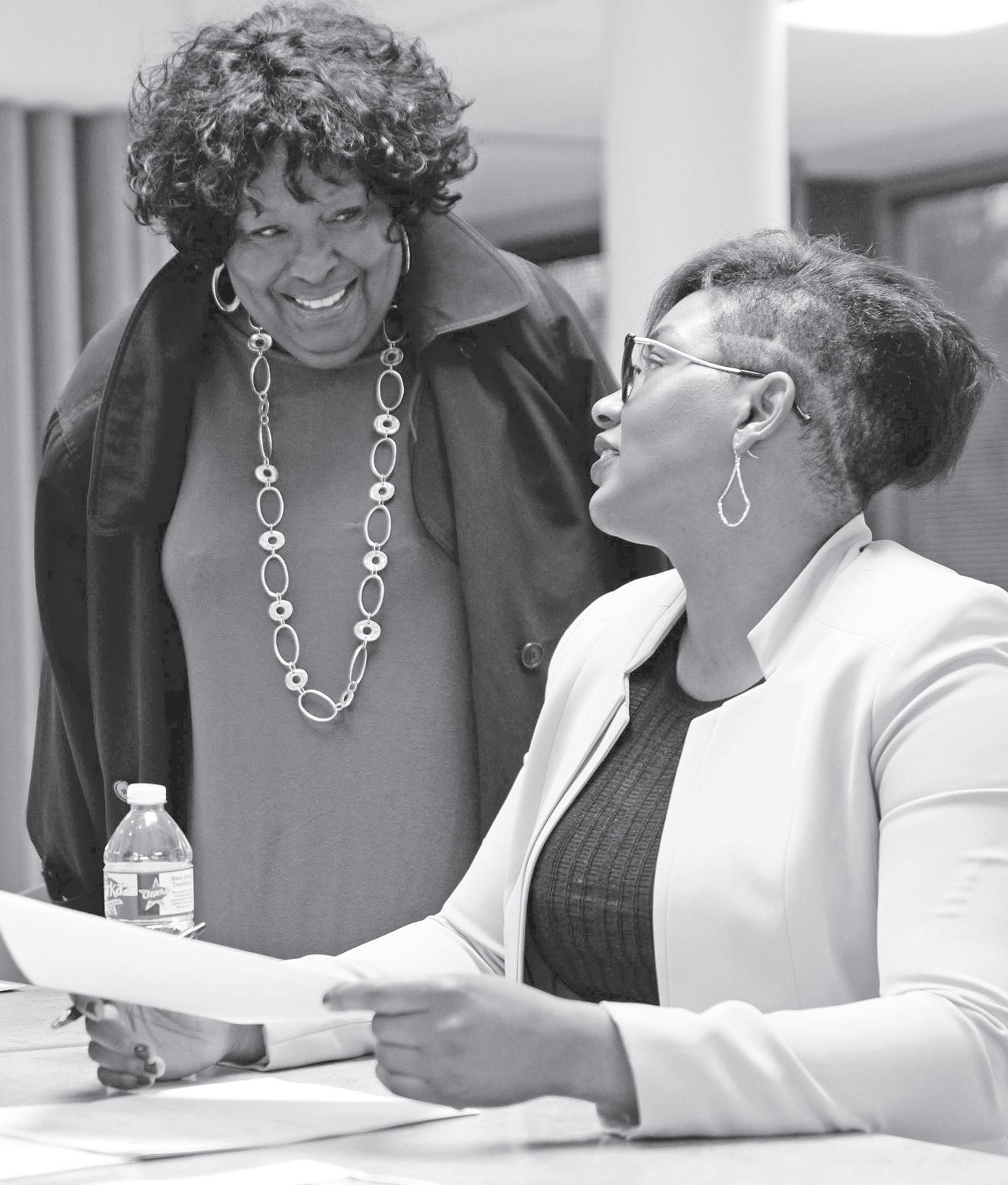
Continued from page 13
ing healthcare jobs in the 1970s, when she took it upon herself to help patients understand their medical bills, even if it meant going to their houses on Saturdays.
“My job was to talk to these patients, get to know them, understand what their problems were and represent them if they had issues that they couldn’t resolve or didn’t have anybody to talk about,” Keeton said.
“And we found there were a lot of instances where a lot of people intentionally or unintentionally violated patient rights. Some people were amenable to changing – some people weren’t. Some
departments and some organizations were amenable, and some weren’t. So, it was our job to help the patient.”
At one of those early jobs, at the now-demolished Truman Restorative Center on Arsenal Street in South St. Louis, Keeton said her mentor Jackie Jackson taught her that there are two sides to every story – and then there’s the truth.
“That was the hardest thing to learn: what was the truth?” Keeton said. “As I grew in advocacy, I never forgot that you must look for the truth. And the truth will tell you what should actually be done. If there is an inequity, you’ll see it. The truth will tell you.”
Keeton grew up in public housing projects in St. Louis, living with her hardworking father, stay-at-home mother, two sisters and two brothers.
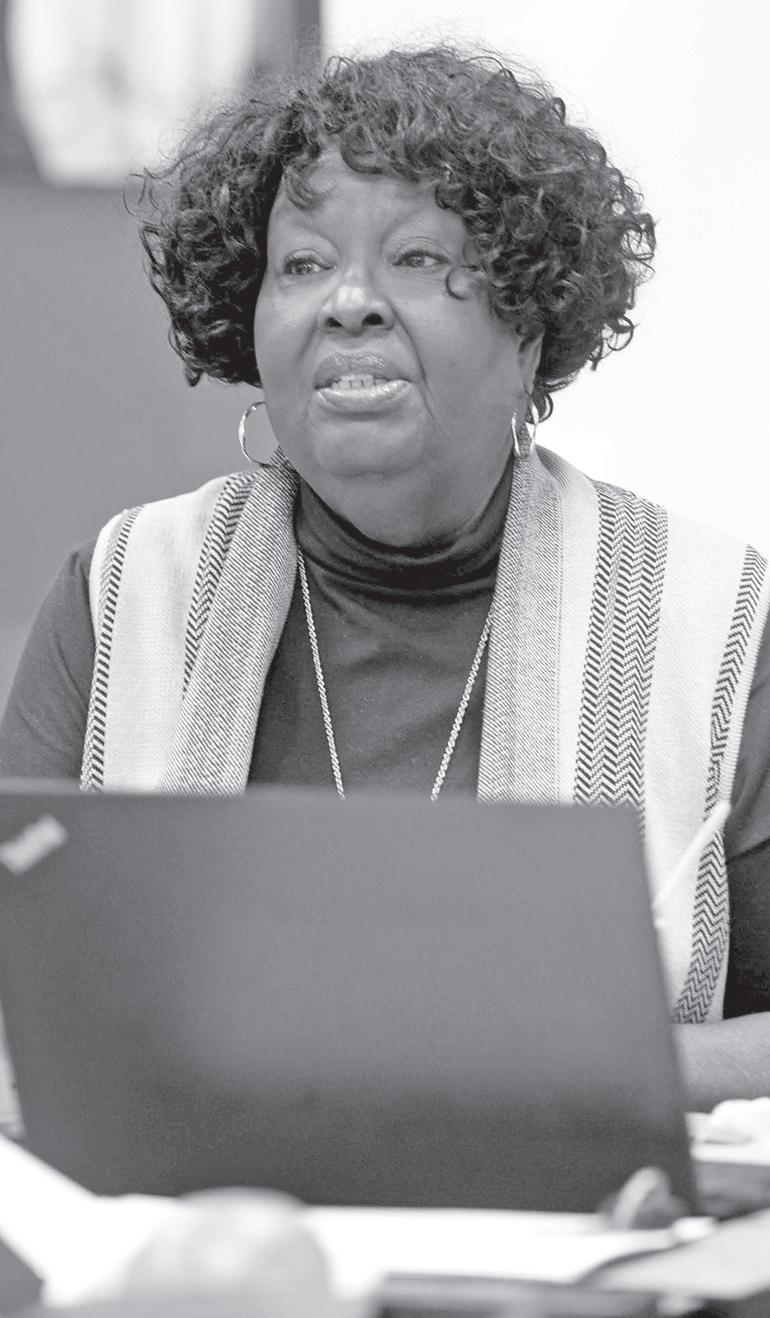
“We had a good, loving, wonderful family, so we were rich – more rich than some of these people who have lots of money,” Keeton said. “We were poor economically and … statistically I should not have been able to get past high school, if I made it that far.”
Keeton beat the educational odds, earning a master’s degree in health administration from Webster University and a bachelor’s degree in interdisciplinary sciences from Saint Louis University. Among her community collaborations, she developed an abstinence-only education project for youth who learned visual arts, performing arts and music creation as an alternative to engaging in sexual activities. She worked with residents living in St. Louis ZIP codes at high risk for chronic diseases to increase health literacy and become active participants in their
own health care. And she enlisted members of the Board of Aldermen to make the case for public health care needs in North St. Louis. She also is the founder and facilitator of Sistah Connection, one of the oldest local breast cancer support groups.
She was a 2012 St. Louis American Salute to Excellence in Health Care award winner and, more recently, served as the keynote speaker at the Homer G. Phillips Nurses Alumni, Inc. annual meeting.
Rikki Takeyama Menn, the Regional Health Commission’s vice president of strategic engagement, said, “As Ms. Keeton plans to retire in 2020, we want to recognize the many years she’s advocated for her community, empowered thousands of patients, and provided a voice for the sick.”
Continued from page 11
leave their home. I believe we will see victory particularly when we realize the many resources that are available.
I will say, to date, the majority of my patients are extremely proactive and align with the recommended preventative measures that are in place for wearing mask and practicing social distancing.
Do you have a previous position that helped prepare you for this work? If so, tell us about that.
I served as the chief medical resident during the last year of my residen-
Continued from page 9
I have been a nurse for 46 years, so my mentors in the early days of nursing were black physicians. Dr. Andrew Spencer would always tell me, “Nurse, stay focused.” He would hand-walk me and talk to me. Judge Edwards, when I was at his school, Innovative Concept Academy – he had a principal, but he ran that school – he had a structure that moved me. And Robin Smith,
Continued from page 5
assistance head nurse and Dr. Garvin for selecting me as an Abdominal Transplant coordinator. I would like to thank both of them for believing in me and for their patience with me as a new leader. They taught me to be accountable and professional and showed me how to be a great leader.
Do you have a previous position that helped prepare you for this work? If so, tell us about that.
My previous position as an Abdominal Transplant coordinator helped prepare me for my current position as Clinical Documentation specialist by teaching me to educate patients and family on pre- and post-transplant care; review of the patient’s medical, surgical, social, and family history; review of the patient’s laboratory and diagnostic testing needed to be listed for transplant and schedule annual testing as needed. This was the
cy training at SUNY Downstate Medical Center in Brooklyn NY. It prepared me for such a time as this, and I am forever thankful to my then Department leaders, Drs. DeRose, Vincent and Aghabi. Hindsight is 2020, as I appreciate and value now more than ever the periods during my family medicine residency training where the workload was extremely challenging.
Mentors are crucial to the development of a successful professional. Tell us about a mentor and how that person guided you.
Hands down, my mother was my most valuable mentor. She would always share a quote with me: “Good Better Best, Never Stop Until Your Good is Better and Your Better is Best” (unknown author).
Missouri voters have an opportunity to expand Medicaid with Amendment 2 on the August 4 ballot. Expand Medicaid in Missouri – yes or no? Why or why not?
I will vote Yes on Amendment 2 which will allow more uninsured adults to have access to health care and the ability to seek health care earlier. Voting Yes for Amendment 2 will ultimately reduce the rising cost of health care in Missouri. More persons would be able to seek primary and secondary preventive care before disease processes begin and reduce acute care visits to the Emergency Department.
Is there anything about your personal life that you would like to share with the public celebrating your award?
To God Be the Glory. I truly know my purpose in life and have an amazing supportive fan club –my extended family, friends and faith community. You all know who you are and what you mean to me!
To David, my husband and best friend for 30 years, Elayna and Emmanuel, aka “Manny,” my awesome children, you all are my inspiration.
Thank you to the Board of Directors, Mrs. Angela Clabon, CEO, executive leadership team, entire CareSTL Health staff, and patients for your support.
Thank you to The St. Louis American newspaper for selecting me as a 2020 honoree and for all you do for the community.
Lastly, I am an avid skater, and soccer is my favorite sport.
the program director at BASIC, told me, “Nurse, you’ve got to remember your clientele.” A lot of our staff are recovering addicts, but I never, ever used drugs.
Do you have a previous position that helped prepare you for this work? If so, tell us about that.
I was one of the first black nurses who went to work at Washington University. I worked as a clinical research nurse when there were only two black nurses there. And I was a travel nurse in California for five years. It was so shocking. I worked in mental health, so I encountered a lot of
beginning of my documentation journey.
Tell us about your experiences as a student that prepared you for this work.
I worked on the General Surgery unit on the weekend as a student nurse. This allowed me to interact with patients and family, as well as develop my nursing skills and to develop a working relationship with the physicians, nurses and unit secretaries.
Missouri voters have an opportunity to expand Medicaid with Amendment 2 on the August 4 ballot. Expand Medicaid in Missouri – yes or no? Why or why not?
I vote yes to expand Medicaid. I believe that everyone should have access to health care regardless of their socioeconomic status.
Is there anything about your personal life that you would like to share with the public celebrating your award?
I am married to Robert Carter and we have five children and six grandchildren. I volunteer at Faith Miracle Church as director of Health Care Ministry.
drug-induced psychosis that prepared me for BASIC.
Tell us about your experiences as a student that prepared you for this work.
As a young high school graduate, I went straight to nursing school at the St. Louis Municipal School of Nursing. We were St. Louis City Hospital Number 2 School of Nursing, which became the Homer G. Phillips Hospital School of Nursing, but then they merged in 1969. When they knew you came from City Hospital, they would say, “Give her a job,” so I got a job in the Emergency Room at Homer G. Phillips.
Continued from page 7
Tell us about your experiences as a student that prepared you for this work.
I am still a student to this day, always pushing my limit, growing my skills, ability and knowledge to ensure I show up as my best self.
Missouri voters have an opportunity to expand Medicaid with Amendment 2 on the August 4 ballot. Expand Medicaid in Missouri – yes or no? Why or why not?
Absolutely. Expansion of Medicaid will allow over one quarter million Missourians at or below the federal poverty level to access health insurance. This insurance will allow them the capacity to seek medical care in a timely fashion. This will reduce the incidents where people wait until they are advanced in ill-
Missouri voters have an opportunity to expand Medicaid with Amendment 2 on the August 4 ballot. Expand Medicaid in Missouri – yes or no? Why or why not? Yes, I think we should.
Is there anything about your personal life that you would like to share with the public celebrating your award?
I have always been from the North Side, North City. I live in North City. I get up in the morning and walk the streets, pick up trash. We have flowers on our streets. I rode bicycles everywhere I went until I was 32 years old.
ness before they are forced to seek treatment often times in an emergent fashion. Just as important, this will enable Missouri to create more jobs while allowing for healthier Missourians.
Is there anything about your personal life that you would like to share with the public celebrating your award?
Our past influences us. Our present decisions influence what we become in the future. We just have to find those that believe maybe more than we believe in ourselves.
Is there anything else you would like to add about health care or your work?
In unprecedented times like this of COVID-19 and racial inequalities, our resiliency, compassion and passion paired by collective talent and love for one another will get us through the toughest of times.
Continued from page 7
Mentors are crucial to the development of a successful professional. Tell us about a mentor and how that person guided you.
The mentor that guided me was my very first preceptor while in nursing school. Her name was Vickie. No matter what the situation was, she always remained calm. Being a nurse, you can see situations go from good to bad really quick, but she always taught me to keep my cool and never let them see you sweat. You always want the patient and family to feel confident in the nurse and their abilities provide excellent care and, in many cases, save their lives. If they see the nurse lose it, it will be more difficult for them to focus on getting well.
Do you have a previous position that
Continued from page 13
roles and responsibilities and they are consistently going above and beyond their normal duties to ensure the most current information and practices are disseminated to all.
COVID-19 has disrupted all of our work and lives. How has it disrupted your work, and how are you adapting?
A pandemic is what our team is designed for! However, it has caused us to re-think the way we now have to consider emergency response operations and protocols, particularly because there is no vaccine or other medication to counter it; and it’s communicable. We have had to brainstorm internally as well as with regional partners to consider nonpharmaceutical mitigation measures that we may not have had to think about before and how these measures must be incorporated into EVERY area of our lives. A big challenge is that public health has to consider every person and every function of everyday life; and every situation and circumstance does not fit under one umbrella.
Mentors are crucial to the development of a successful professional. Tell us about a mentor and how that person guided you.
One of my many mentors is a former boss. He shared with me some of the same challenges that he had experienced throughout his career, similarities that have extended beyond just working in the same profession. The
helped prepare you for this work? If so, tell us about that.
I started out as a patient care tech on a Med-Surge Trauma floor, where I became a nurse, charge nurse and assistant manager. Working trauma for over 15 years helped me to develop critical thinking skills. It can mean a person’s life. Although I do not have patient contact anymore, those same critical thinking skills are used daily when trying to provide the veteran with the right provider for his needs. Working behind the scenes coordinating care is a very important factor in the well-being of the patient.
Tell us about your experiences as a student that prepared you for this work. I remember as student a patient went into cardiac arrest. She was a young woman who had just had a baby. At this time there where new rules on allowing the family to be present during a code. I was never in favor of this. Non-medical family members are
most important key factor that I have found, and I want to continue to mimic him in, is the fact that he took the time to listen to my concerns and then did something! He also offered solutions and recommendations when I may not have been going in the direction that I needed to be going in. He wanted to see his staff succeed, so he encouraged us, he made sure to offer recognition and appreciation to whom it was due. I do my best to pattern my management style after what I have learned (and am still learning) from him.
Do you have a previous position that helped prepare you for this work? If so, tell us about that.
Before I became an Emergency Response planner and ultimately the manager, I was in emergency communications. I have been in some form of emergency response for over 20 years.
I was a full-time (and currently still a part-time) emergency 9-1-1 police dispatcher. Emergency communications has taught me that everyone has to be considered the same. Just like in public health, it doesn’t matter what our race, economic, social, religious, sexual preference or status is; when a person dials that number, they are in need of HELP! And I’ve taken calls from the richest person to the person who may be living on the street, and it is my duty to make sure that I treat them all the same in order to get them the help that they need. Police dispatching has also prepared me for my current role because I have been able to see and understand that not everyone is educated or has an awareness of the importance of knowing what they can do, as an individual, to help prevent life-altering situations in their lives. That is why I am passionate
led by emotions, in my opinion; no matter what we do to save their loved one, it will never be enough. The lady was gone and the doctors did all they could to save her, but the husband was not satisfied. After all he had this brand-new baby that he now would have to care for alone. Over an hour I watched them work on her, and they knew she was gone. It was because the husband was there and demanded that they not stop.
Long story short, it became an ethical issue. I realized then that, no matter what, do not make promises to patients and/or family members and always be honest. They may not want to hear the news, but giving them false hope only makes matters worse. So, to this day, I am very upfront and honest with my patients. I speak with love and understanding but mostly with truth.
On a personal level. I was a single mother with four children when I started nursing school. I was in my early 30s and I wasn’t as young nor did I think I was a smart as my classmates. But I had
about education and getting the proper information to the masses.
Tell us about your experiences as a student that prepared you for this work. As an emergency dispatcher, I was attending a Hazardous Materials Awareness course for dispatchers at the police academy. The instructor, at that time, was an Emergency Management specialist who was also a former police dispatcher. This was the first time that I heard of Emergency Management and became curious about the profession. I was also a volunteer with the St. Louis Chapter of the American Red Cross Disaster Services and came across the School for Public Health at St. Louis University. They had a graduate program to obtain a certificate in Biosecurity and Disaster Preparedness. So, I enrolled there with the expectation of only completing the 15-credit-hour graduate certificate. As I was completing my courses, I soon realized the benefits of completing the entire Master’s program, so that is what I did; and it has indeed prepared me for exactly what I do now! As a graduate student, the courses opened up my eyes to the potential public health related disasters and emergencies that can happen. And who would have thought? My experience, education, and training has prepared me for exactly this; and now I will have an even better understanding, respect, and appreciation for those in my profession, health care, emergency responders, and many others. This pandemic has indeed showed us how we all are connected and must work together and rely on one another.
Missouri voters have an opportunity to expand Medicaid with Amendment
God on my side, I worked hard, and here I am. I have people close to me who had counted me out, but God had another plan for my life. I would like for young single mothers to know that they can be anything they want to be in life. I’m living proof.
Missouri voters have an opportunity to expand Medicaid with Amendment 2 on the August 4 ballot. Expand Medicaid in Missouri – yes or no? Why or why not?
I have no problem with Medicaid expansion. It will probably mean higher taxes for me and others, but if it will give opportunity for those less fortunate than myself, then I’m on board.
Is there anything else you would like to add about health care or your work?
I am honored to serve the veterans in the capacity that I serve. They have some very fascinating stories, and it makes me heart proud to give back to those the risked it all for me.
2 on the August 4 ballot. Expand Medicaid in Missouri – yes or no? Why or why not?
Absolutely! Medicaid can help with providing many services to those who are in serious need of health care or other services and who can’t afford health insurance or don’t have it. Medicaid expansion will also lessen the uninsured rate so that individuals and families can have the opportunity to receive quality health care.
Is there anything about your personal life that you would like to share with the public celebrating your award?
Yes. I am truly thankful, blessed, and honored, not only for this award, but simply for life. I must say, I know, that it is God which has empowered me to be able to do anything; that it is, alone, by His might, wisdom, and strength and not my own.
Is there anything else you would like to add about health care or your work?
Yes. I would like to encourage everyone to take the time to research and educate yourselves on the programs and services that your local public health departments have to offer, participate in disaster response exercises and events being offered, and take heed to the recommendations and information concerning health care and public health related emergencies. Having a vast knowledge and understanding of how you can do your part, and sometimes it may be a sacrifice or “inconvenient”, but it can certainly help mitigate or reduce the effects that a health concern can have on your own life or the life of someone else.
Continued from page 13
Though COVID-19 is a horrible situation going on it has led my team to touch the lives of hundreds of people and families on a weekly basis. We are now participating in providing free testing for individuals presenting symptoms. We have collaborated with agencies such as Food Bank, Metro Market, and Peoples Family of Corporations to provide fresh produce, fruit, care packages, baby food and more every Friday by drive-through at our Delmar and West Florissant sites.
The disruptive part of COVID-19 has stopped me for taking the students on the College Tour and having summer camp for our youth.
Mentors are crucial to the development of a successful professional. Tell us about a mentor and how that person guided you.
Continued from page 9
to mention the hundreds of coworkers that work side by side with our providers delivering care. It truly takes a village to deliver exceptional service and quality care to our patients and I’m proud of and inspired by the work of our teams daily.
Last but definitely not least, I have the most amazing executive assistant in the world, Bonnie Dickerson, who helps me juggle all of my responsibilities and truly provides exceptional support.
COVID-19 has disrupted all of our work and lives. How has it disrupted your work, and how are you adapting?
Being in primary care, I believe we are on the front lines of supporting our communities through this pandemic. That includes everything from providing education to address patient concerns, helping them understand the best clinical options available and promoting safe and responsible practices (i.e. hand hygiene, wearing masks, social distancing). At the same time, it is equally important that we take care of one another during this time both in terms of physical and emotional support. As the leader over primary care operations, I take supporting the safety of my community and my teams very seriously.
And to balance those priorities, we have had to do a number of different things in order to continue to provide care in a safe manner. Some of those things we implemented because of Covid-19 are as follows:
• Implementation of video visits which
My mentor has encouraged and empowered me to be the best me. He saw potential in me that I overlooked and to this day, it amazes me how I’ve been able to pull these attributes out and bring them in tuition to make a difference. I would watch him and be amazed at how he was able to accomplish so much and still love and enjoy what he did. I wanted that same feeling and outcome. So, I started speaking with him often about my goals, visions and seeking advice on how I could make a difference. He would in turn give me useful feedback, positive criticism and allow me to shadow him during events or interaction with top executives. With this guidance, I pride myself in knowing I too can make difference in someone’s life, just my being compassionate in what I love.
Do you have a previous position that helped prepare you for this work? If so, tell us about that.
I would have to say as a student at Tennessee State University, I worked with
young people in the capacity of the Boys and Girls Club of America. This afforded me the opportunity to work with children and their families in which I gained a plethora of experience working with low income families. This assisted me in being creative when it came to resources in order to assist these families. I also gained knowledge and experience in developing and implementing programs that fit specifically to those individuals in which I served.
Tell us about your experiences as a student that prepared you for this work. While attending Tennessee State University I studied day in and day out, which I am grateful that I’m still able to retain a lot of the knowledge that came my direction from professors and peers. Knowing what I wanted to do at a young age, I made sure I kept my focus on the specifics of the “who and how.” Who can I help? How can I help them? I then began to volunteer. This put me in direct contact with so many people who was
experiences hardships in many different areas. Being up front and personal with these situations has allowed me to be able to meet the people where they are. I’ve gained the familiarization of knowing exactly how to gather resources that will impact families in a great way.
Is there anything about your personal life that you would like to share with the public celebrating your award?
The thing that inspired me to want to help others derived from my freshman year in high school. There was a counselor who unfortunately overlooked over certain students. Unfortunately, all the attention was more focused on the A and B students, leaving other students to fall through the gaps, be dismissed, left with no resources, and no one to help push them to their highest potential. I knew this was no way any child or any person should be treated. From that moment on, I knew that I had to find a way to make a difference. I needed to be that voice, that person to say: I see you, how can I help?
allowed us to provide care to our patients even during the height of the spread of the disease within our community.
• Modifications to the registration and check in processes to allow for more self check-in or advance check-in over the phone to minimize unnecessary contact.
• Implementing additional measures to greatly reduce/eliminate crowds in the waiting room and ensuring the appropriate distance between seats when waiting did occur.
• Installation of plexiglass at check-in/ registration desks.
• Wearing of appropriate masks and other PPE when necessary when providing care.
• Temperature and symptom checks before entering our clinics and facilities.
• From an administrative perspective, more video conference calls versus in person meetings.
Overall, while some of these things are not ideal, they are necessary to ensuring everyone’s safety while allowing us to still provide the necessary care. And given our patient-first philosophy, we understand the importance of these measures and therefore have embraced them for the good of our community.
Mentors are crucial to the development of a successful professional. Tell us about a mentor and how that person guided you.
I’ve been fortunate to have both informal and formal mentoring relation-
ships throughout my career. One of my current mentors is a phenomenal and influential executive leader within my organization. She has always been an advocate, supporter/encourager and role model for me. When dealing with difficult professional situations, I can always count on her for sound guidance as I navigate through those challenges. And I value the personal investment that she is making in me to help me develop and excel as a leader.
Sometimes as leaders, I think we tend to undervalue the importance of mentorship, especially as we progress in our career. I personally think that as you progress, the more valuable those mentoring relationships become to your growth and development.
Do you have a previous position that helped prepare you for this work? If so, tell us about that.
I think my clinic internship that I had in graduate school really cemented my love for clinic operations but also assisted me in developing the critical thinking skills and collaborative skills that have really become hallmarks of my leadership style. And while over 15 years ago, I still remember many of the lessons that I learned in that role and the wonderful leader that I had at the time.
Tell us about your experiences as a student that prepared you for this work. I received a wonderful education from Washington University and Washington University School of Medicine. In addition, it really propelled me into a new and diverse world. As someone who grew up in a working-class family with limited exposure to other cultures, I did not have a lot of
opportunities growing up but I had a lot of love and support from my family who valued a good education. Then to have a collegiate and graduate experience as rich and diverse in culture based on the new relationships that were formed really enhance me personally. Another important life lesson: the value of diversity in shaping our perspectives, what we advocate for and how we value/respect one another.
Missouri voters have an opportunity to expand Medicaid with Amendment 2 on the August 4 ballot. Expand Medicaid in Missouri – yes or no? Why or why not? Yes. I’m a supporter of measures that provide greater healthcare coverage to those who need it. It saddens me to know that so many people avoid the care they desperately need because of lack of coverage/funding. And while there are lots that we as healthcare providers can and should do to provide solutions for those that are uninsured/underinsured, those efforts only go so far at truly meeting the need.
Is there anything about your personal life that you would like to share with the public celebrating your award?
I’m humbled and grateful for this award but have to acknowledge that it would not be possible if not for God and the wonderful village he has surrounded me with including my husband, Les Jewell, our wonderful boys, my parents and my close friends affectionately known as the Clik.
Is there anything else you would like to add about health care or your work?
I would just like to personally thank Dr. Jason Hand and Jeff Johnston for nominating me for this award.
